GeckPhotographer
Very Well-Known Member
So over most of January and February of this year I was staying in the southern Kimberley region of Western Australia.
I was here to assist an honours student working on V. panoptes and while this took up most of each day I also managed to get around a little of the local station I was staying on to see a variety of other cool things.
While the main project was on only Yellow-spotted Monitors a variety of other species were present and of interest.
Spotted Tree Monitors were commonly seen basking on tree trunks, but were usually quick to move into a hollow when disturbed. Occasionally they were found low hollow dead trees.
These animals apparently display pattern similar to typotypic animals from near Broome and likely represent 'true' V. scalaris.
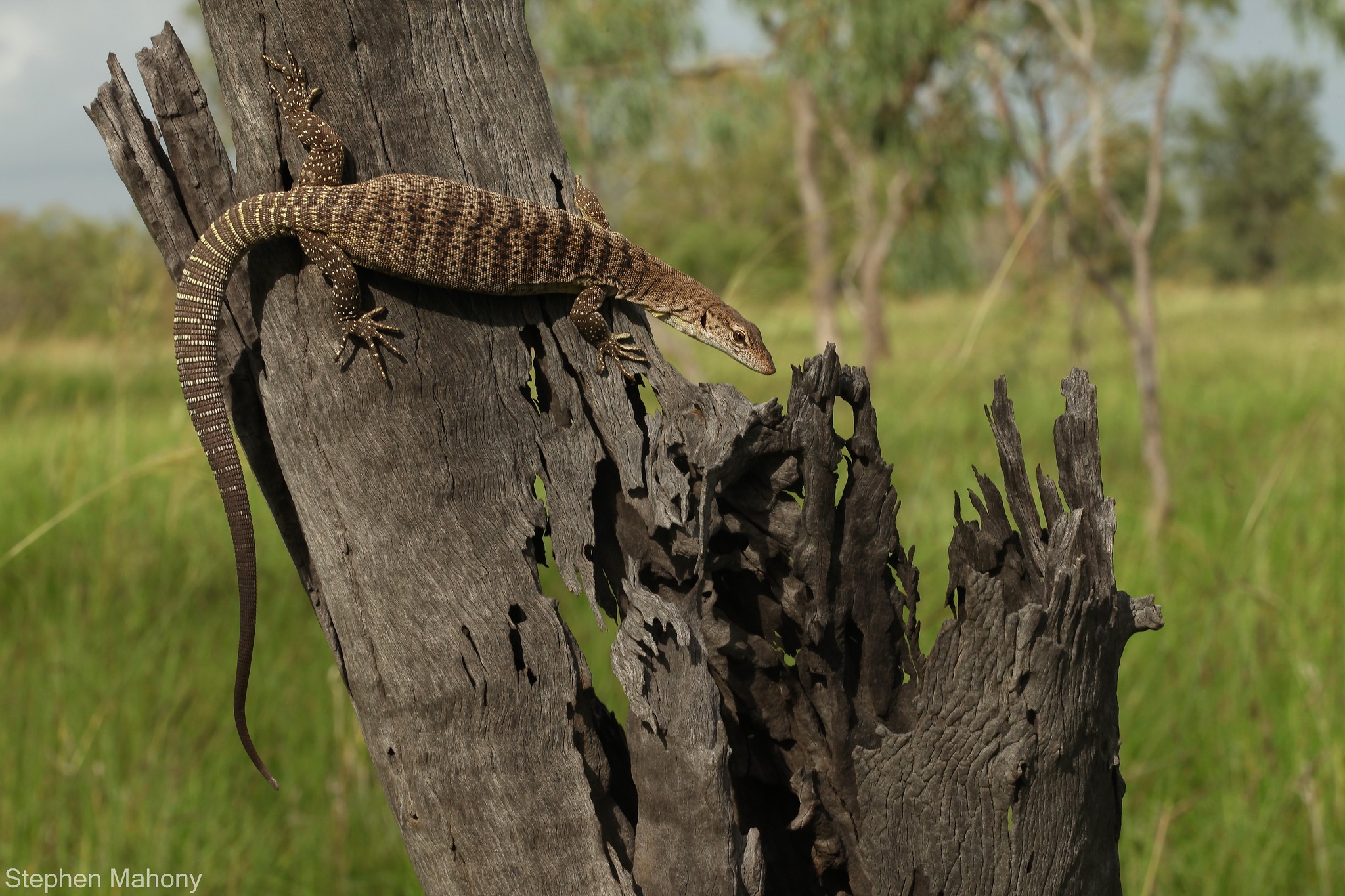 Varanus scalaris by Stephen Mahony, on Flickr
Varanus scalaris by Stephen Mahony, on Flickr
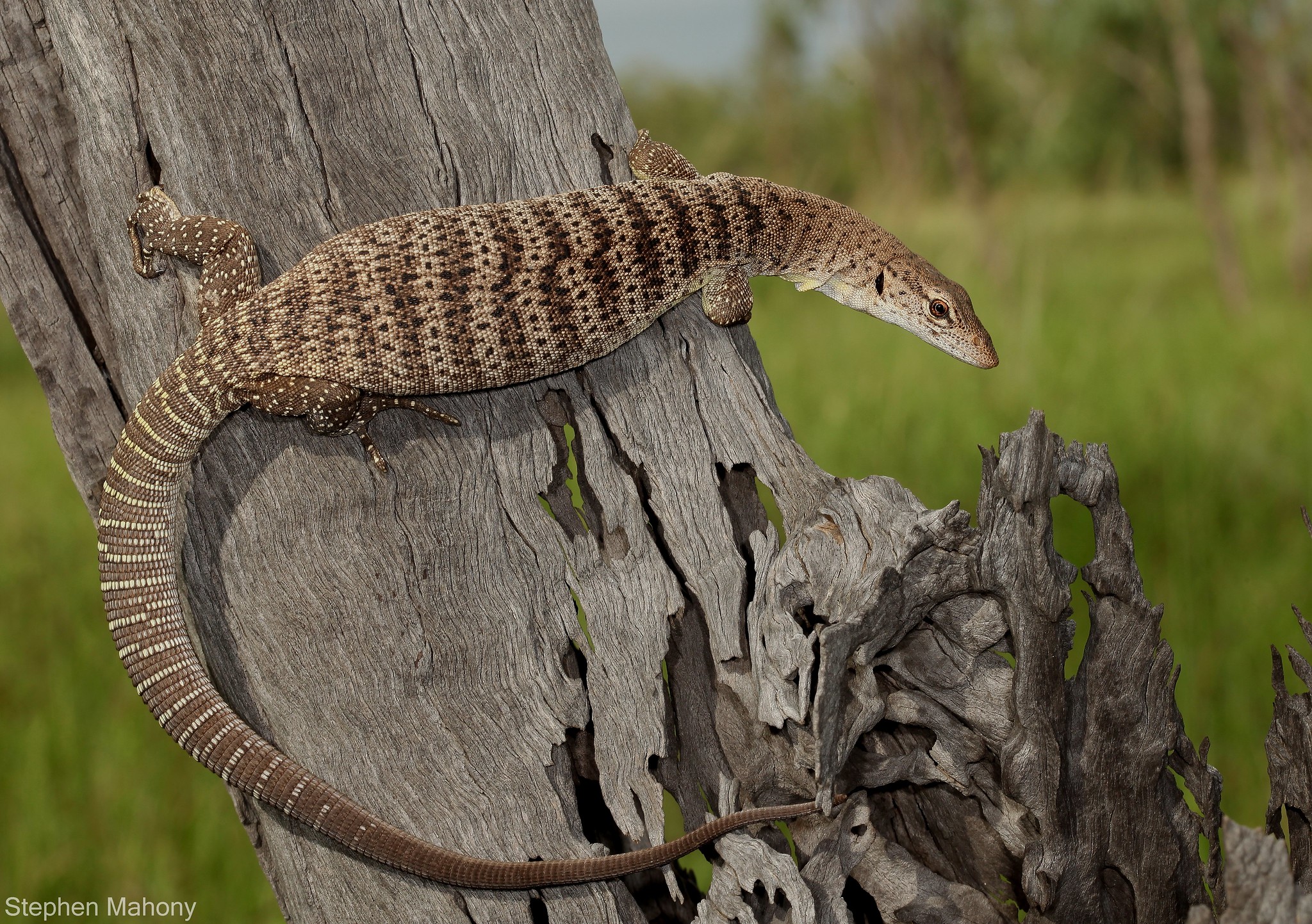 Varanus scalaris by Stephen Mahony, on Flickr
Varanus scalaris by Stephen Mahony, on Flickr
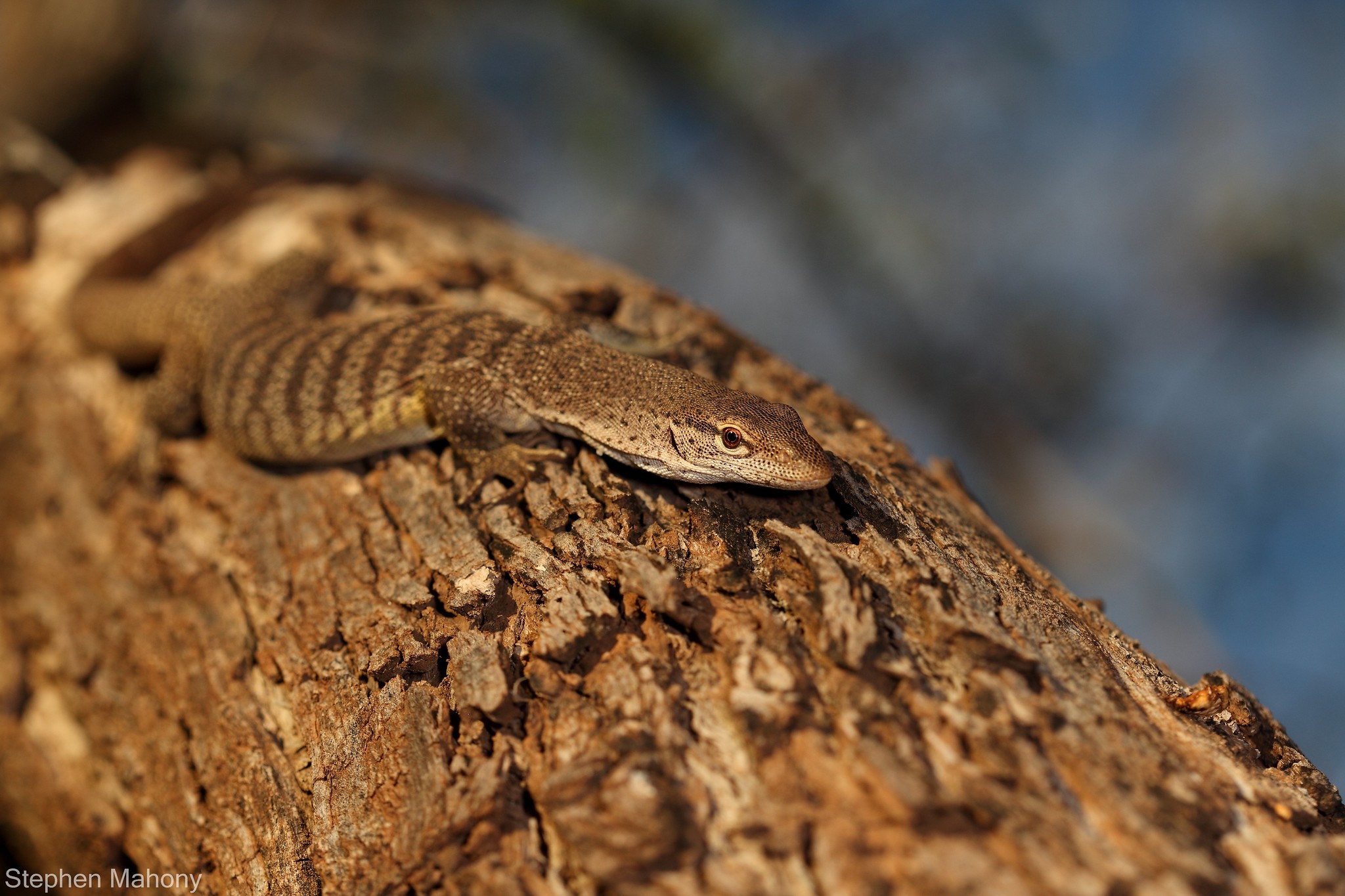 Varanus scalaris by Stephen Mahony, on Flickr
Varanus scalaris by Stephen Mahony, on Flickr
Another common varanid were Mitchell's Water Monitor. These were often observed clambering through mangrove-esque flooded riparian vegetation and jumping into the water as we trudged through such areas to find Yellow-spotted Monitors. While a dead Merten's Water Monitor was found on a local road none were observed in this habitat despite a large portion of time spent in it.
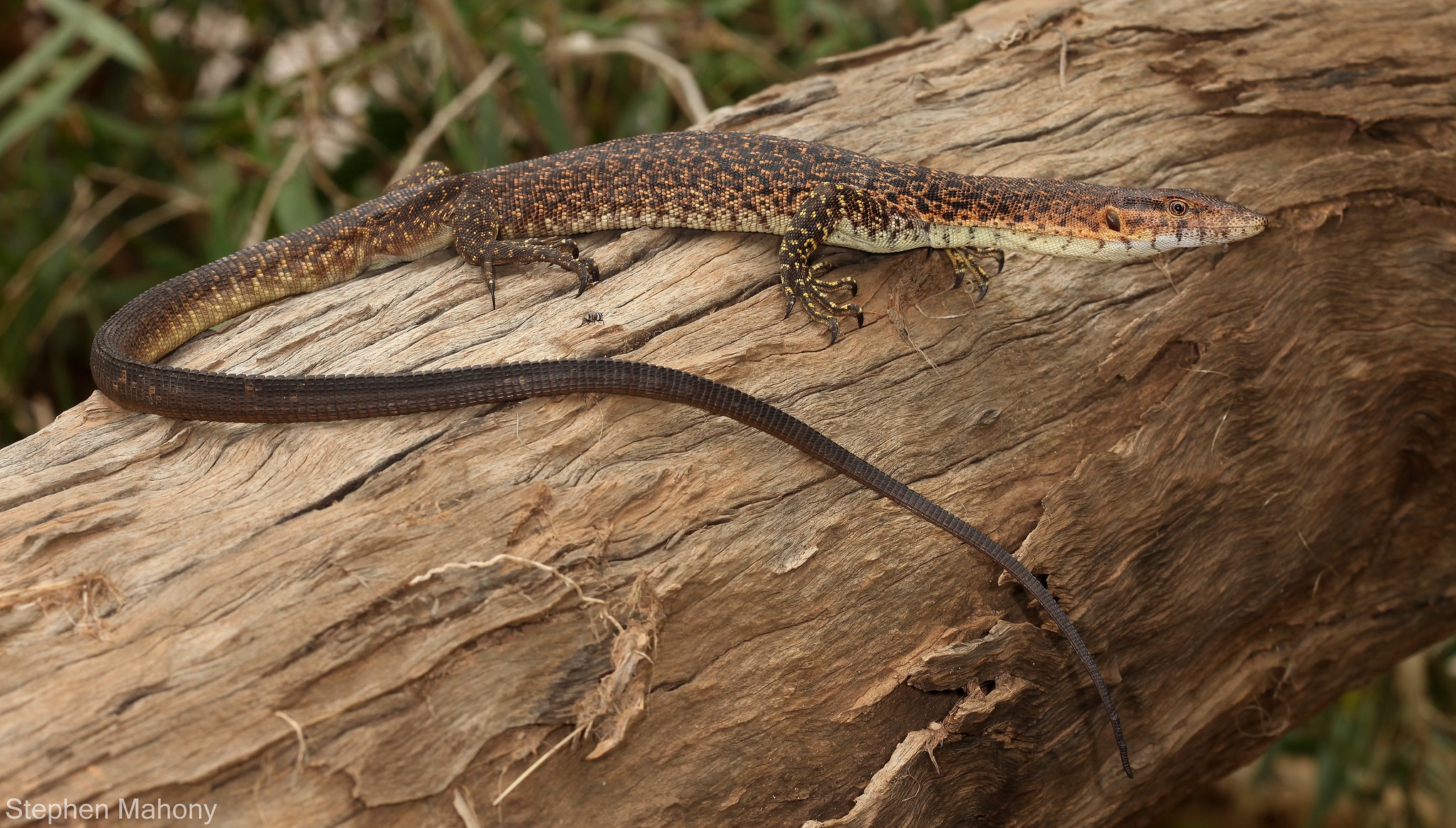 Varanus mitchelli by Stephen Mahony, on Flickr
Varanus mitchelli by Stephen Mahony, on Flickr
Gould's Sand Monitors weren't found in our study area but were abundant around the area we were living in.
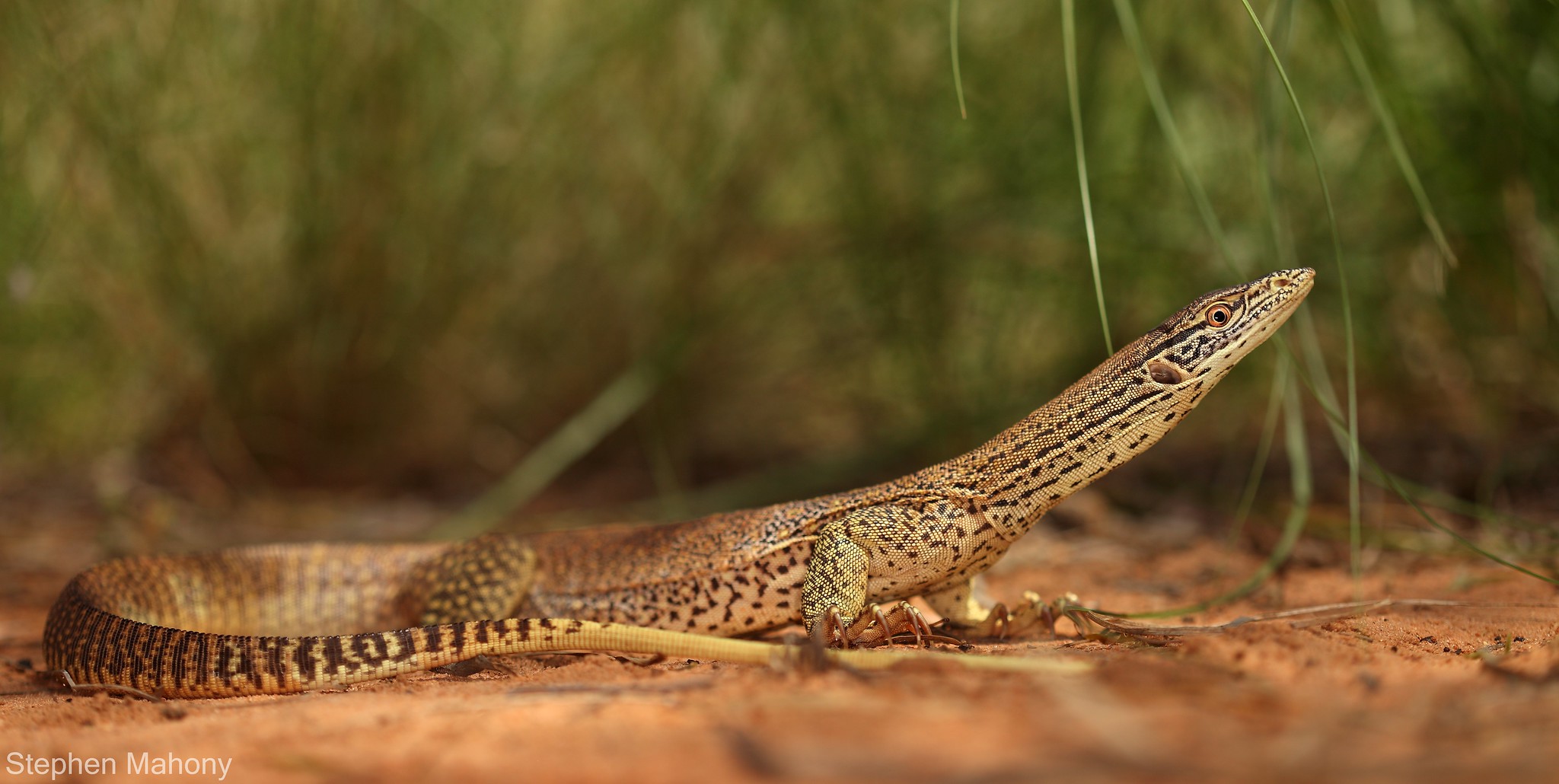 Varanus gouldii by Stephen Mahony, on Flickr
Varanus gouldii by Stephen Mahony, on Flickr
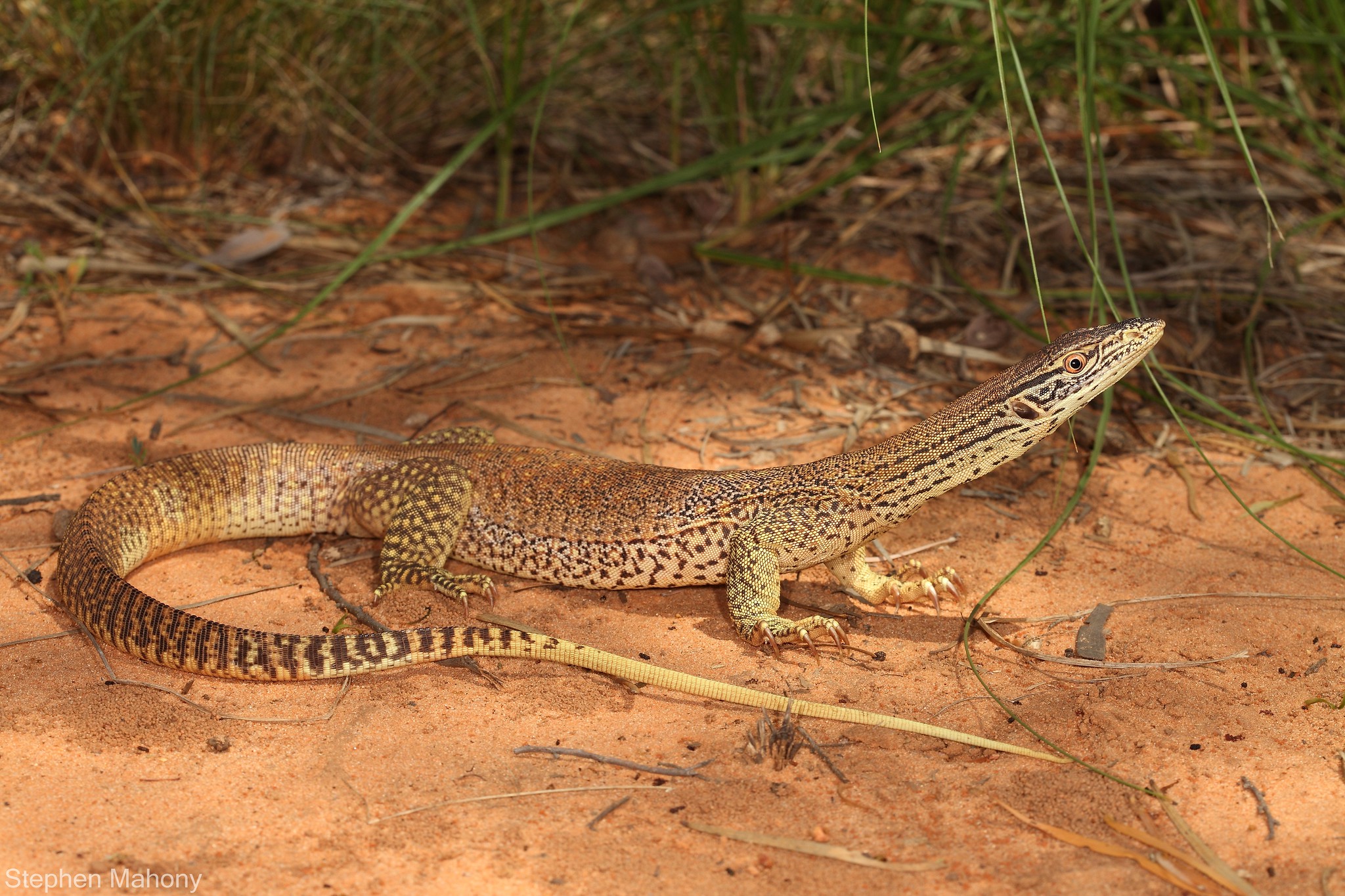 Varanus gouldii by Stephen Mahony, on Flickr
Varanus gouldii by Stephen Mahony, on Flickr
These have really nice pattern.
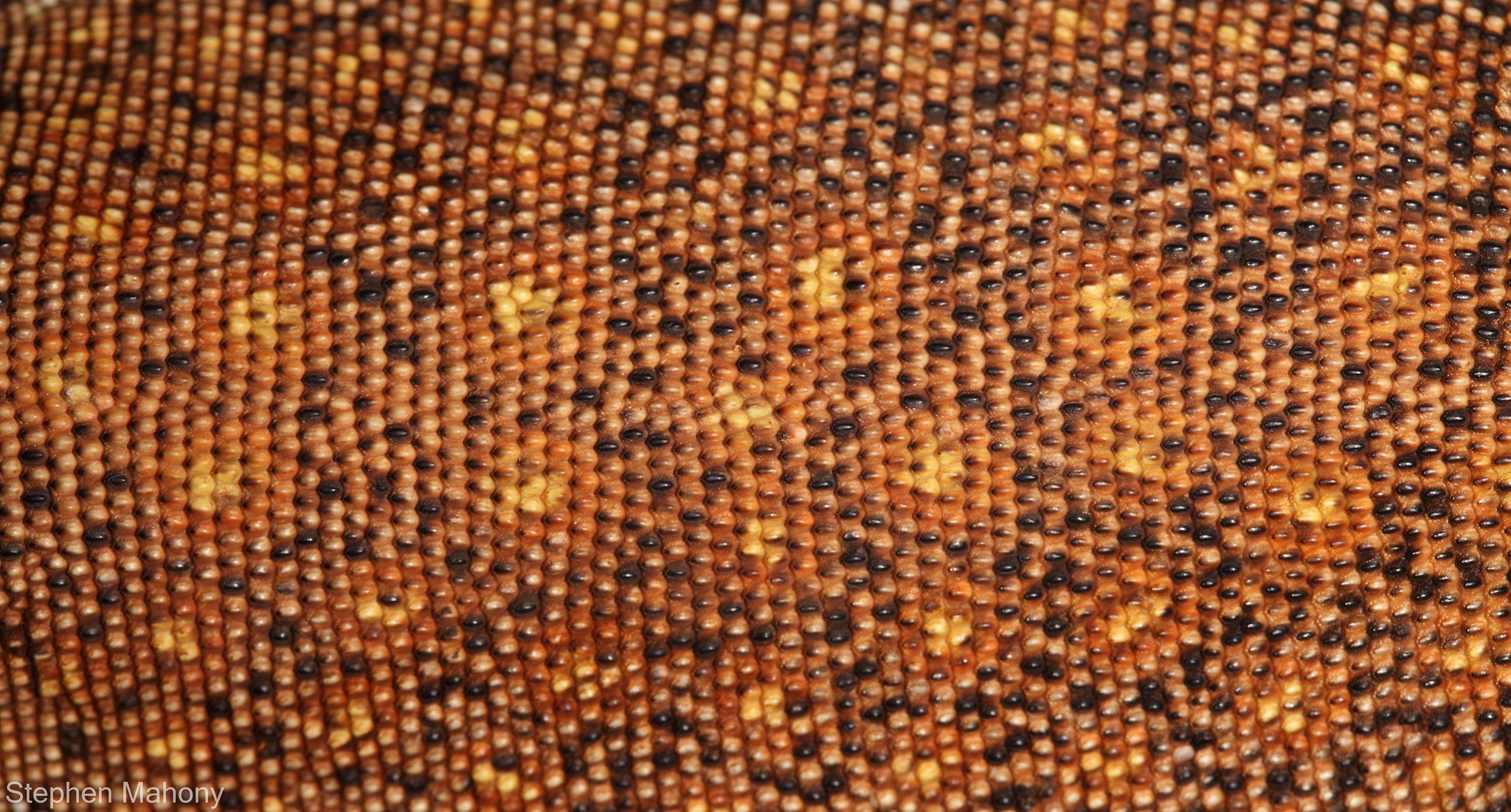 Varanus gouldii by Stephen Mahony, on Flickr
Varanus gouldii by Stephen Mahony, on Flickr
Another monitor with nice pattern were the Ridge-tailed Monitors, sometimes found in the buildings where we were or the rocky outcrops around.
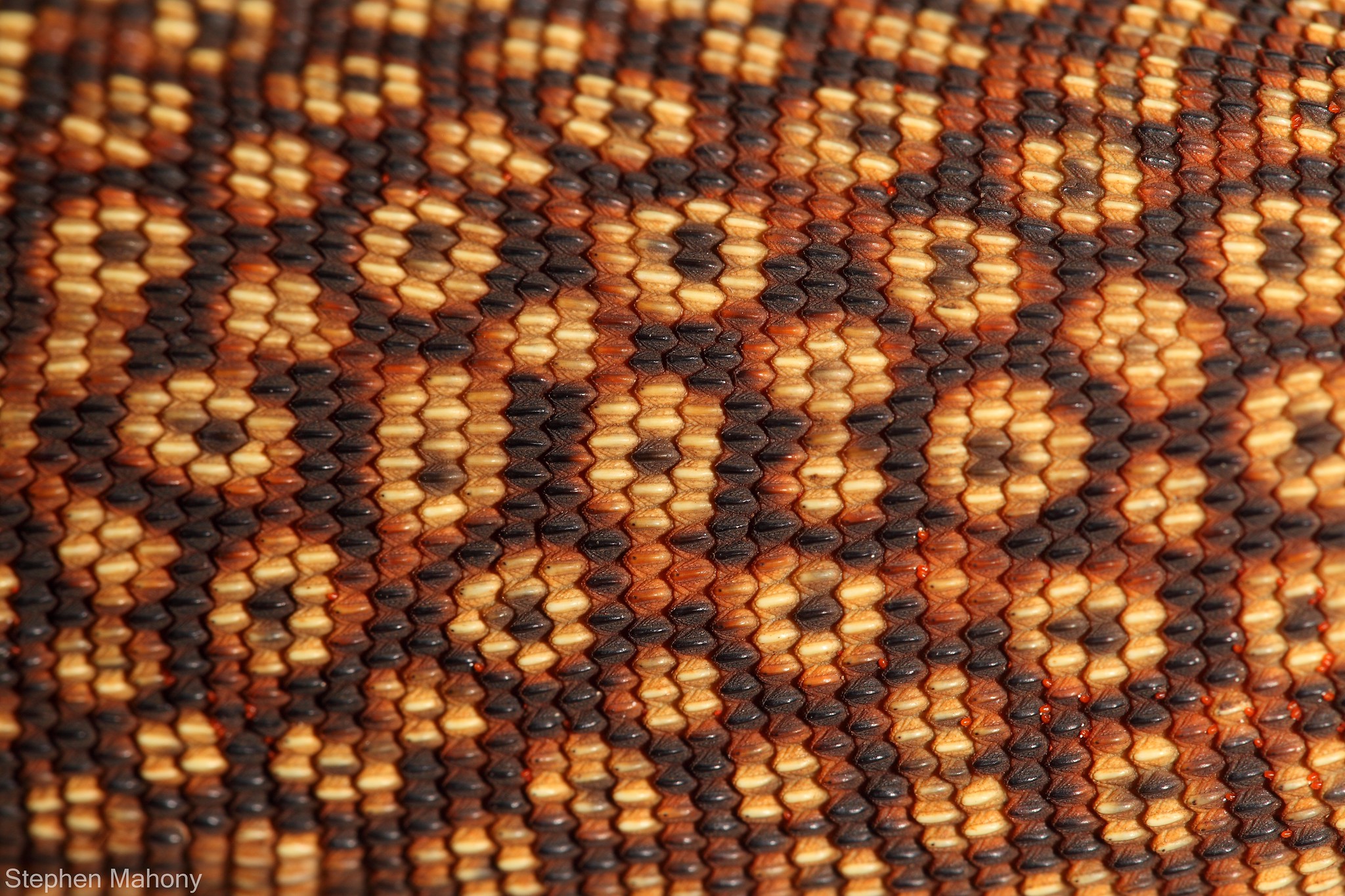 Varanus acanthurus by Stephen Mahony, on Flickr
Varanus acanthurus by Stephen Mahony, on Flickr
Few individual Elapids were seen of any species bar Mulgas (which I didn't photograph despite seeing 20+), despite this an ok diversity was present.
I saw two Northern Shovel-nosed Snakes both of which appeared very different in colour and pattern.
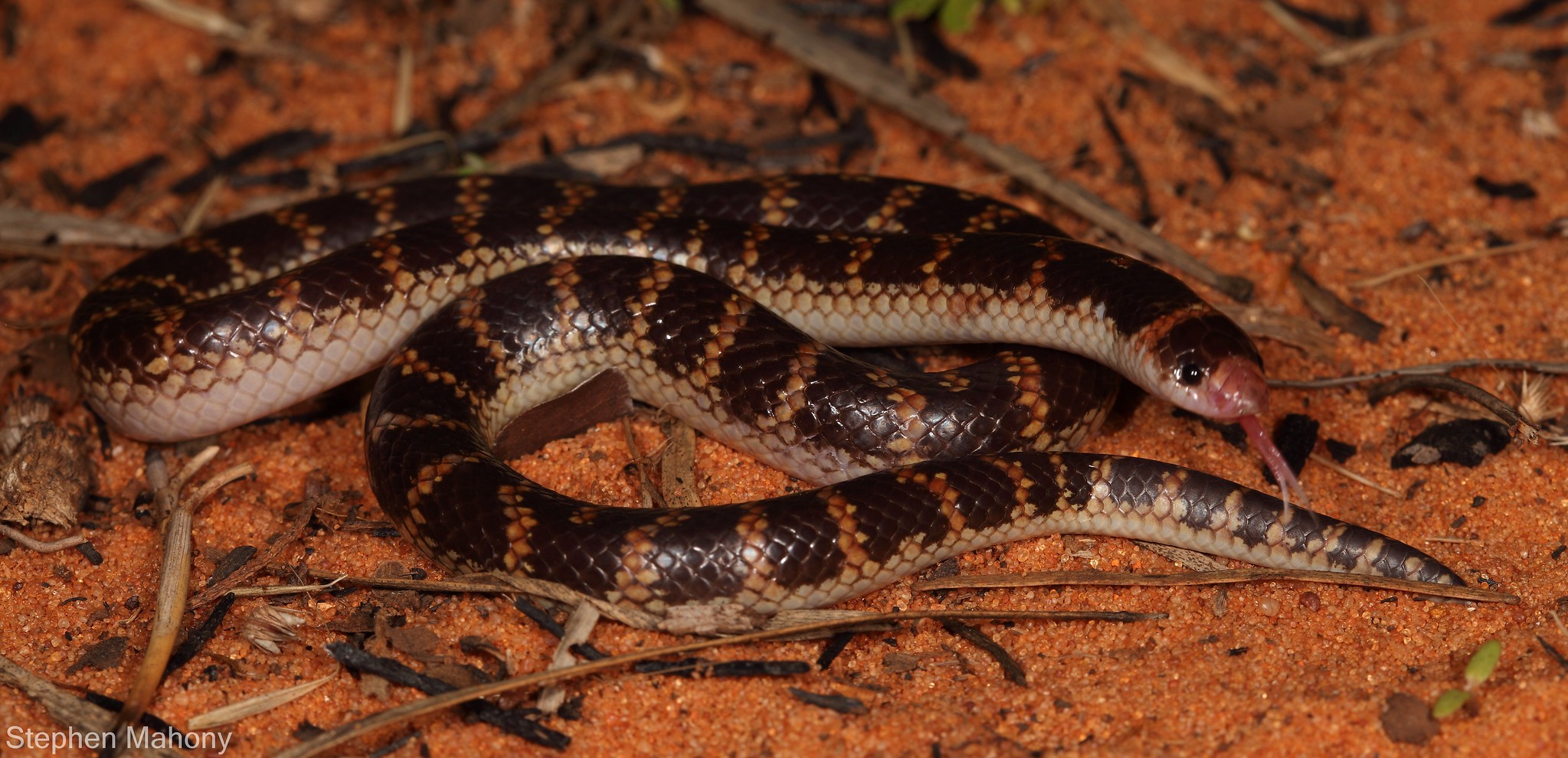 Brachyurophis roperi by Stephen Mahony, on Flickr
Brachyurophis roperi by Stephen Mahony, on Flickr
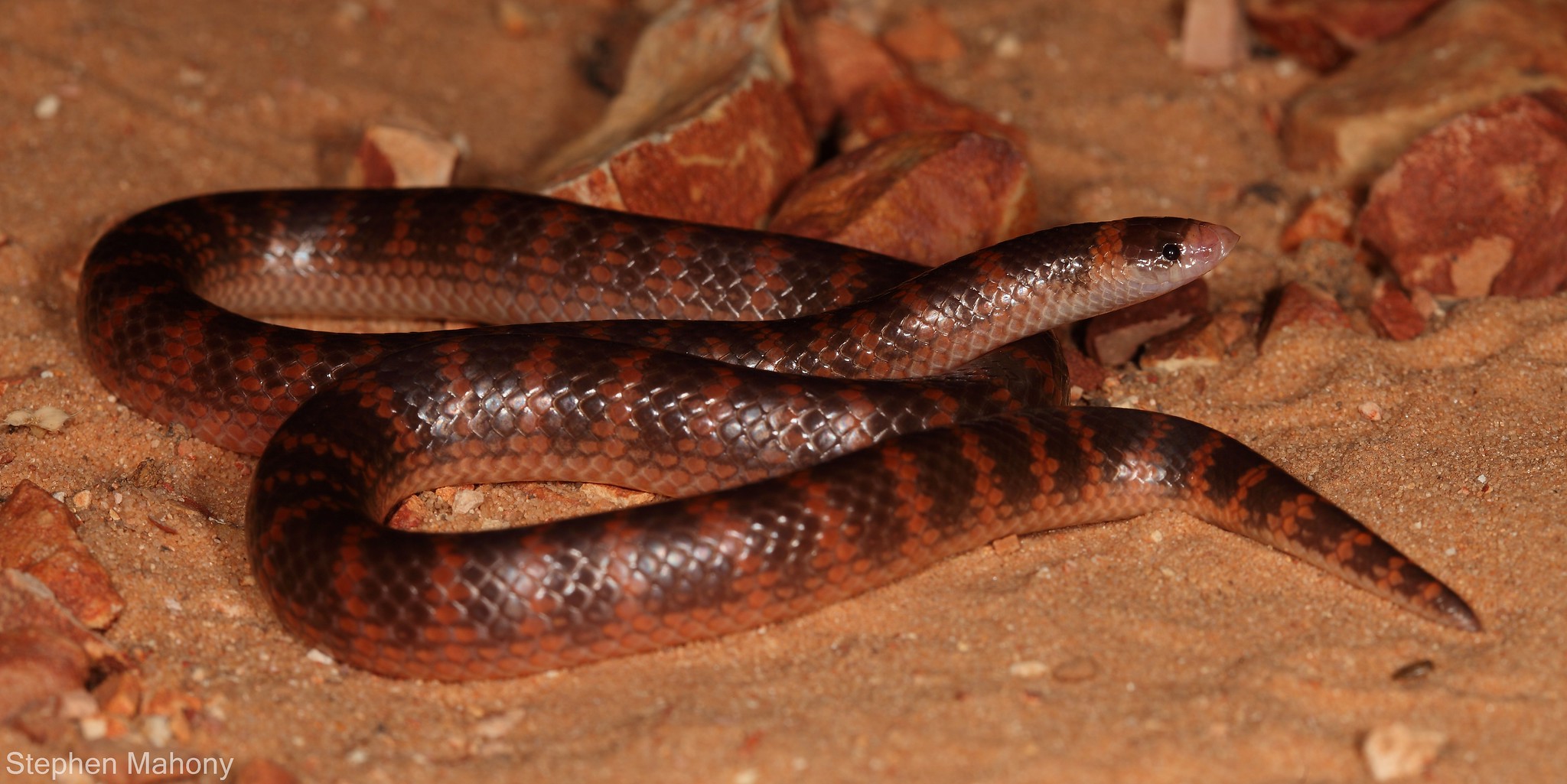 Brachyurophis roperi by Stephen Mahony, on Flickr
Brachyurophis roperi by Stephen Mahony, on Flickr
Little-spotted Snakes were found active on some nights.
 Suta punctata by Stephen Mahony, on Flickr
Suta punctata by Stephen Mahony, on Flickr
 Suta punctata by Stephen Mahony, on Flickr
Suta punctata by Stephen Mahony, on Flickr
This young Western Brown was on the Verandah before being moved further into the bush.
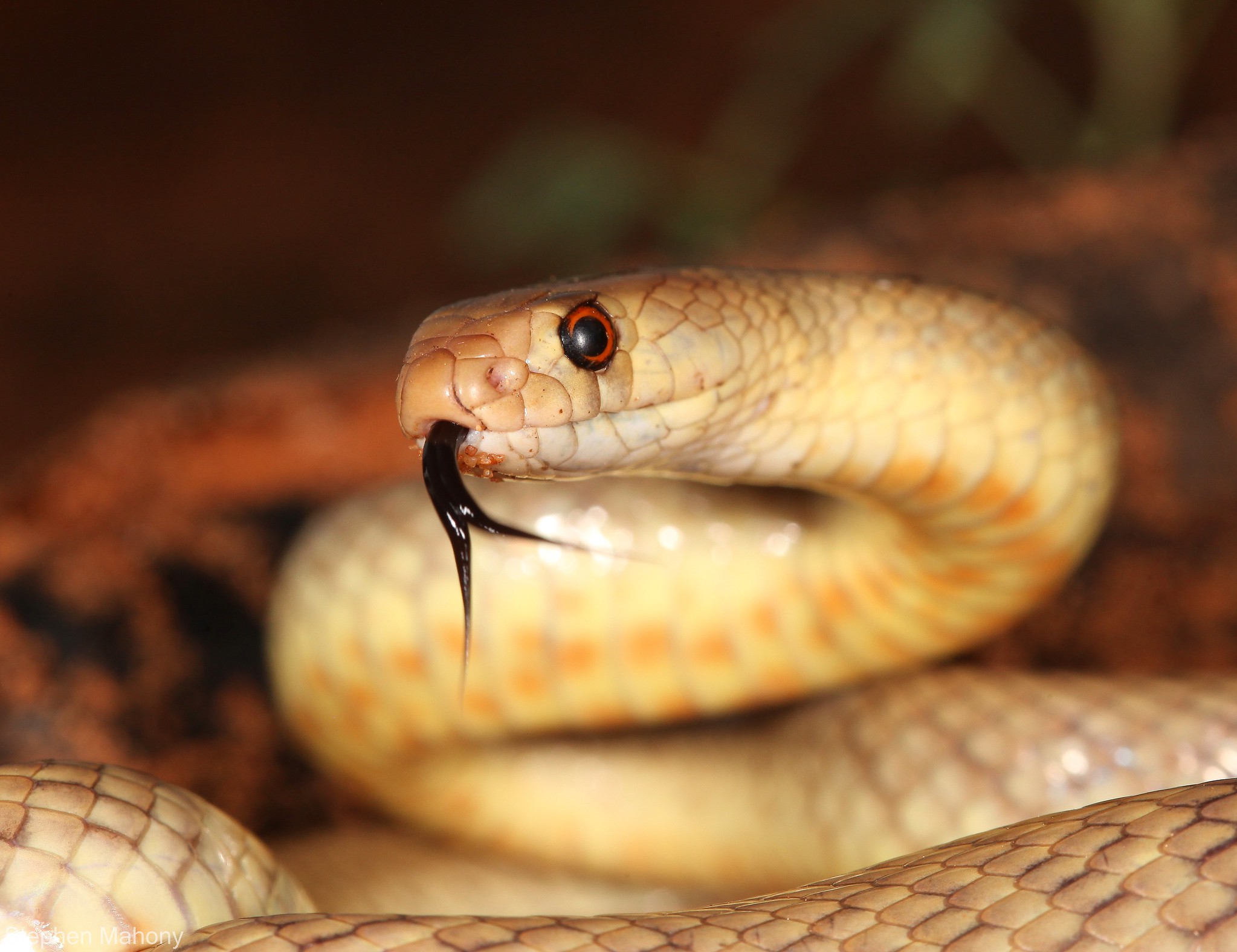 Pseudonaja mengdeni by Stephen Mahony, on Flickr
Pseudonaja mengdeni by Stephen Mahony, on Flickr
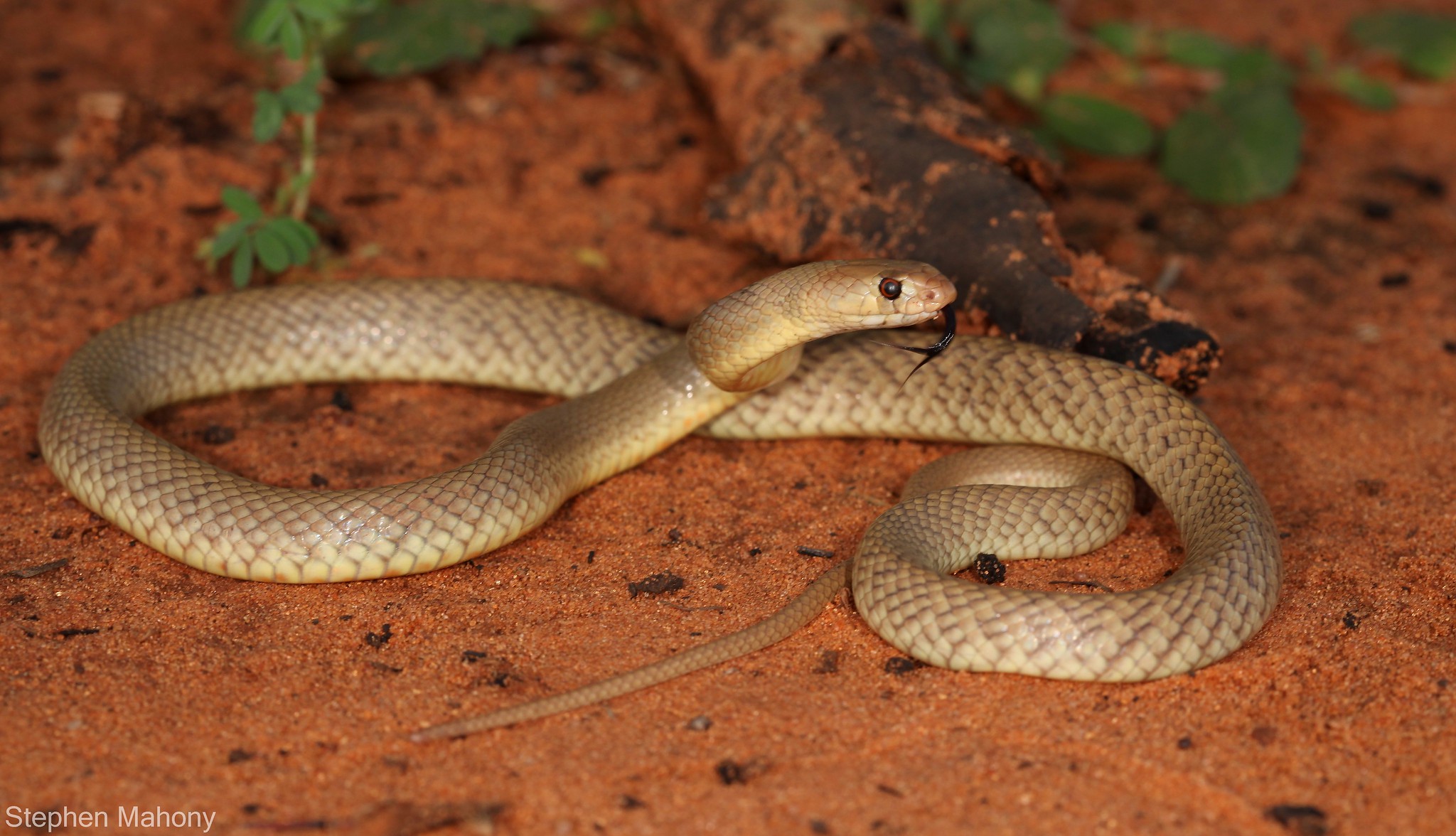 Pseudonaja mengdeni by Stephen Mahony, on Flickr
Pseudonaja mengdeni by Stephen Mahony, on Flickr
Many dead Whip-snaked were seen on the road with one live one turning up also on the verandah.
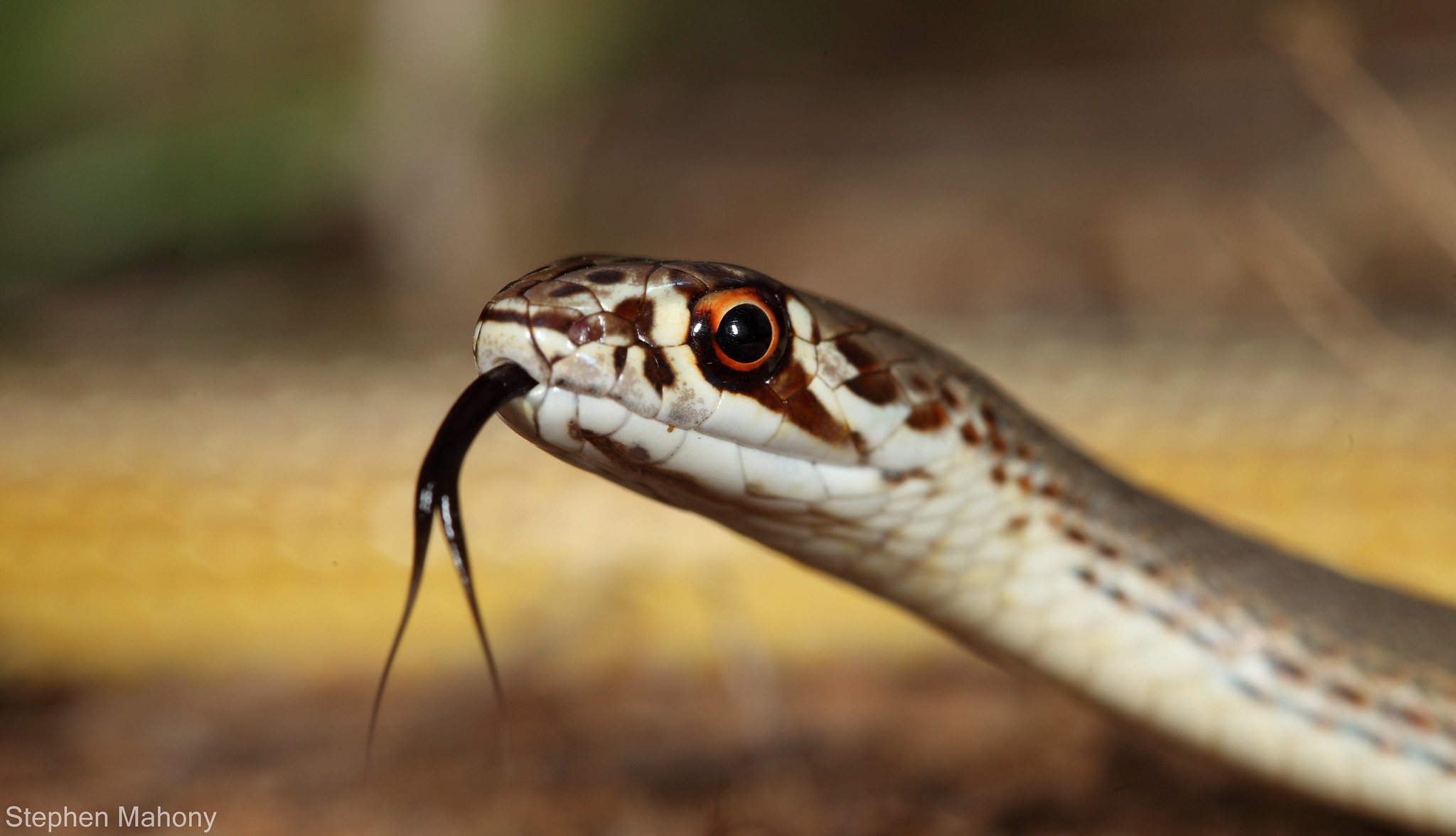 Demansia angusticeps by Stephen Mahony, on Flickr
Demansia angusticeps by Stephen Mahony, on Flickr
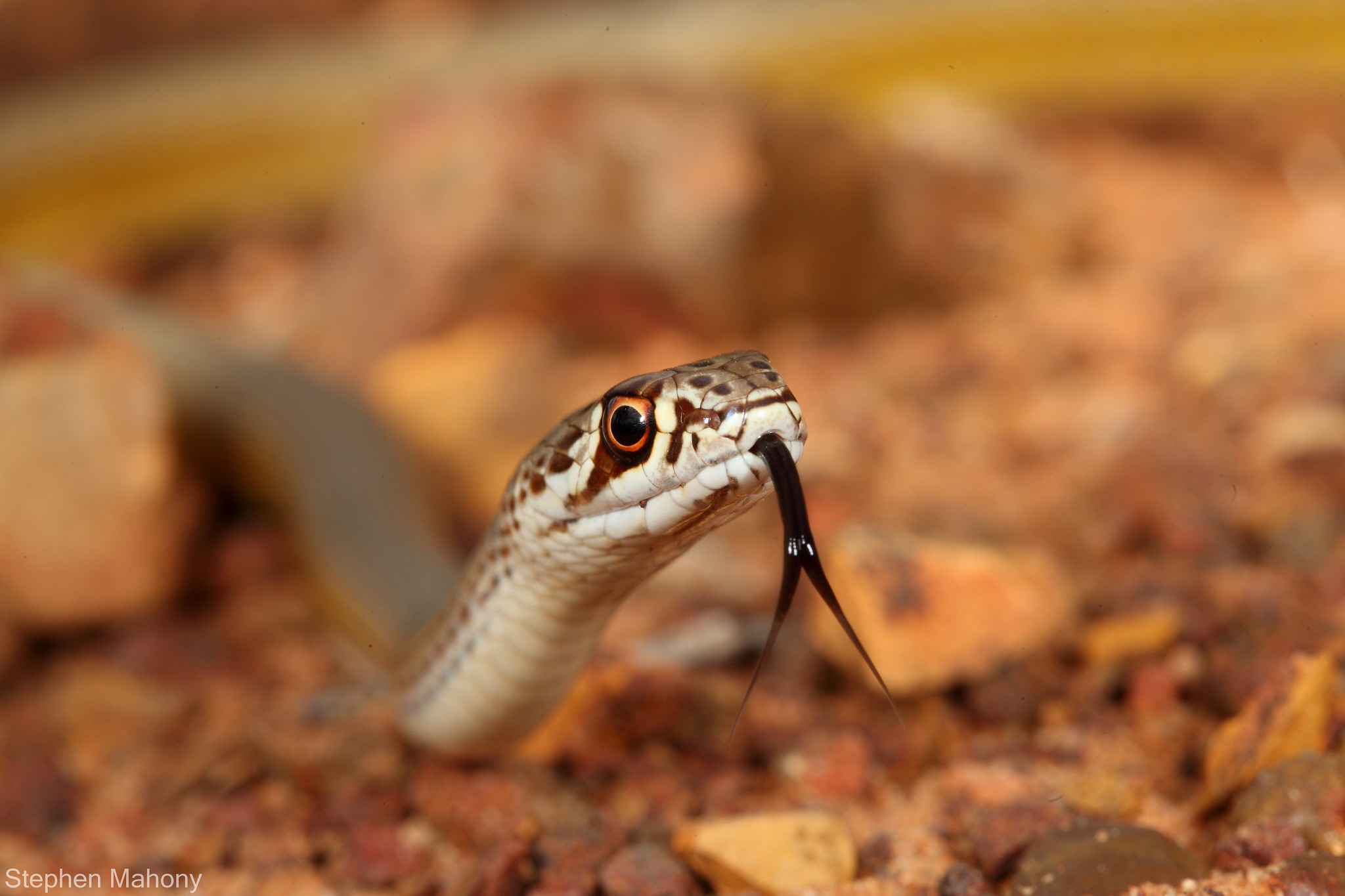 Demansia angusticeps by Stephen Mahony, on Flickr
Demansia angusticeps by Stephen Mahony, on Flickr
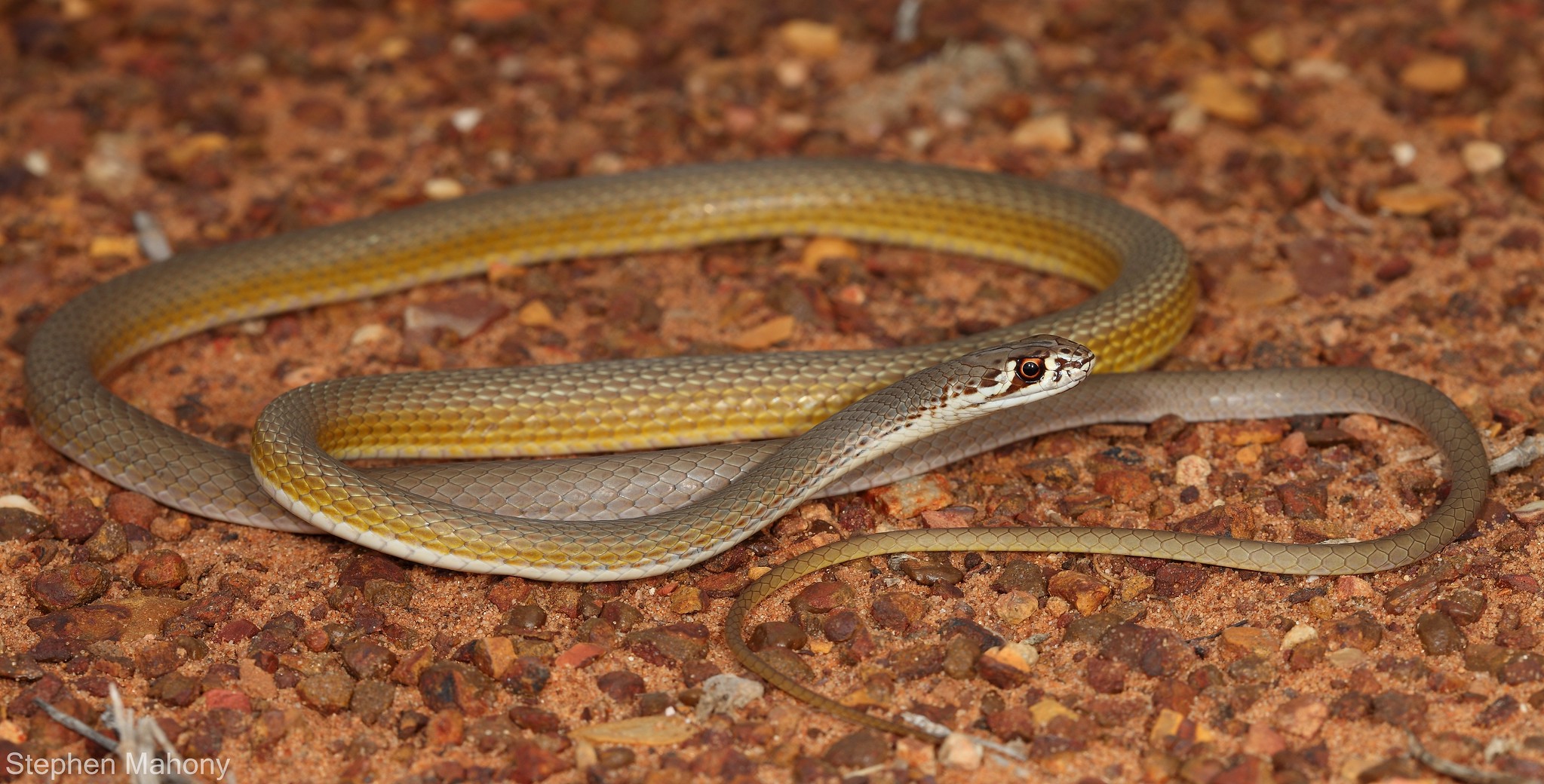 Demansia angusticeps by Stephen Mahony, on Flickr
Demansia angusticeps by Stephen Mahony, on Flickr
Both Black-headed and Stimpsons Pythons were also found in good numbers at night.
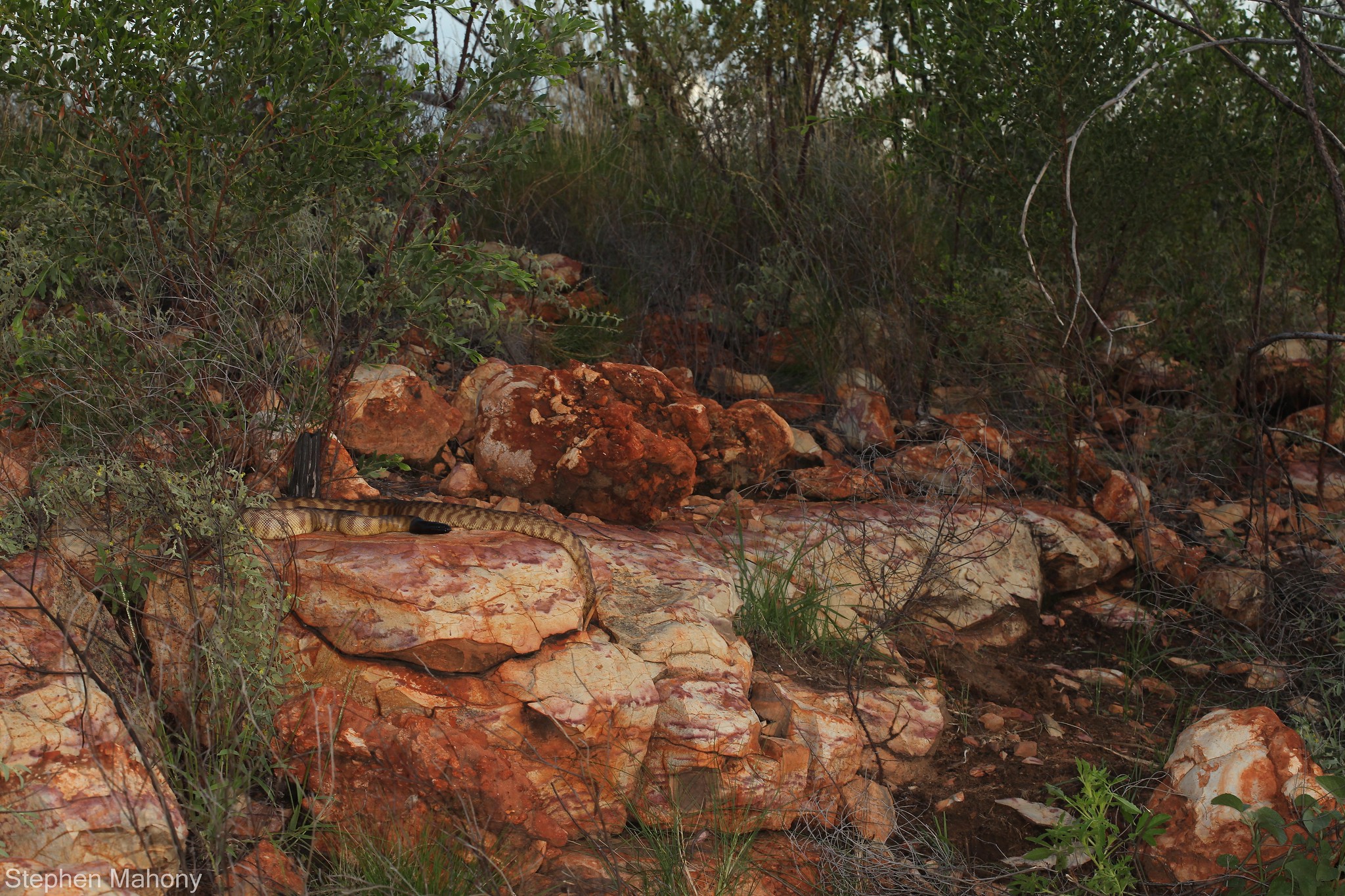 Aspidites melanocephalus by Stephen Mahony, on Flickr
Aspidites melanocephalus by Stephen Mahony, on Flickr
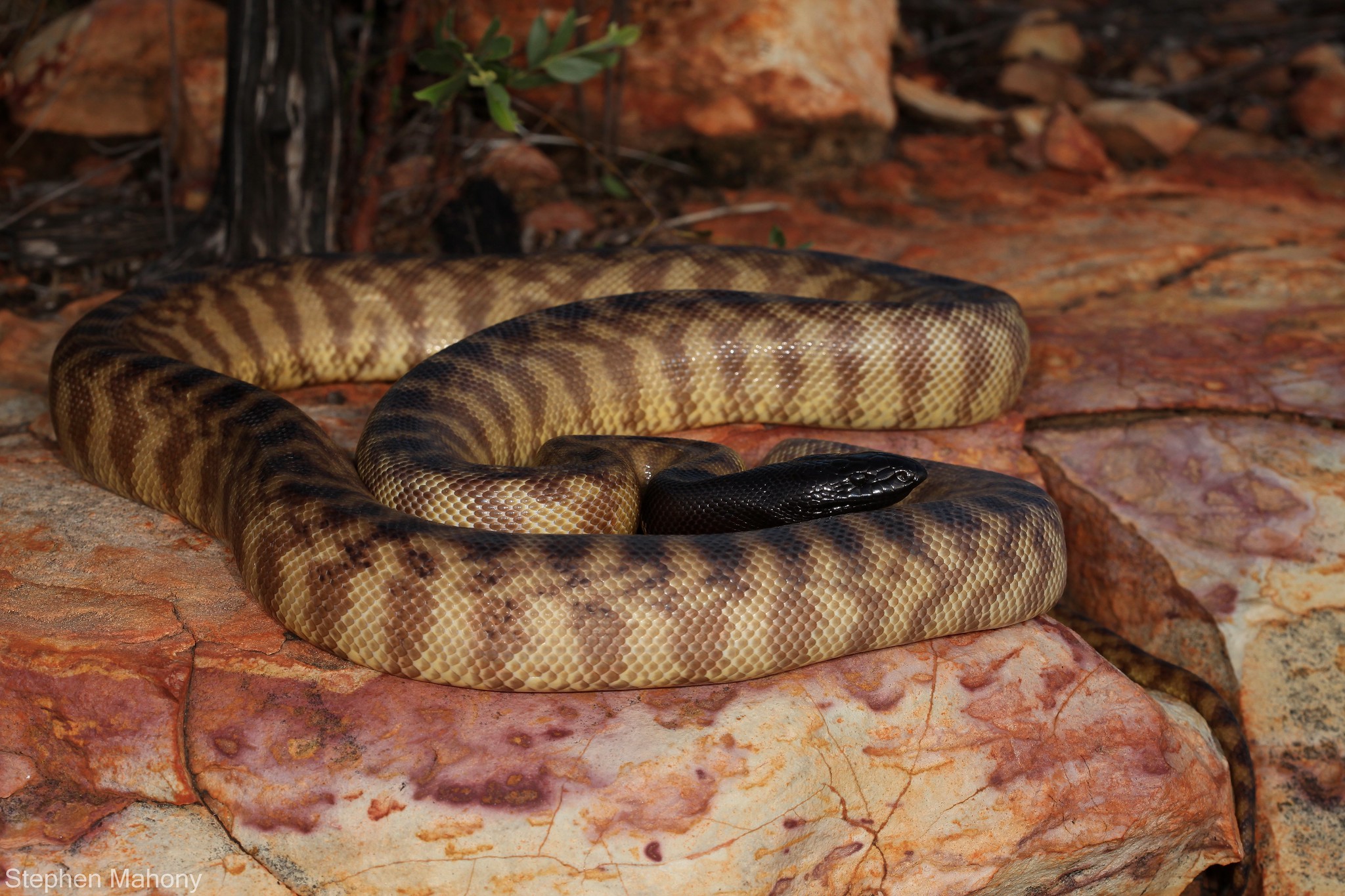 Aspidites melanocephalus by Stephen Mahony, on Flickr
Aspidites melanocephalus by Stephen Mahony, on Flickr
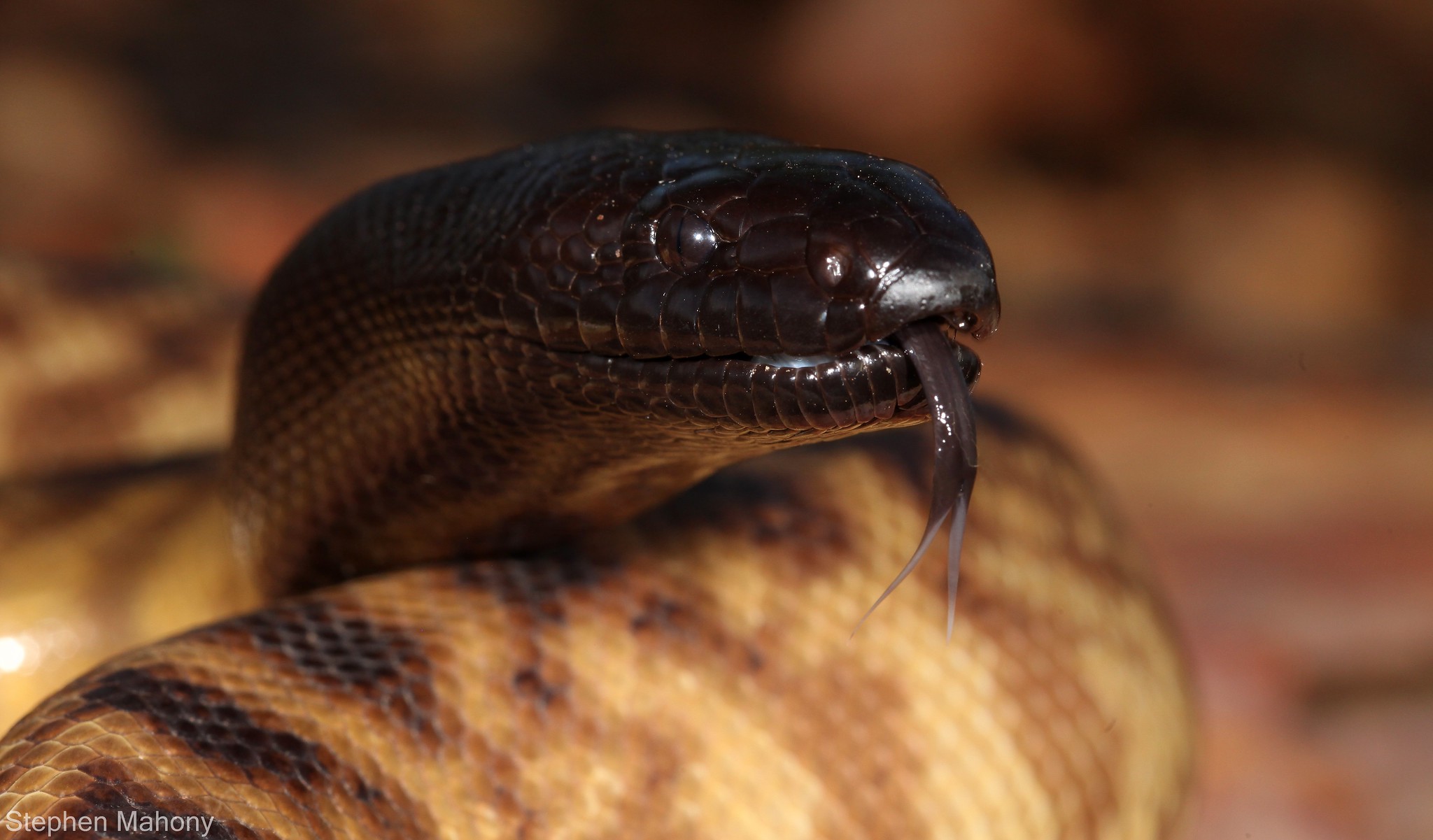 Aspidites melanocephalus by Stephen Mahony, on Flickr
Aspidites melanocephalus by Stephen Mahony, on Flickr
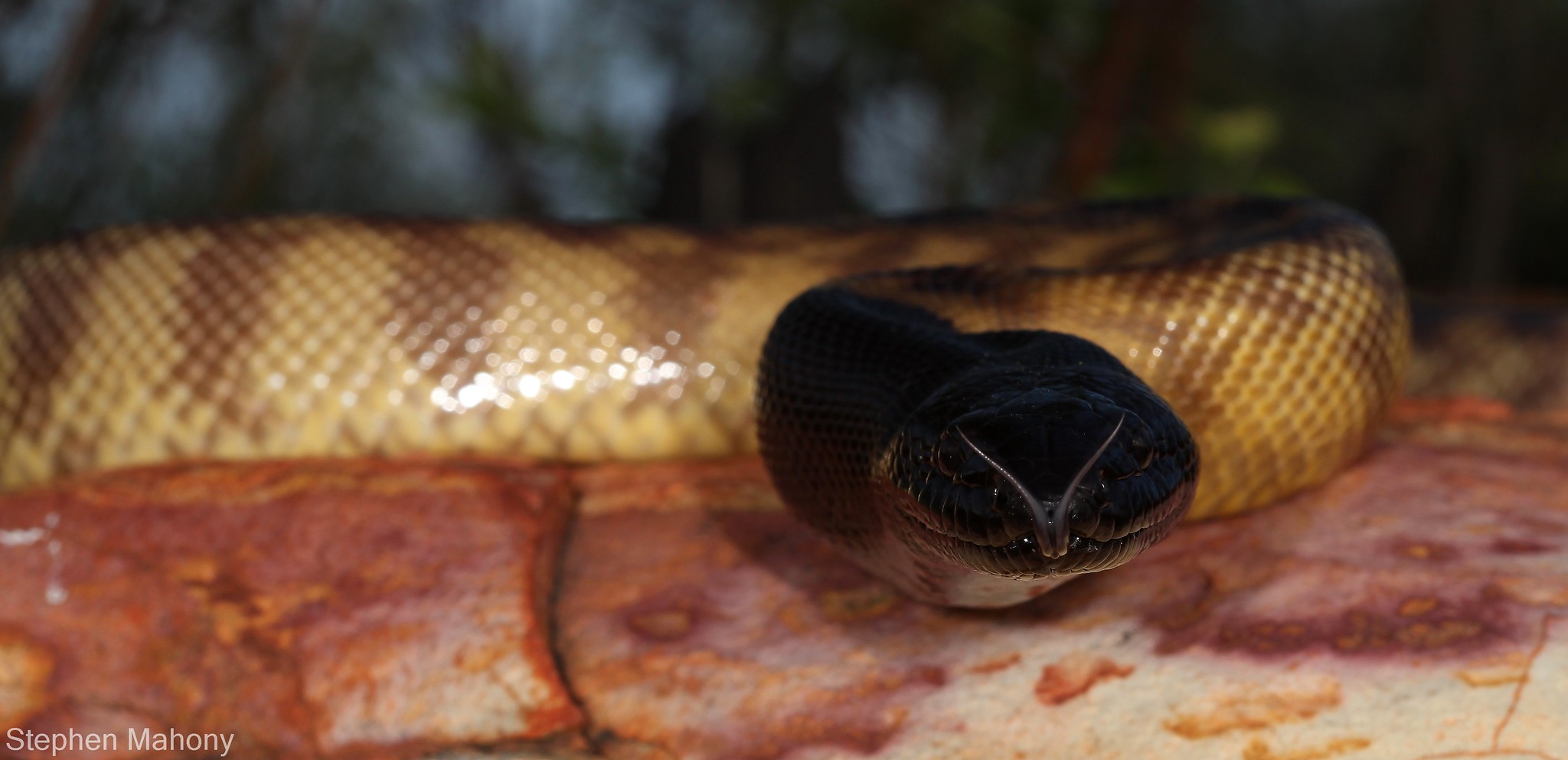 Aspidites melanocephalus by Stephen Mahony, on Flickr
Aspidites melanocephalus by Stephen Mahony, on Flickr
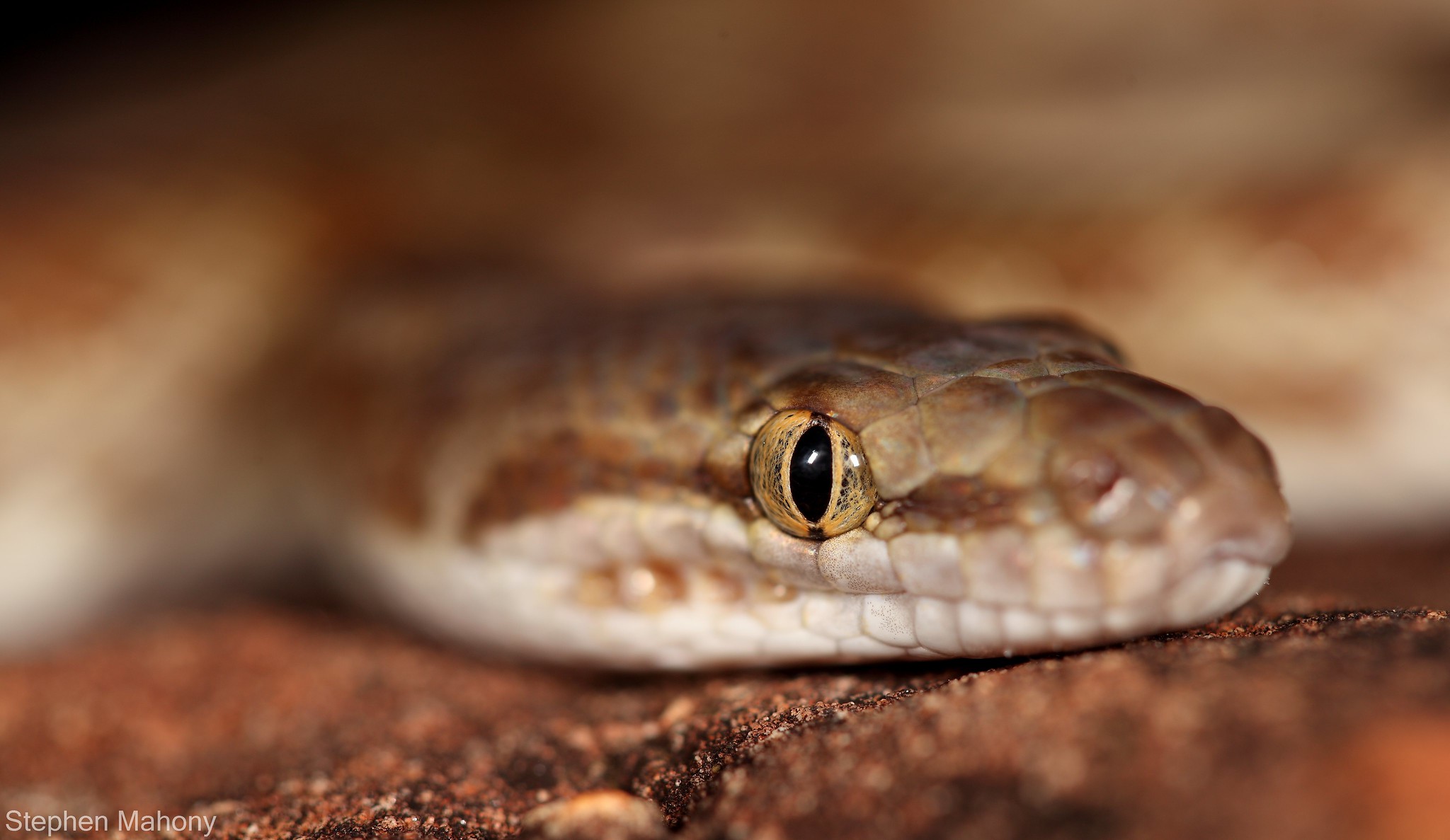 Antaresia stimsoni by Stephen Mahony, on Flickr
Antaresia stimsoni by Stephen Mahony, on Flickr
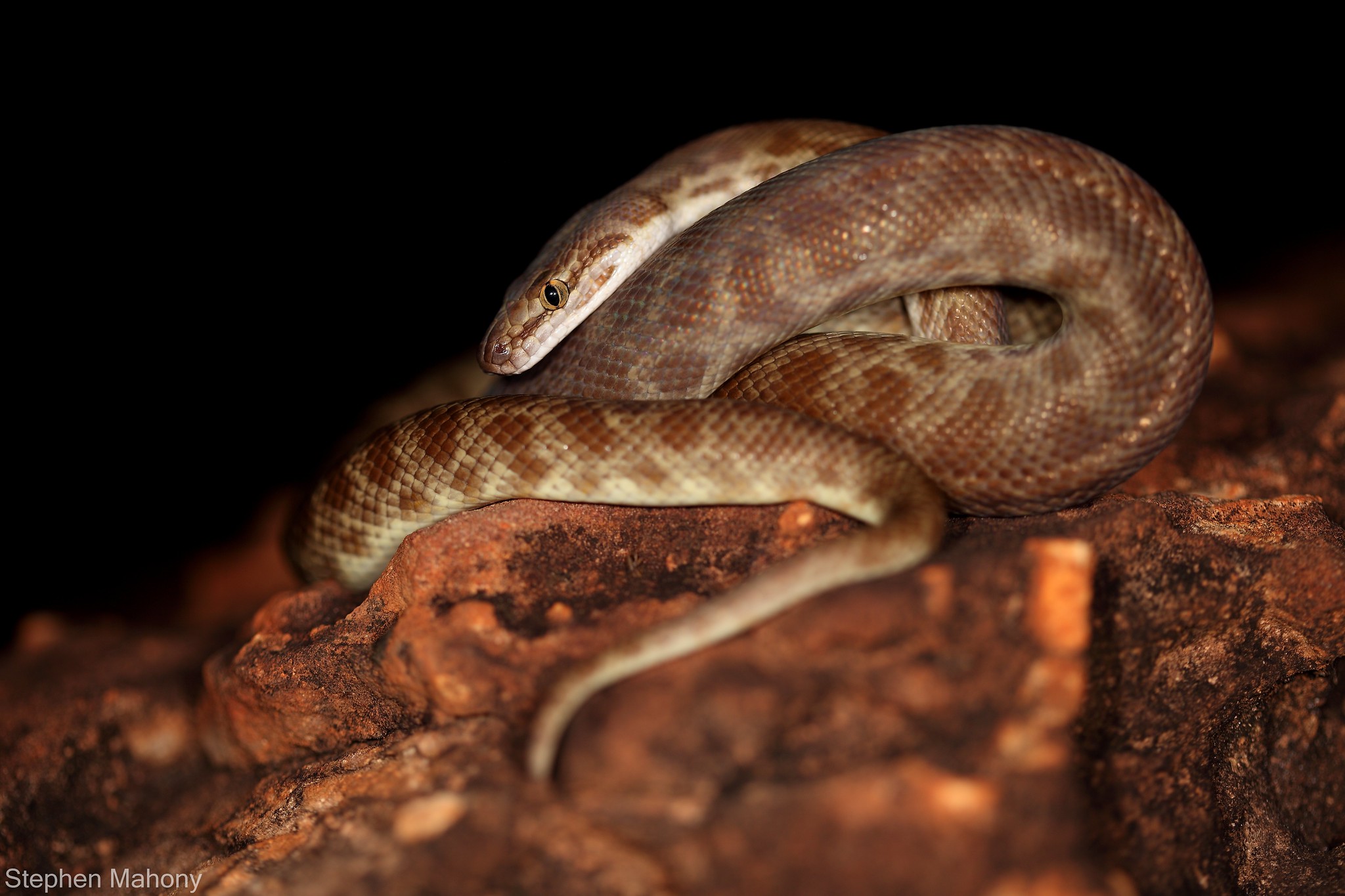 Antaresia stimsoni by Stephen Mahony, on Flickr
Antaresia stimsoni by Stephen Mahony, on Flickr
On arrival at the site we were immediately flooded in for 3 days. This was the largest rainfall the entire time I was there and was an awesome opportunity to see some frogs.
Burrowing frogs of several species were common, the Long-footed Burrowing Frogs were probably the most abundant.
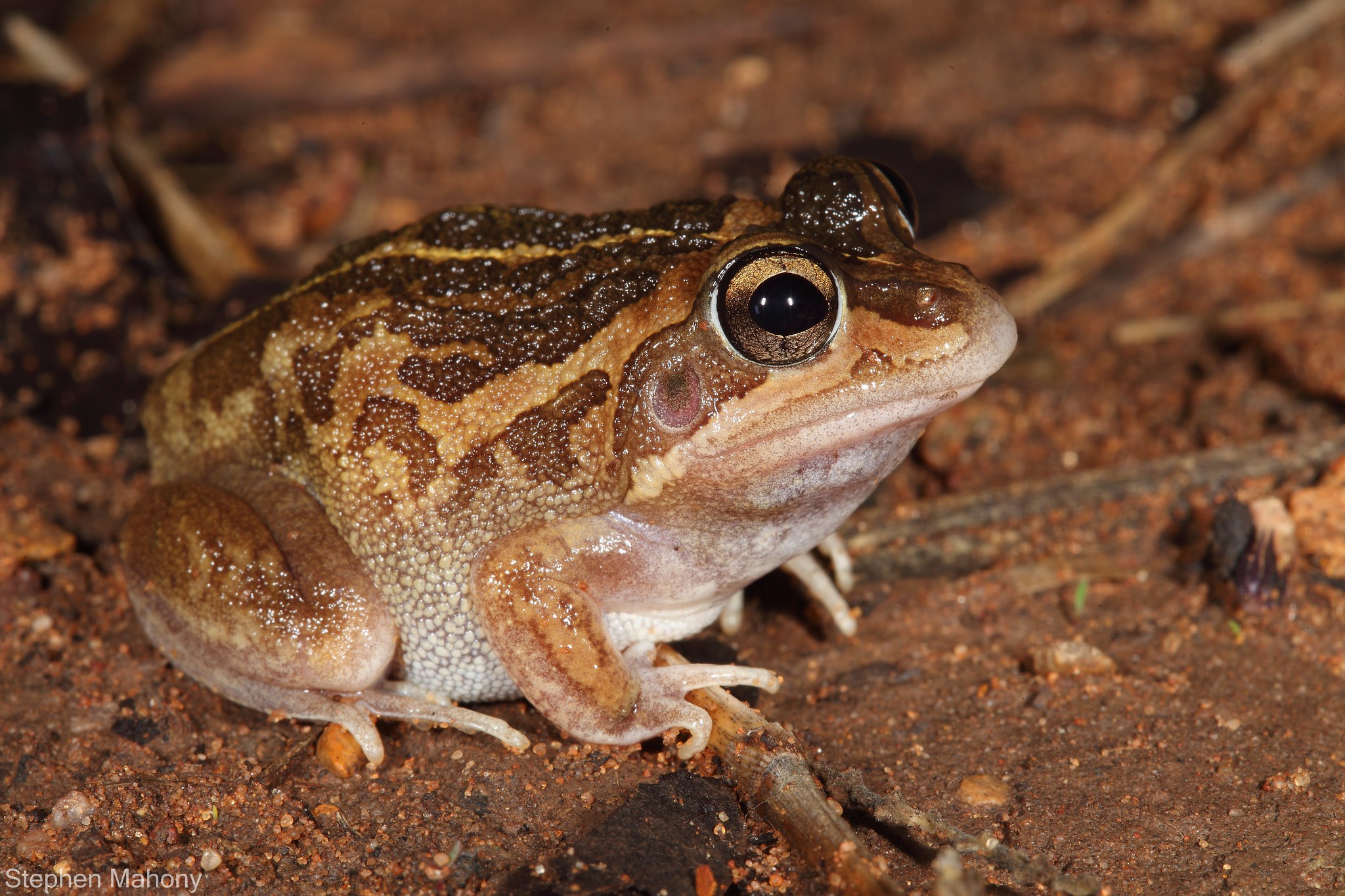 Cyclorana longipes by Stephen Mahony, on Flickr
Cyclorana longipes by Stephen Mahony, on Flickr
Much less common were the Hidden-ear Frogs found in slightly drier areas.
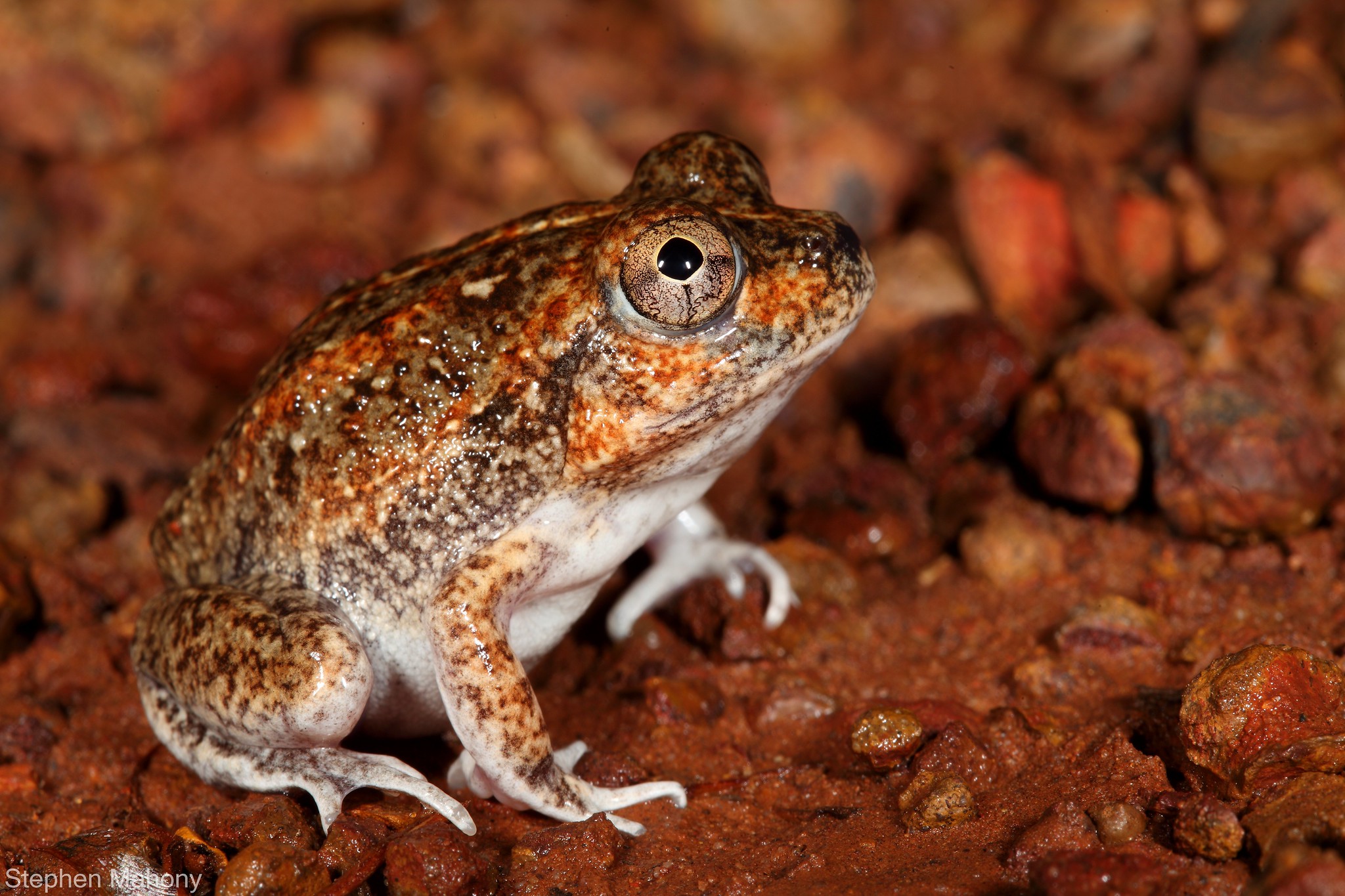 Cyclorana cryptotis by Stephen Mahony, on Flickr
Cyclorana cryptotis by Stephen Mahony, on Flickr
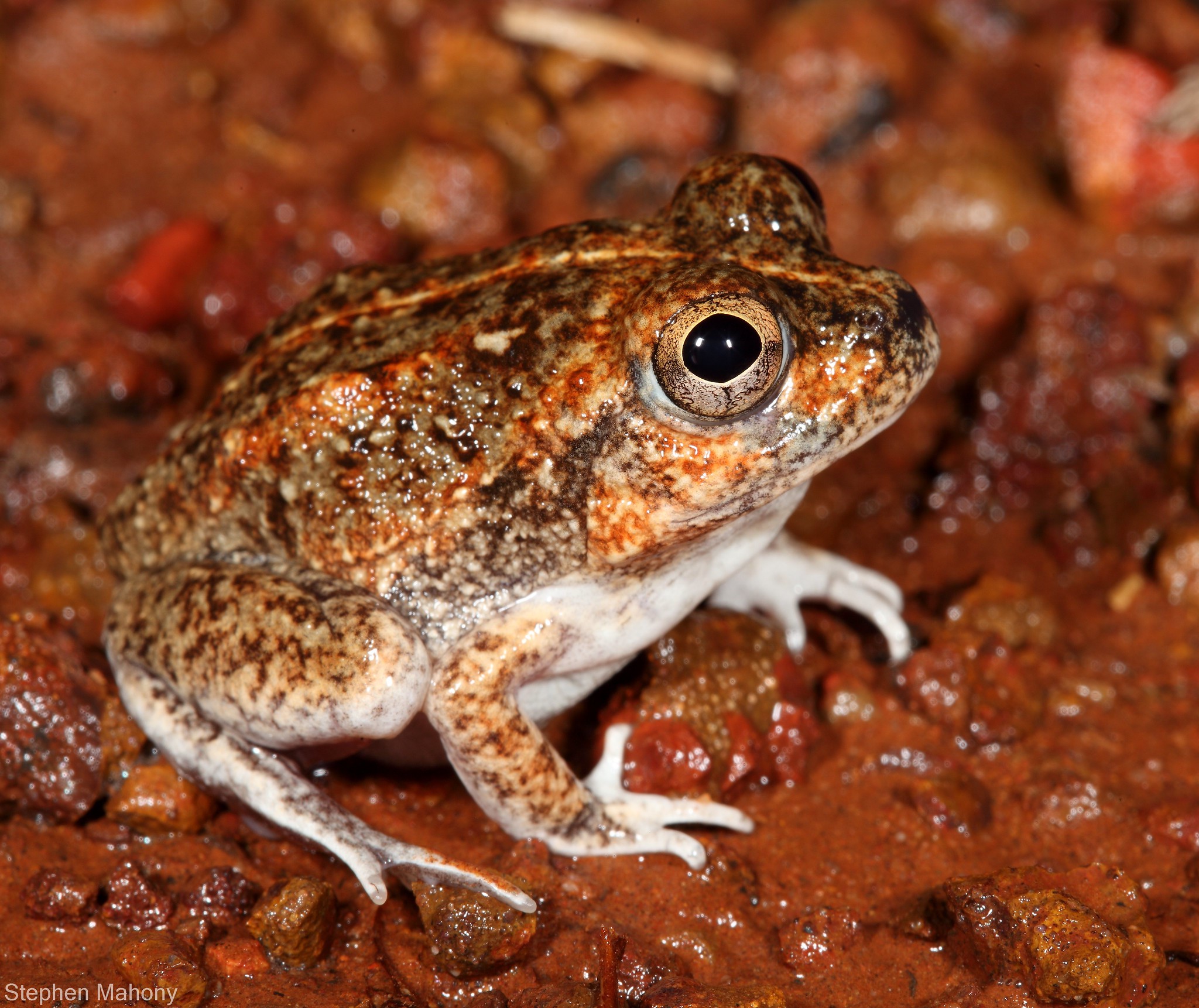 Cyclorana cryptotis by Stephen Mahony, on Flickr
Cyclorana cryptotis by Stephen Mahony, on Flickr
The area was arid enough to yield these Desert Spade-foots which were nicely coloured and hard to do justice in a picture.
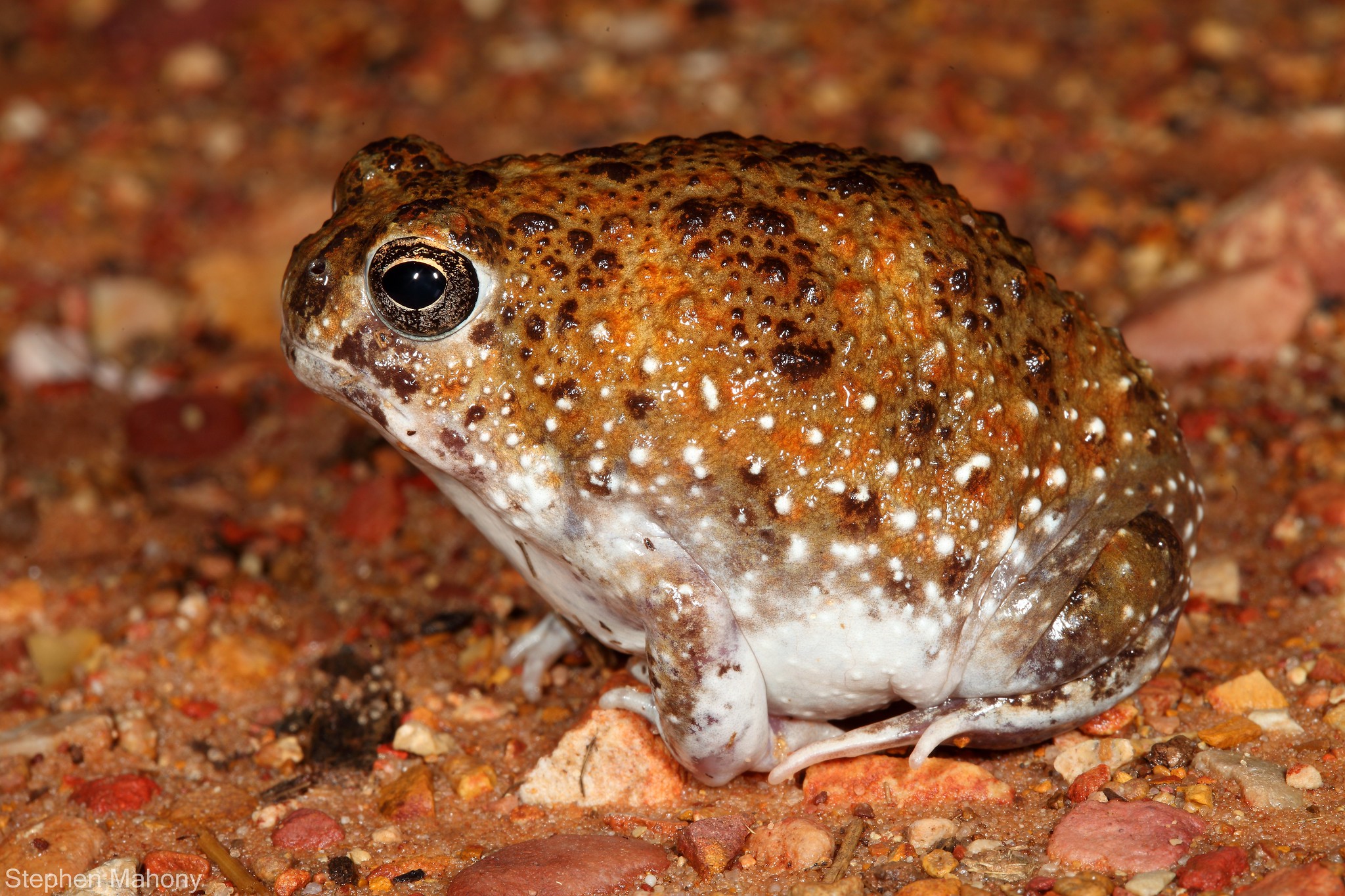 Notaden nicholsii by Stephen Mahony, on Flickr
Notaden nicholsii by Stephen Mahony, on Flickr
Several tree frogs such as Green Tree Frogs, Roth's Tree Frog and Desert Tree Frogs were common, however the only one I photographed was the Pallid Frog.
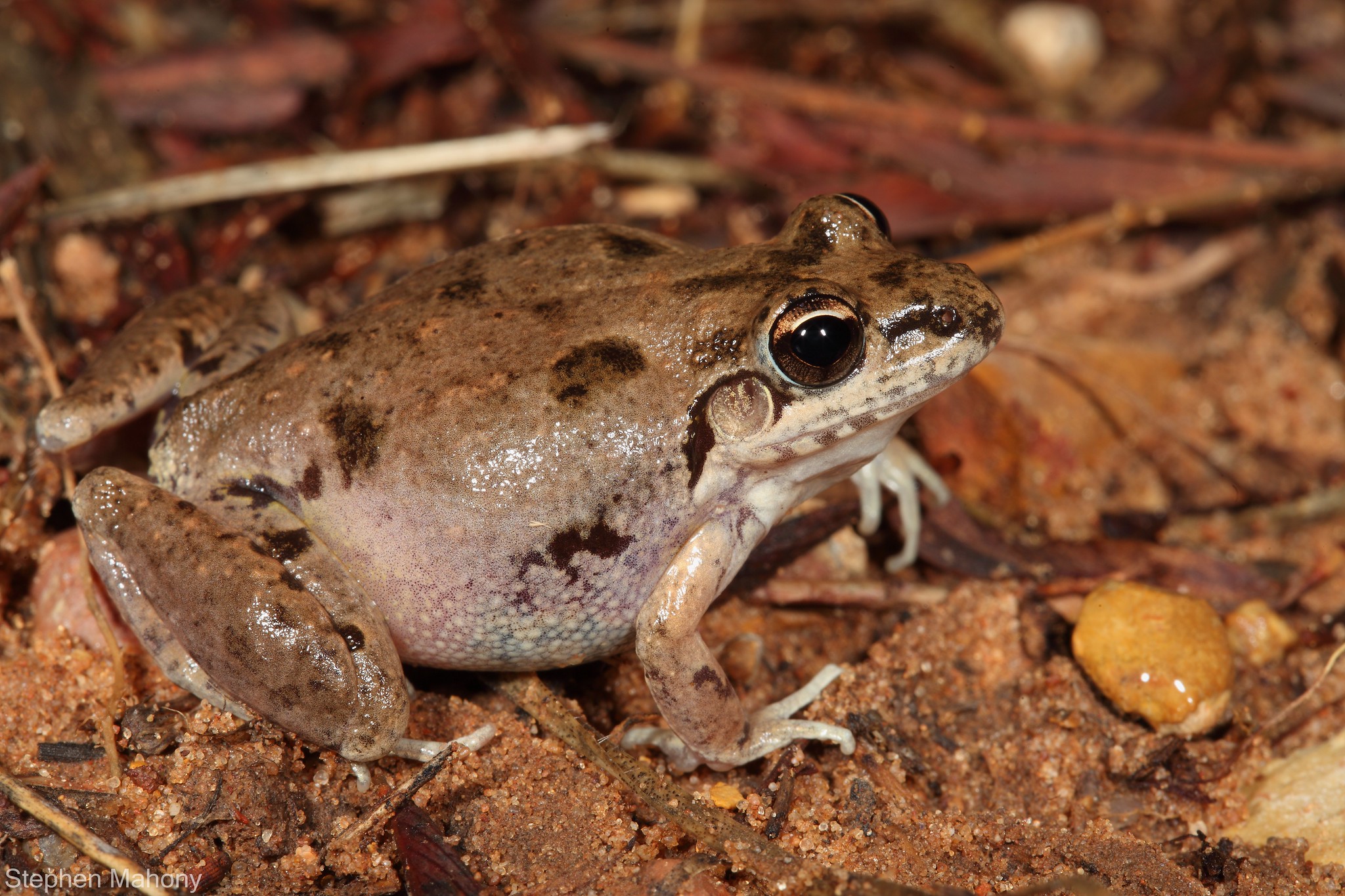 Litoria pallida by Stephen Mahony, on Flickr
Litoria pallida by Stephen Mahony, on Flickr
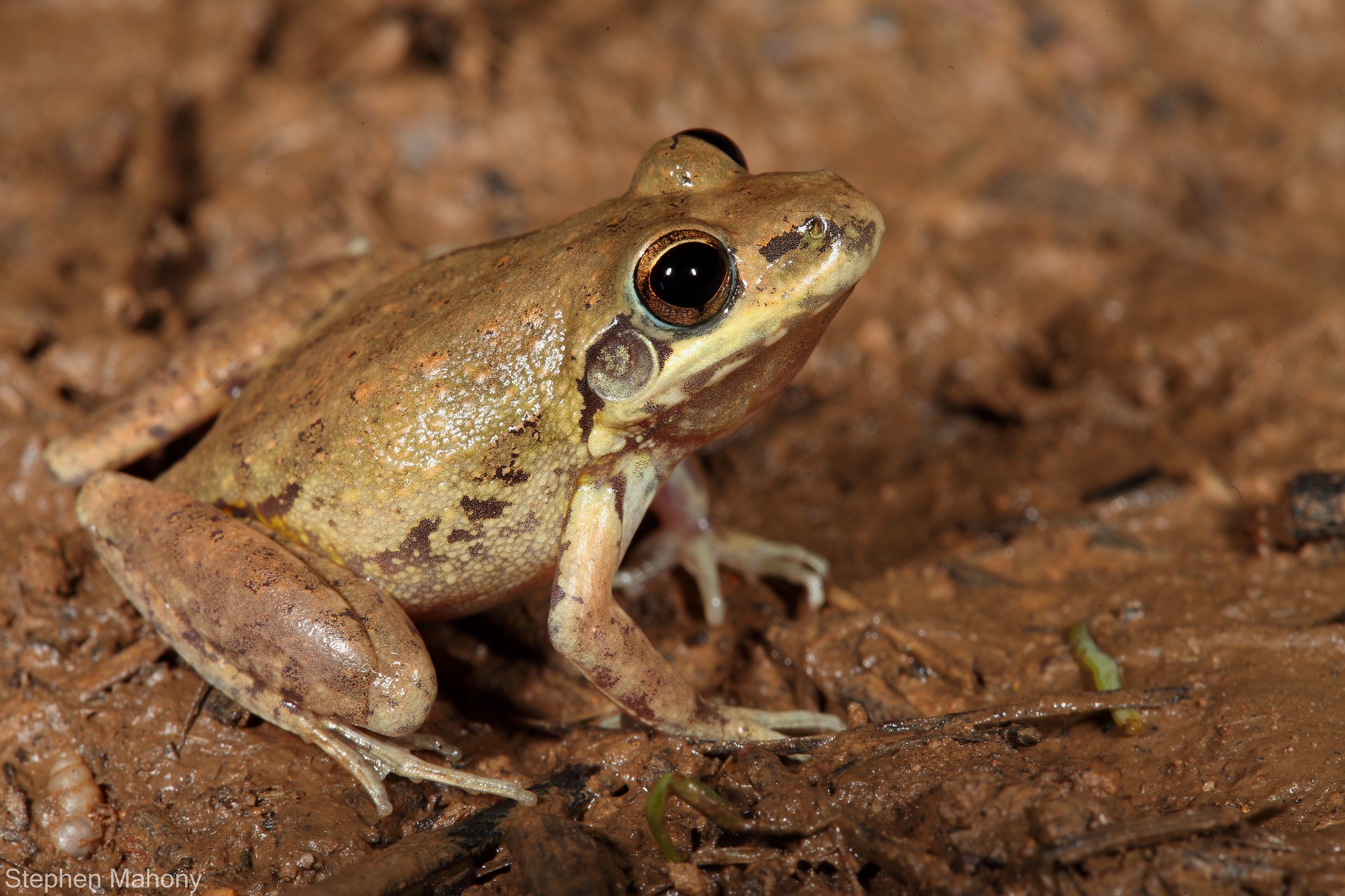 Litoria pallida by Stephen Mahony, on Flickr
Litoria pallida by Stephen Mahony, on Flickr
Very few Uperoleia were actually found.
This U. lithomoda was found randomly walking around in a rather dry area with no other frogs.
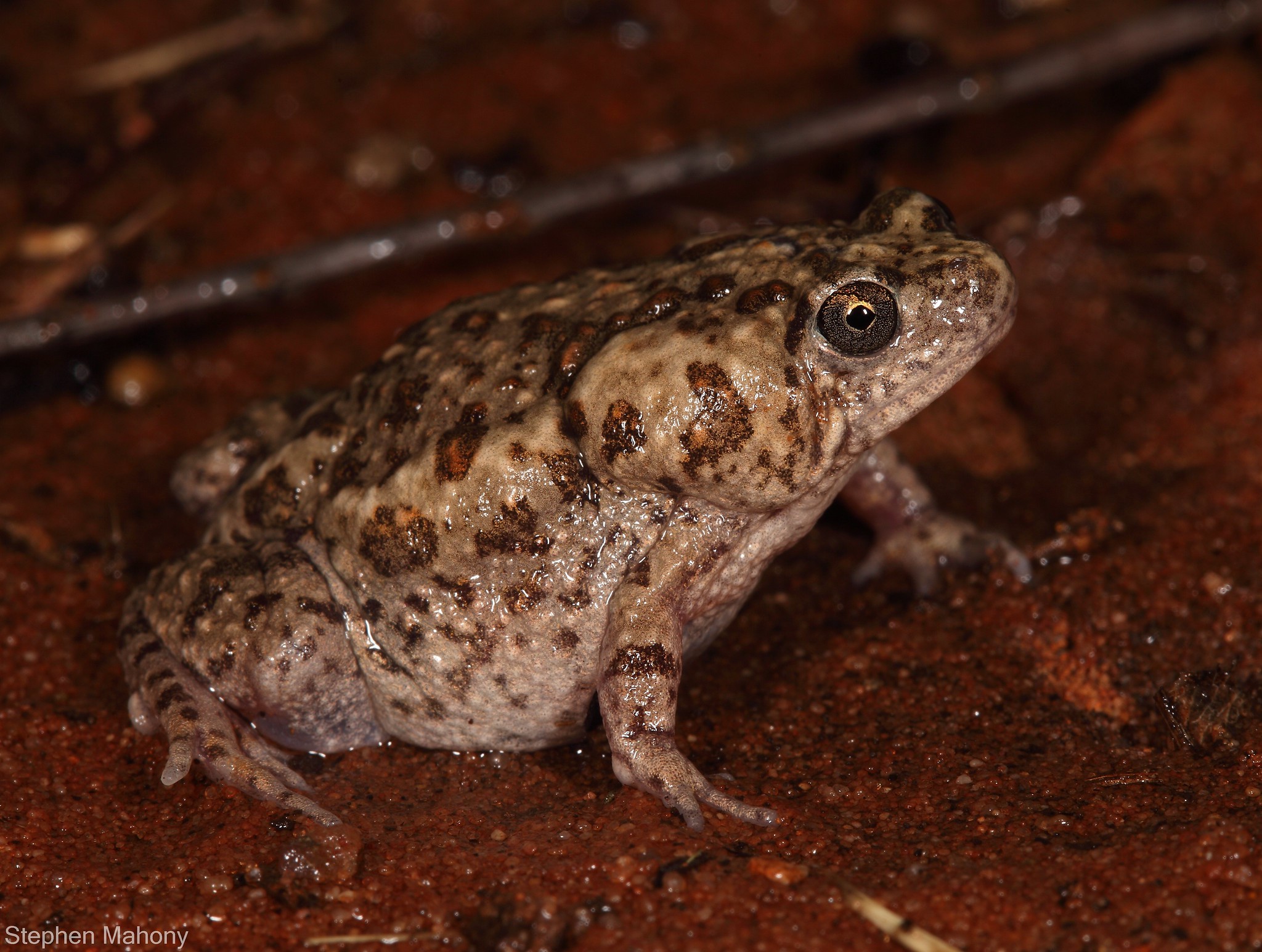 Uperoleia lithomoda by Stephen Mahony, on Flickr
Uperoleia lithomoda by Stephen Mahony, on Flickr
At the time U. stridera was only very recently described and we managed to track one down after the heaviest rain in a flooded area.
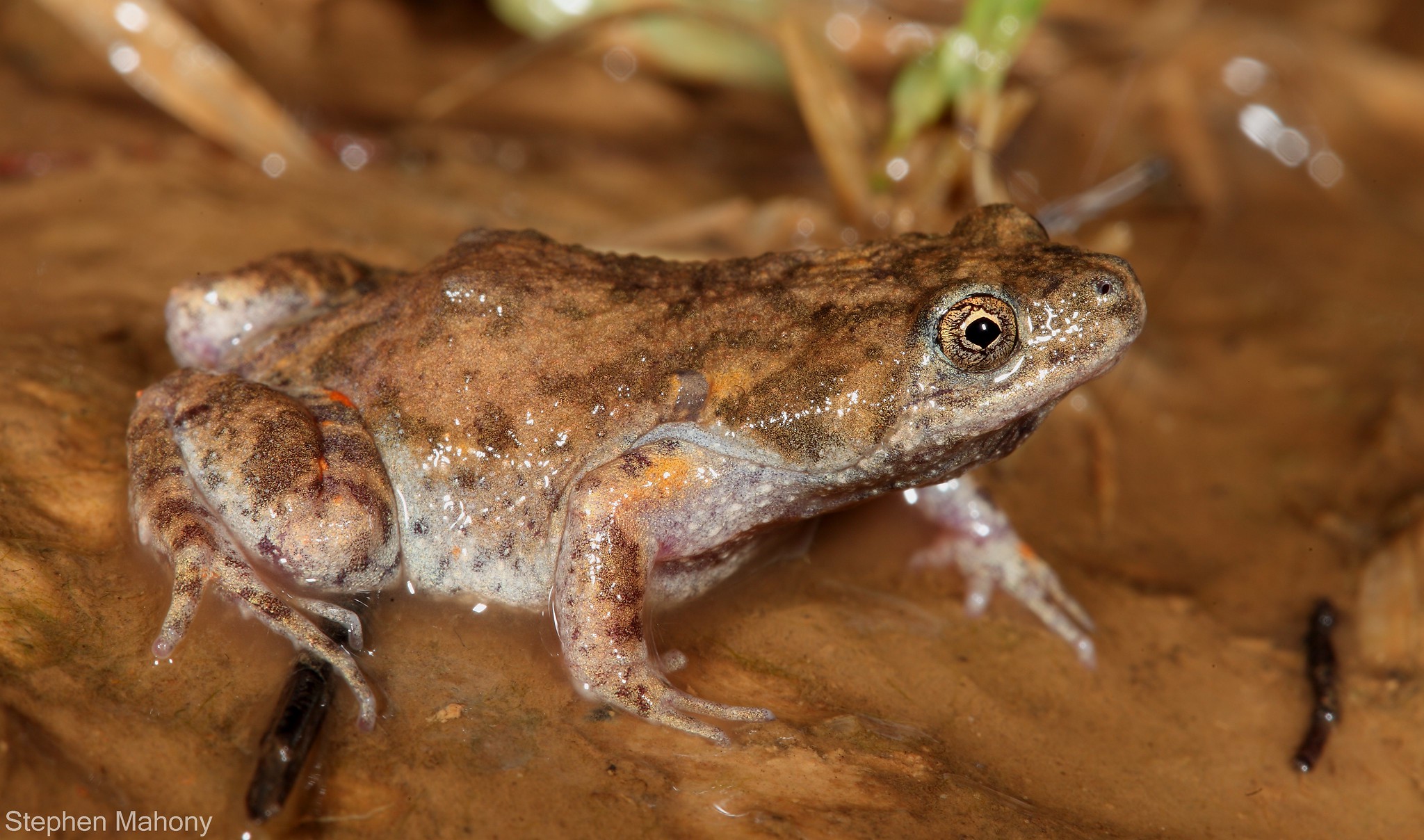 Uperoleia stridera by Stephen Mahony, on Flickr
Uperoleia stridera by Stephen Mahony, on Flickr
Carpenter Frogs were also found in a couple places, this individual is actually from the East Kimberley before we drove South.
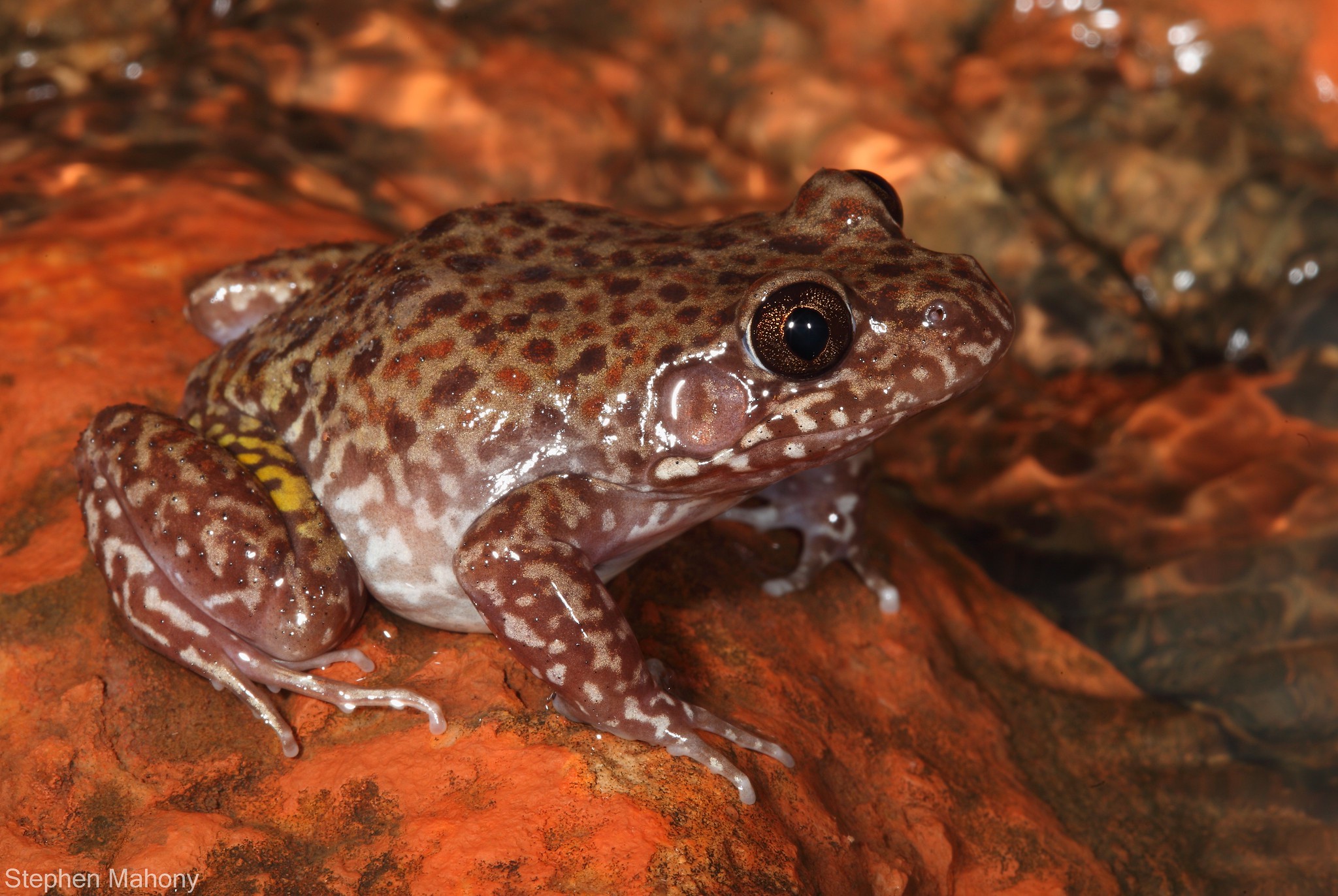 Limnodynastes lignarius by Stephen Mahony, on Flickr
Limnodynastes lignarius by Stephen Mahony, on Flickr
Several dragons were present around both our living area and study site. The most spectacular probably being the iconic Frill-necked Lizard.
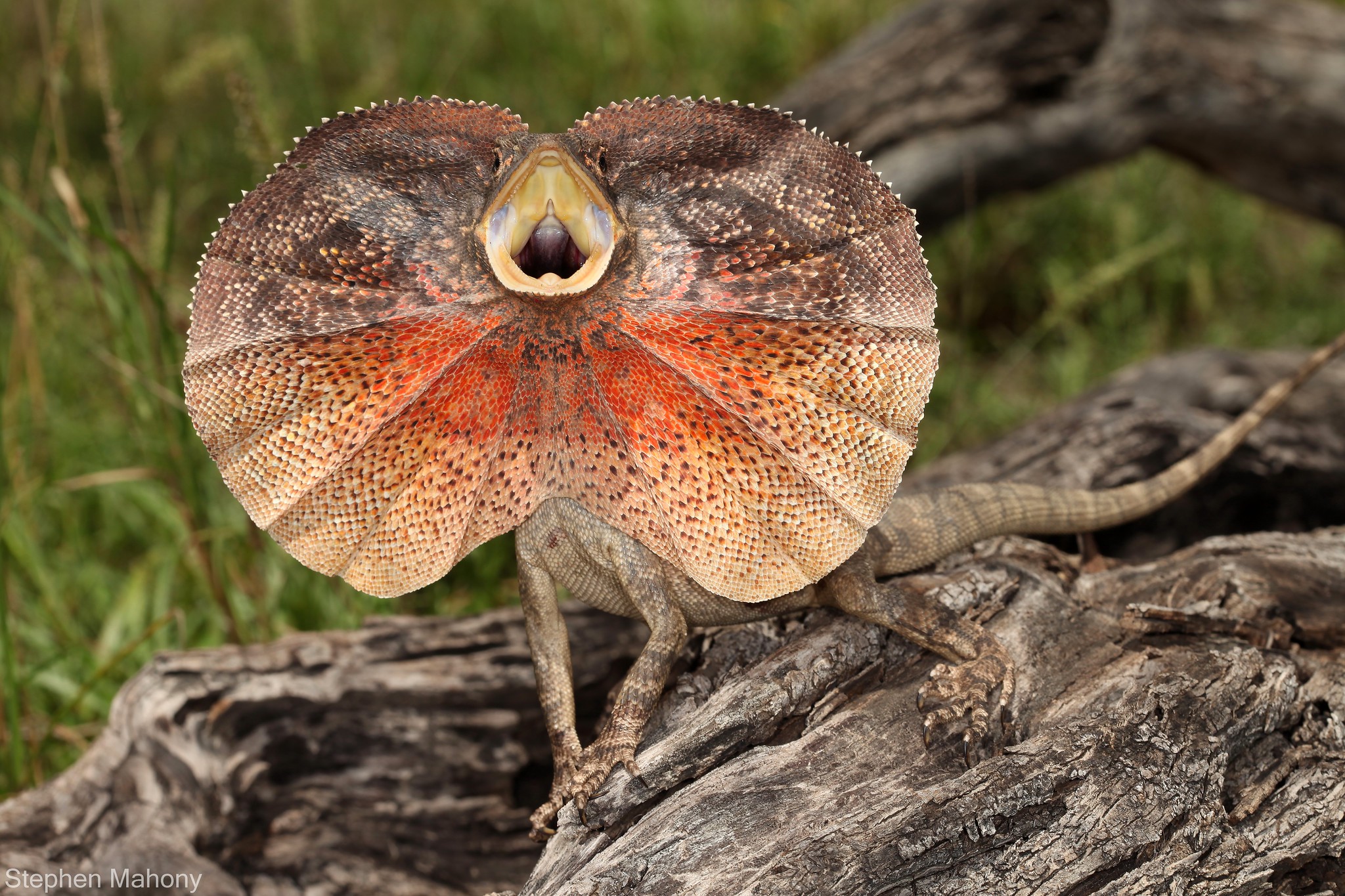 Chlamydosaurus kingii by Stephen Mahony, on Flickr
Chlamydosaurus kingii by Stephen Mahony, on Flickr
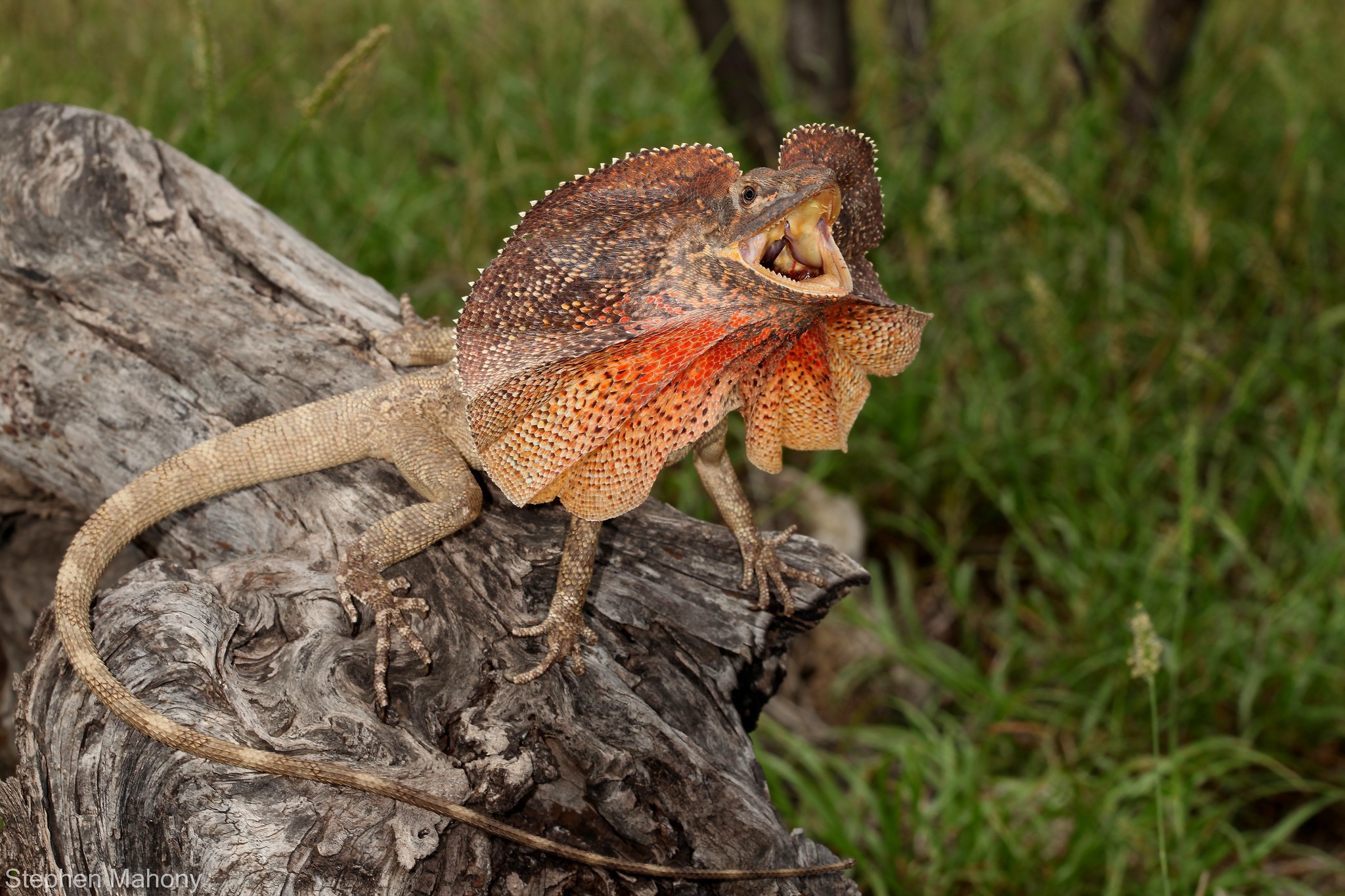 Chlamydosaurus kingii by Stephen Mahony, on Flickr
Chlamydosaurus kingii by Stephen Mahony, on Flickr
Finding a Dwarf Bearded Dragon got my hopes up initially but it was not-really-surprisingly a P. minor not the far less common Small-scaled Bearded Dragon.
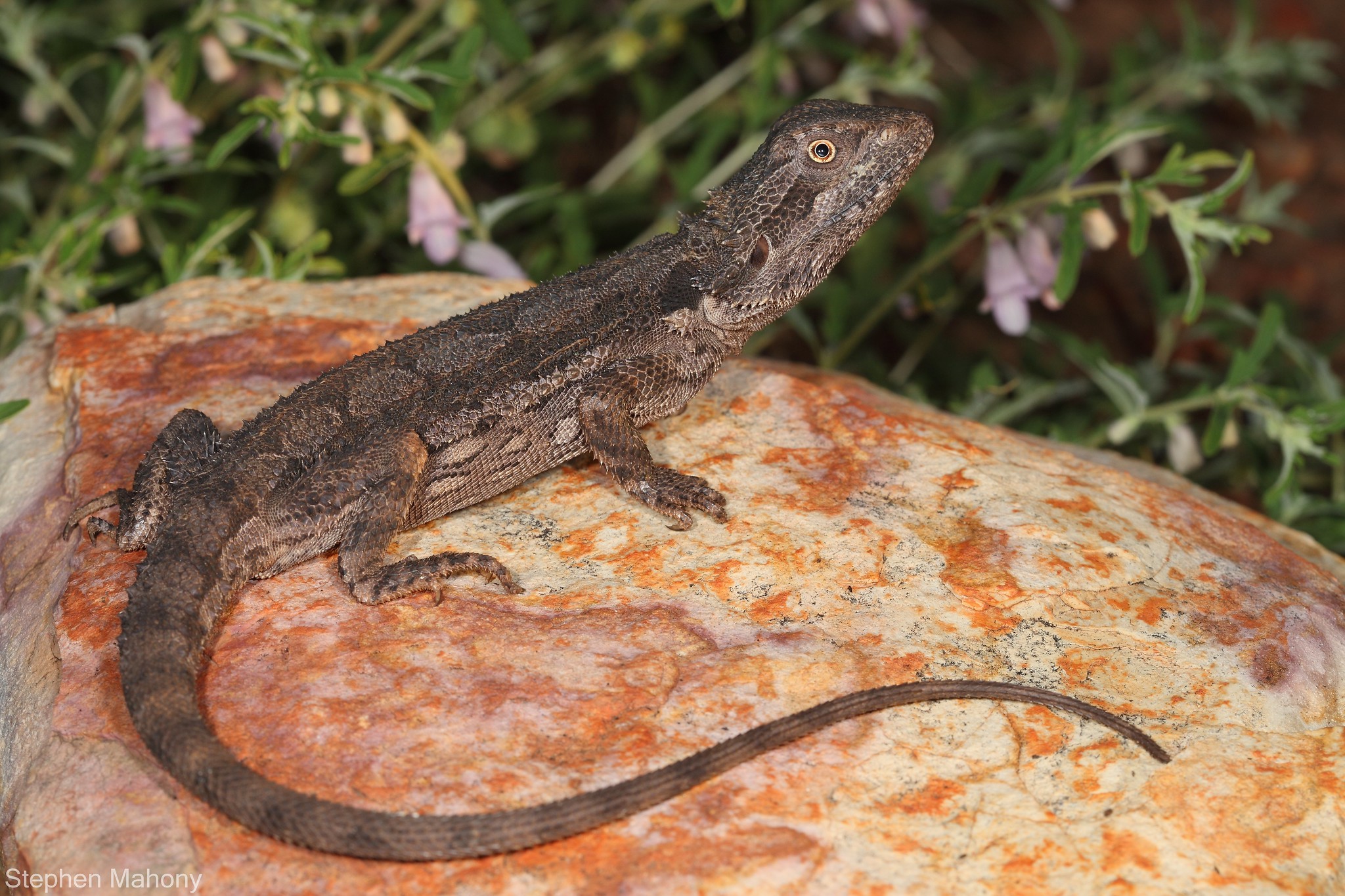 Pogona minor by Stephen Mahony, on Flickr
Pogona minor by Stephen Mahony, on Flickr
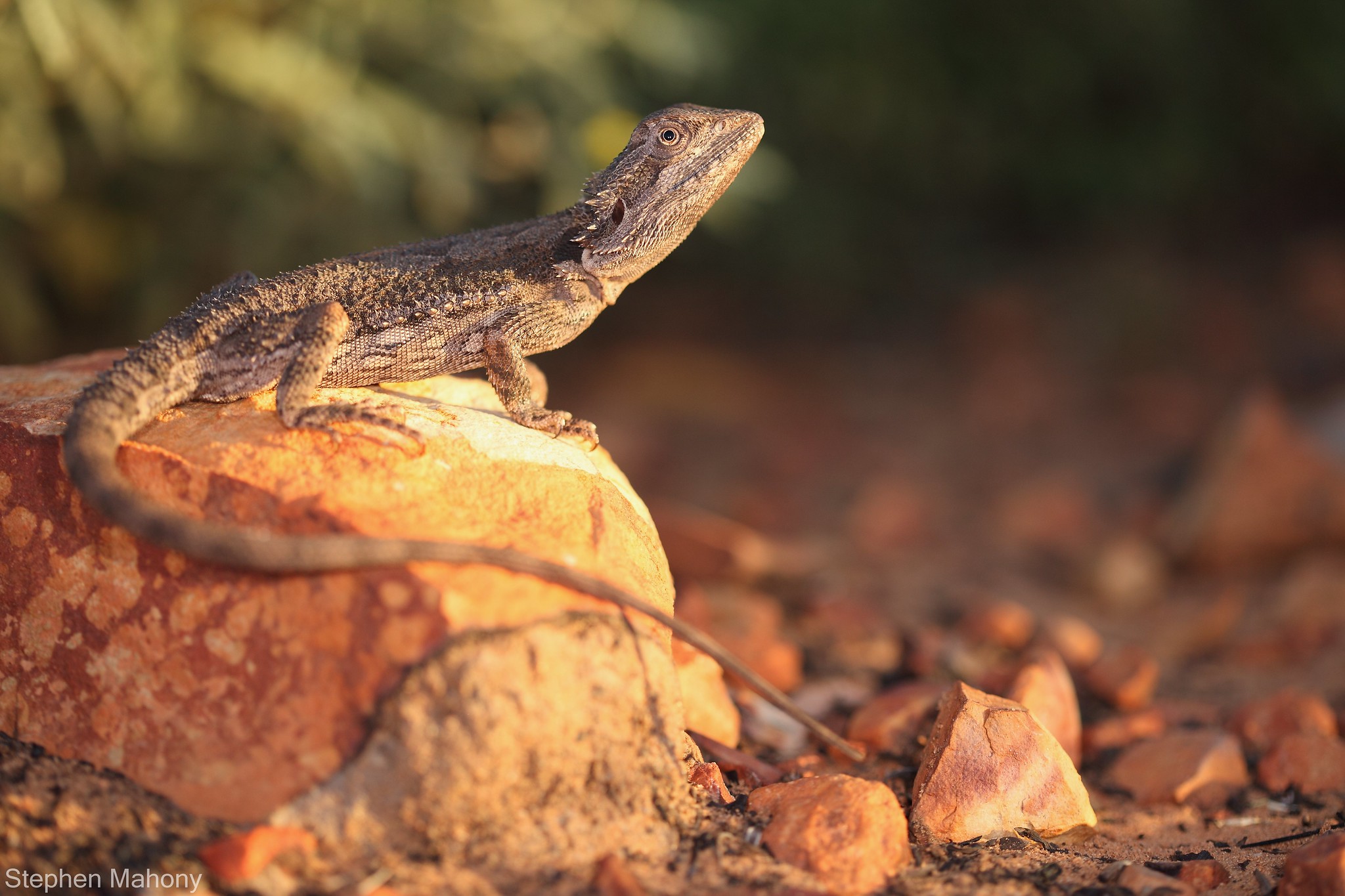 Pogona minor by Stephen Mahony, on Flickr
Pogona minor by Stephen Mahony, on Flickr
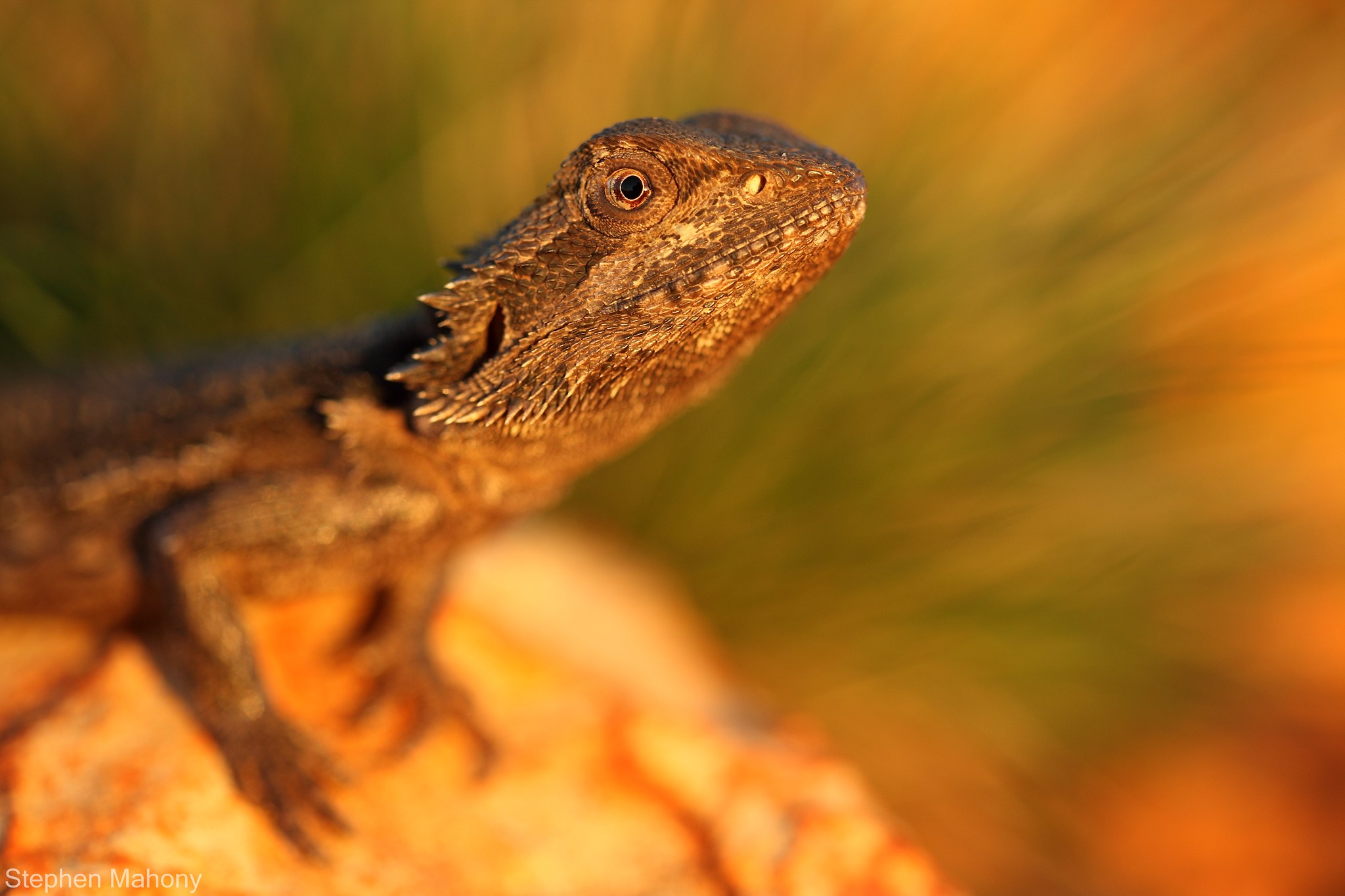 Pogona minor by Stephen Mahony, on Flickr
Pogona minor by Stephen Mahony, on Flickr
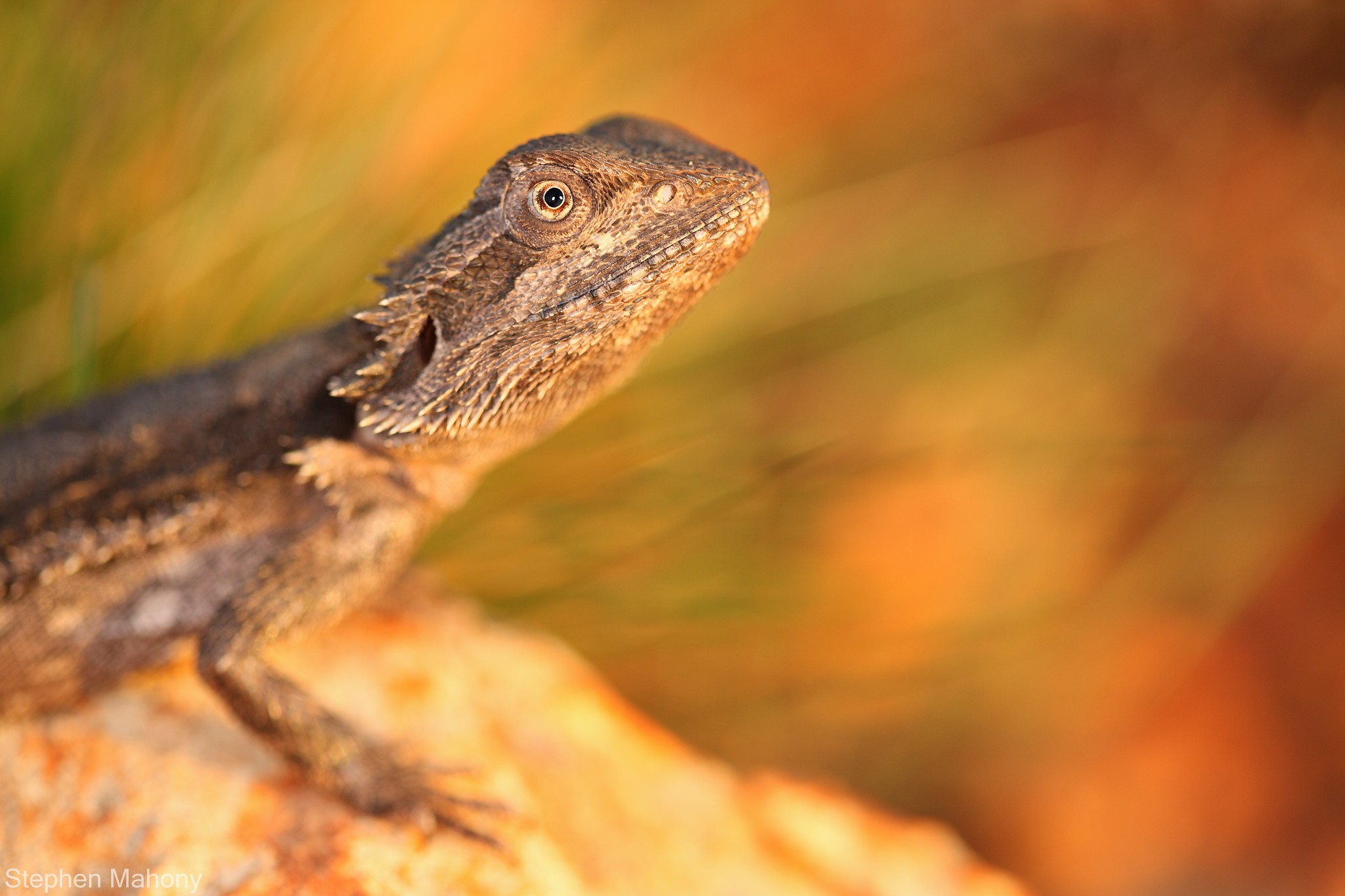 Pogona minor by Stephen Mahony, on Flickr
Pogona minor by Stephen Mahony, on Flickr
These Yellow-sided Two-lined Dragons were abundant in savannah woodland with long grass.
 Diporiphora magna by Stephen Mahony, on Flickr
Diporiphora magna by Stephen Mahony, on Flickr
 Diporiphora magna by Stephen Mahony, on Flickr
Diporiphora magna by Stephen Mahony, on Flickr
While these Grey-striped Western Desert Dragons were found in the dry sandy spinifex areas.
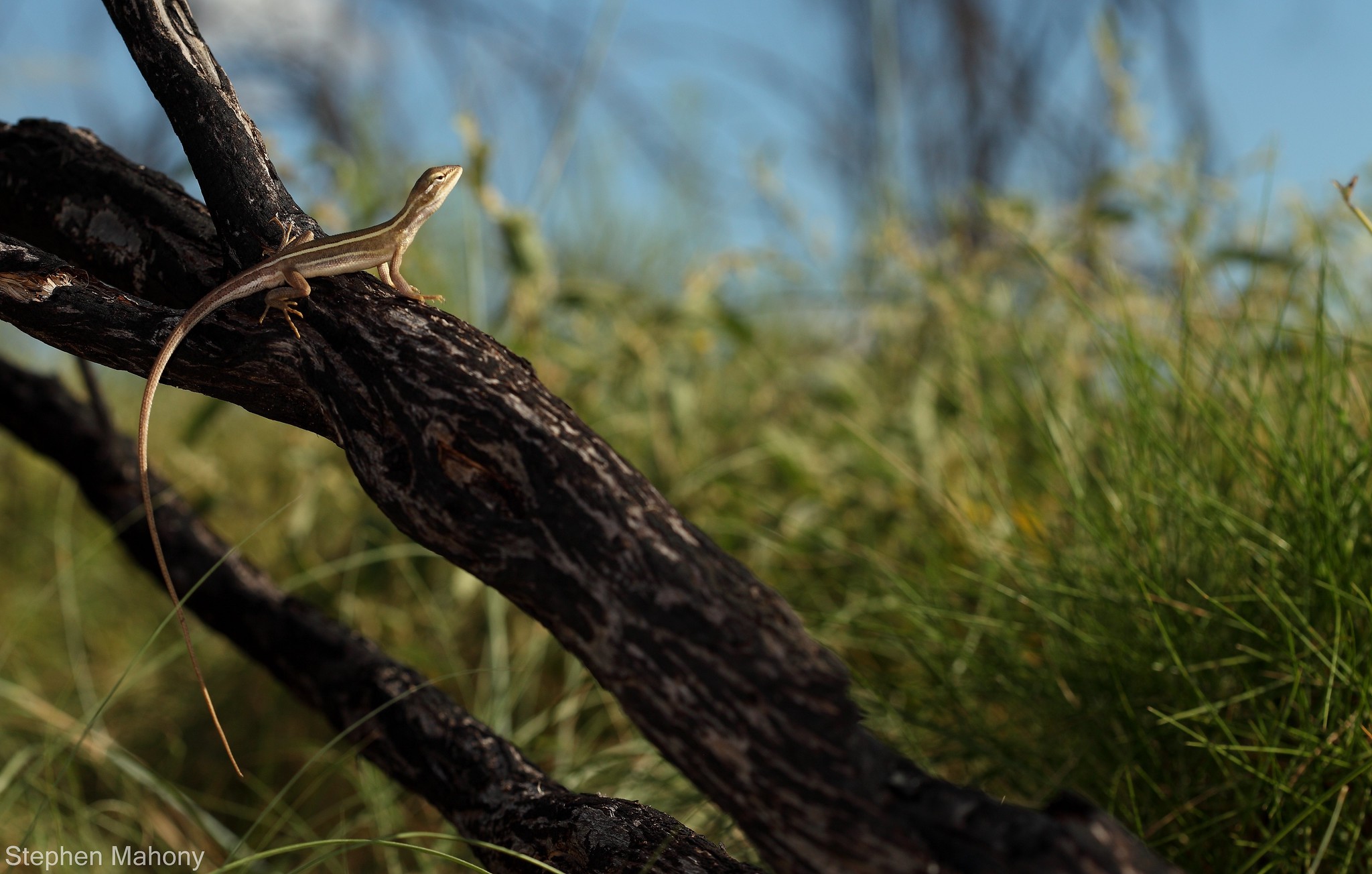 Dipoirphora paraconvergens by Stephen Mahony, on Flickr
Dipoirphora paraconvergens by Stephen Mahony, on Flickr
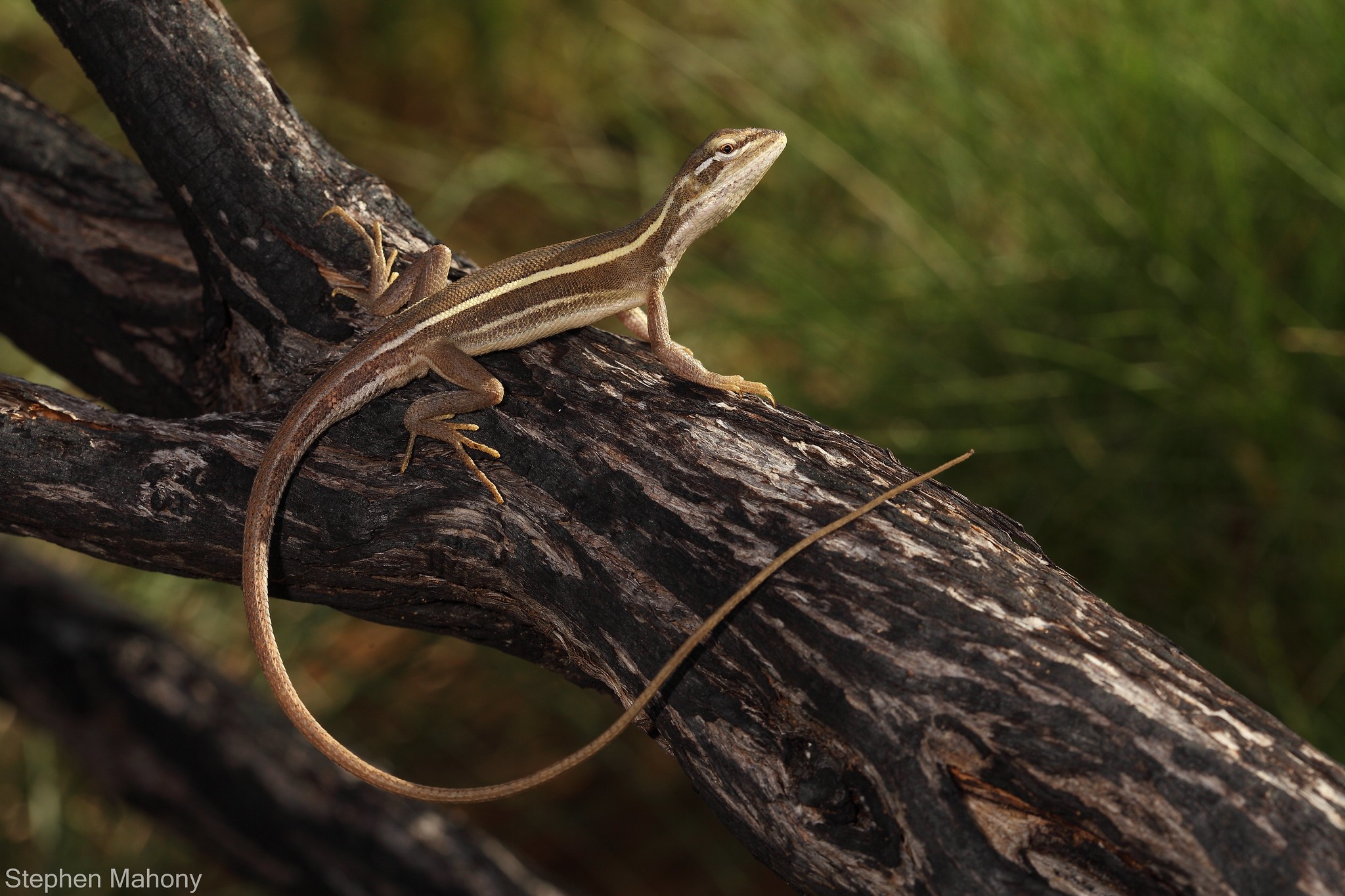 Dipoirphora paraconvergens by Stephen Mahony, on Flickr
Dipoirphora paraconvergens by Stephen Mahony, on Flickr
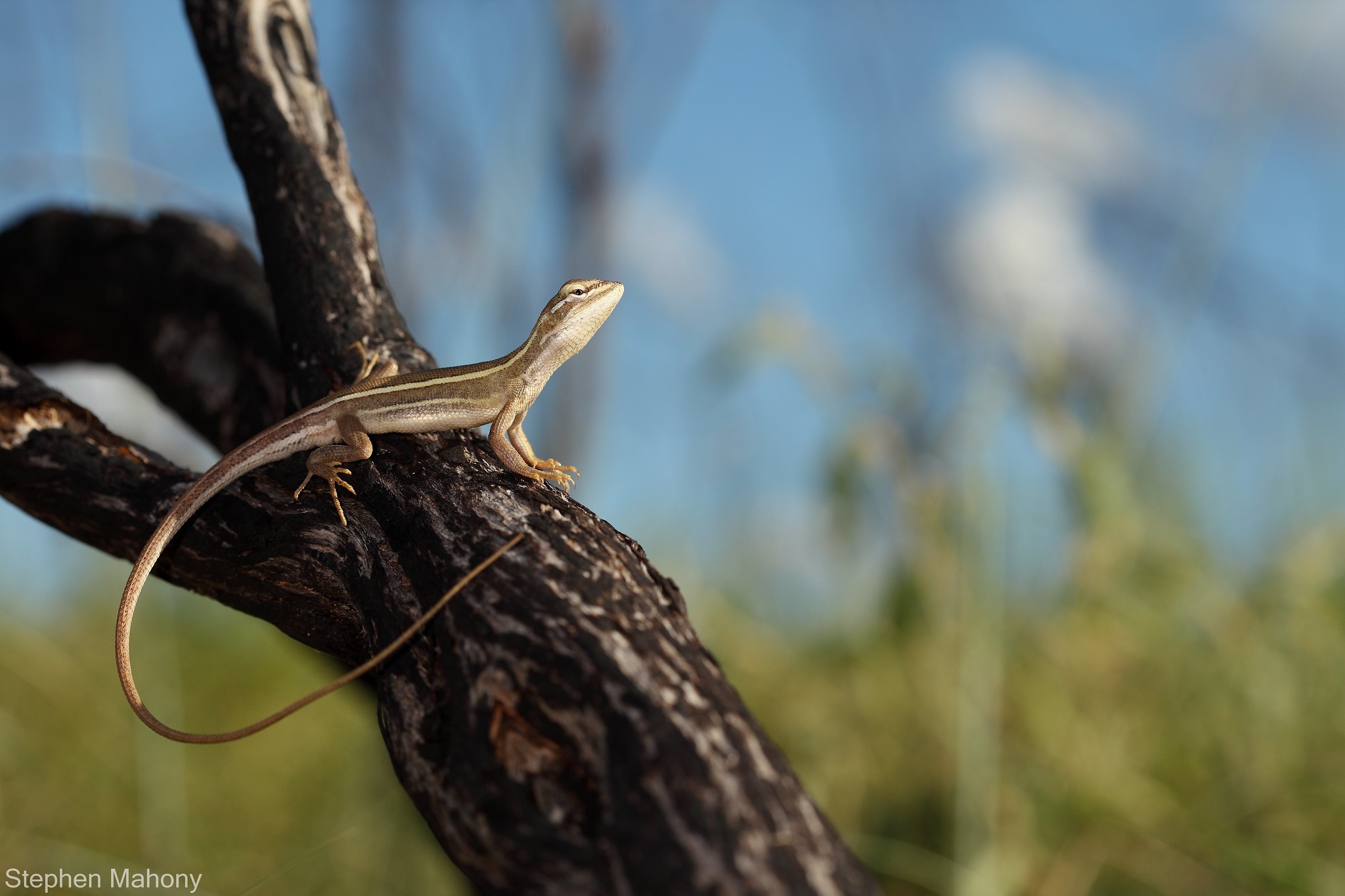 Dipoirphora paraconvergens by Stephen Mahony, on Flickr
Dipoirphora paraconvergens by Stephen Mahony, on Flickr
A variety of Geckos were found at night time.
Bynoe's Geckos are of course a staple of just about everywhere in Australia. Here being no exception.
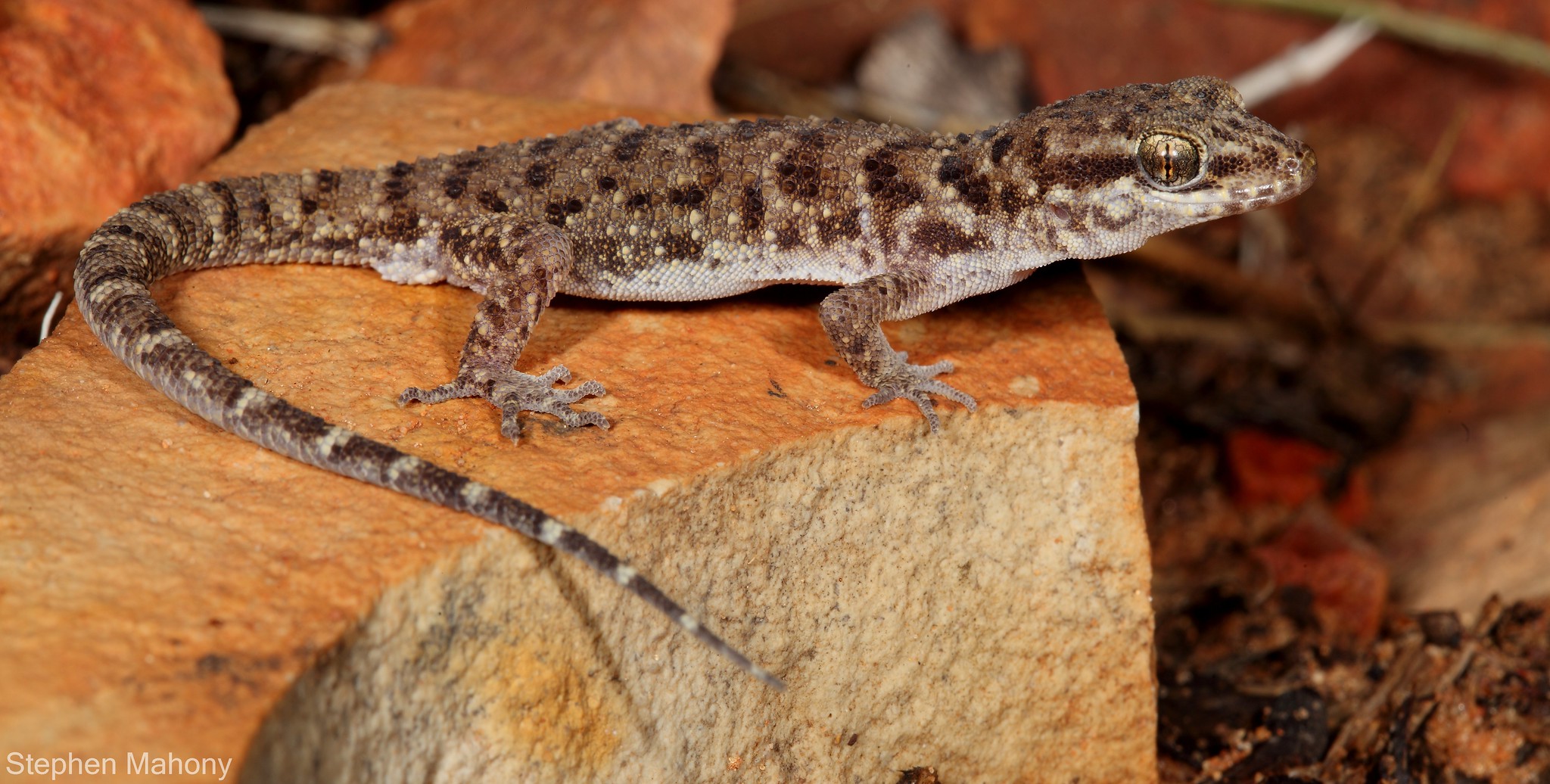 Heteronotia binoei by Stephen Mahony, on Flickr
Heteronotia binoei by Stephen Mahony, on Flickr
Northern Spiny-tailed Geckos were however the most common species observed on many of the trees and the roads at night.
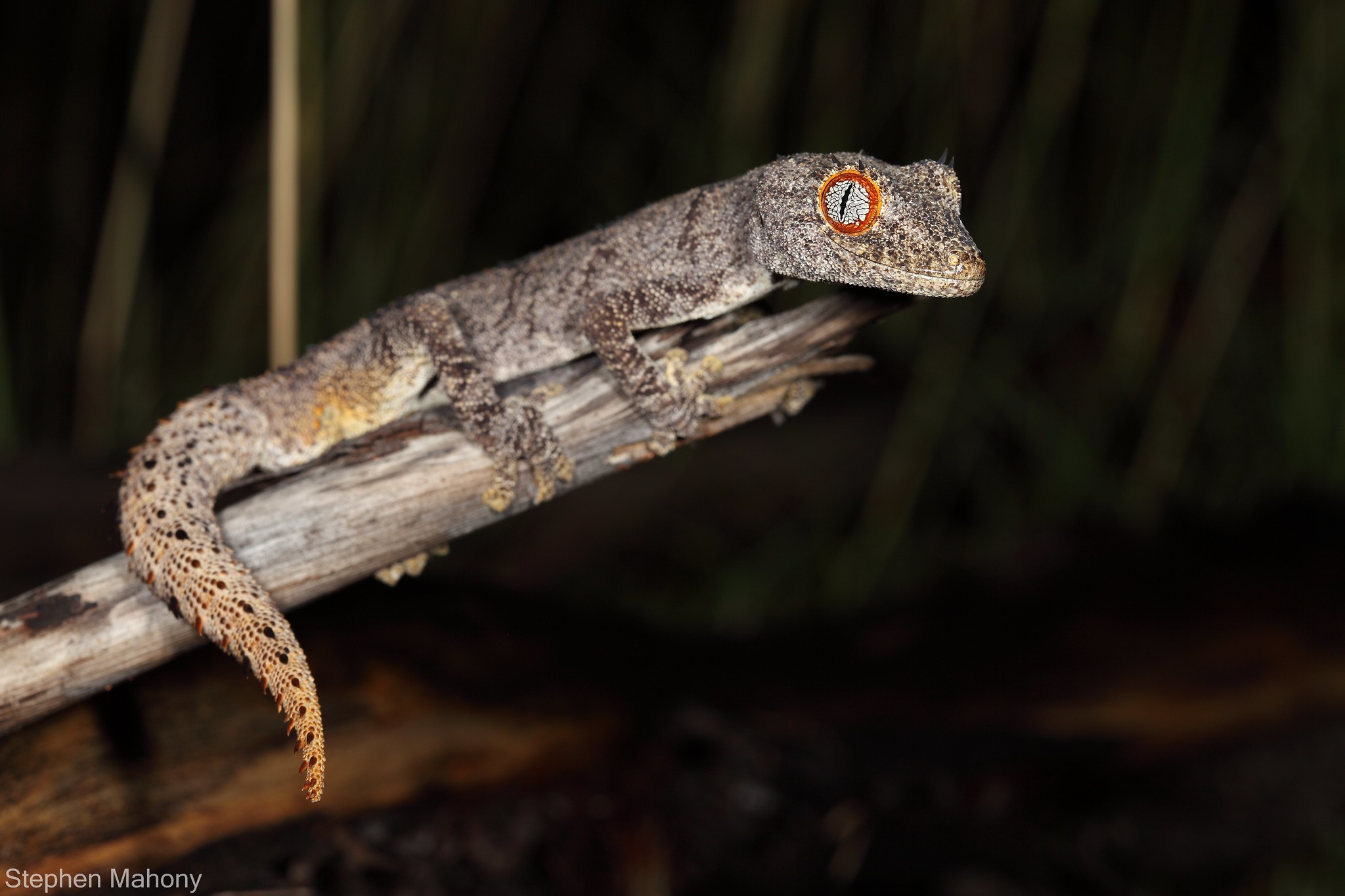 Strophurus ciliaris by Stephen Mahony, on Flickr
Strophurus ciliaris by Stephen Mahony, on Flickr
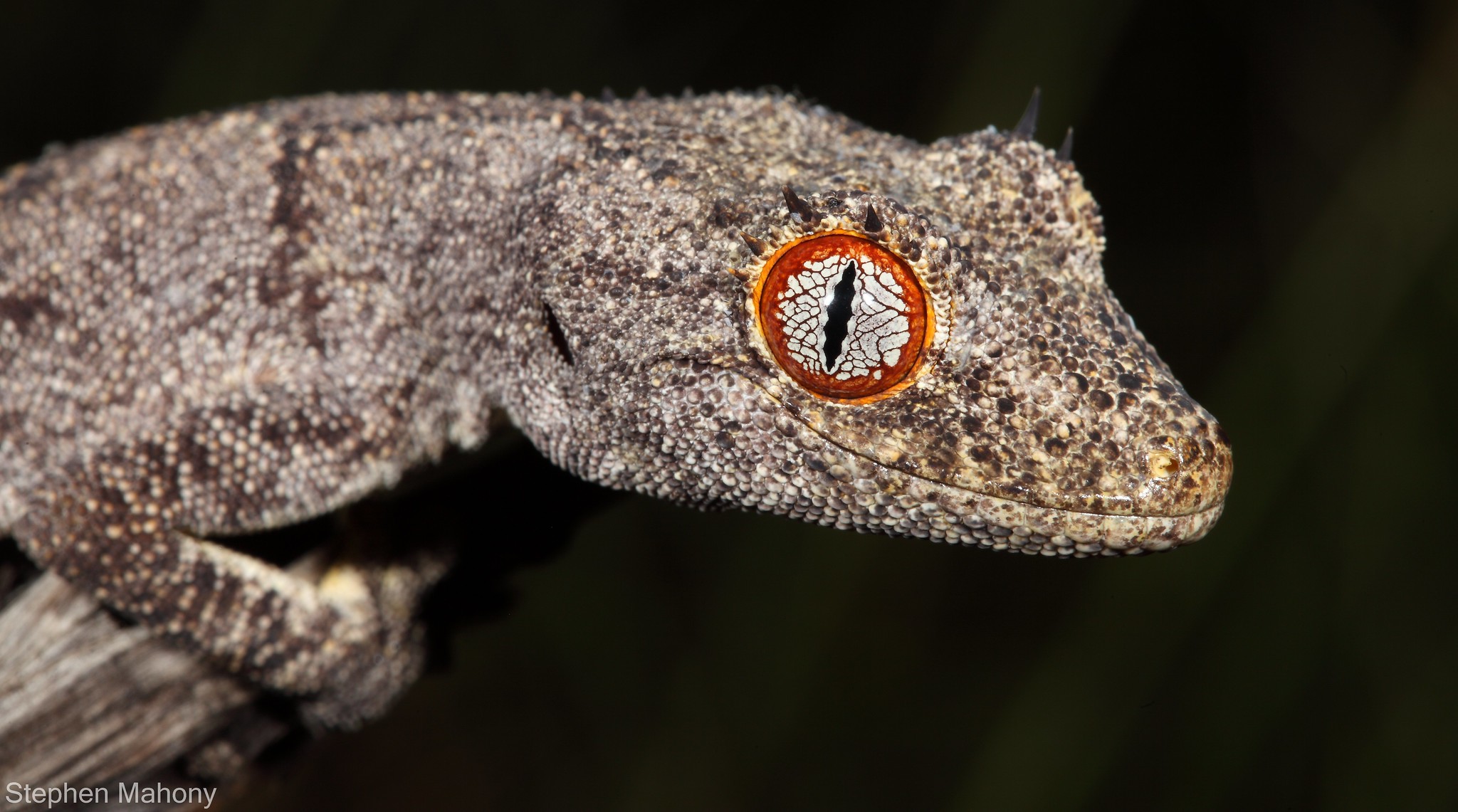 Strophurus ciliaris by Stephen Mahony, on Flickr
Strophurus ciliaris by Stephen Mahony, on Flickr
Both Northern and Western Hooded Scaly-foots were seen but only the Northern photographed.
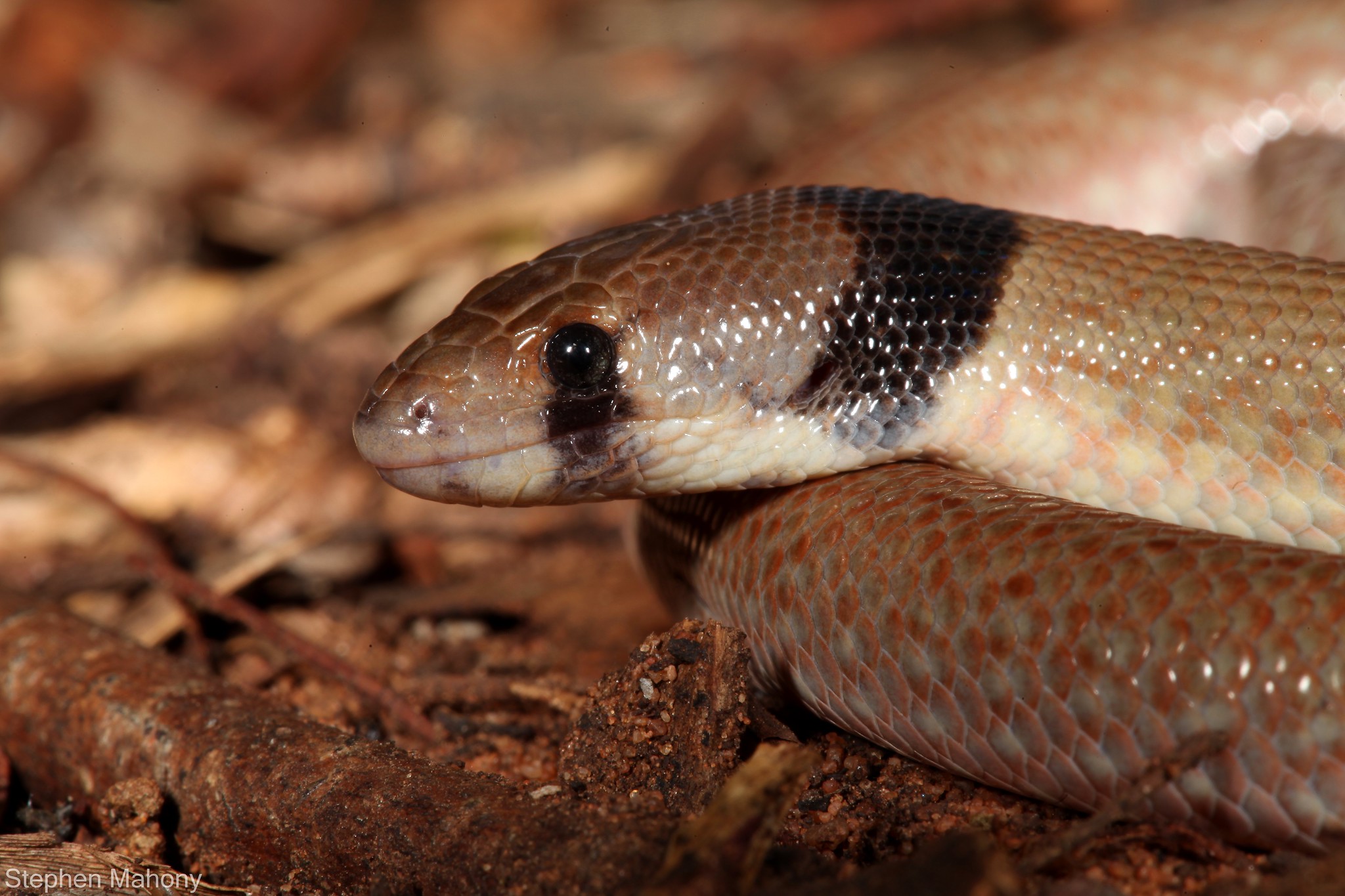 Pygopus steelescotti by Stephen Mahony, on Flickr
Pygopus steelescotti by Stephen Mahony, on Flickr
Three species of Delma were found all within a rather small area.
Sharp-snouted.
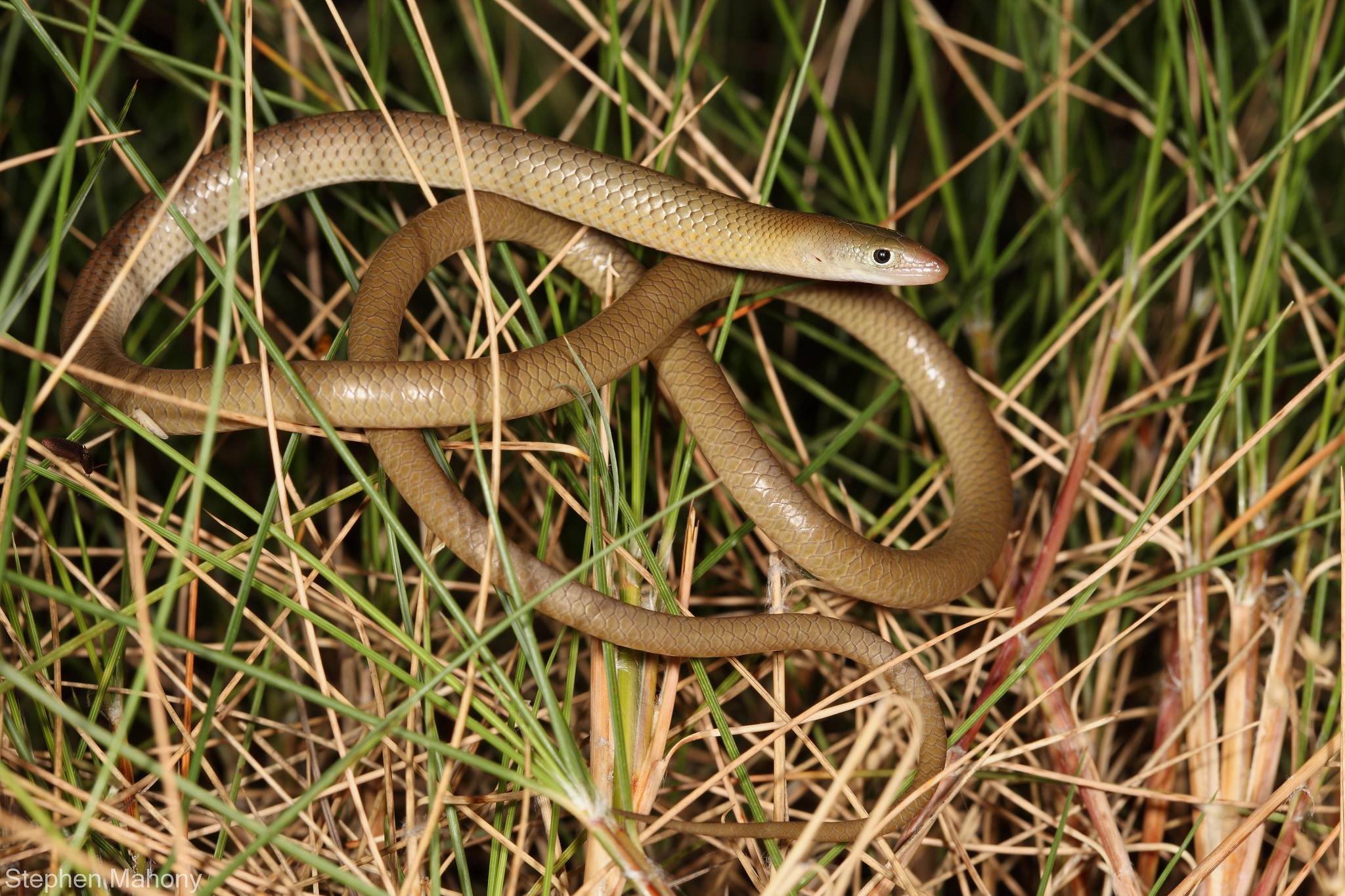 Delma nasuta by Stephen Mahony, on Flickr
Delma nasuta by Stephen Mahony, on Flickr
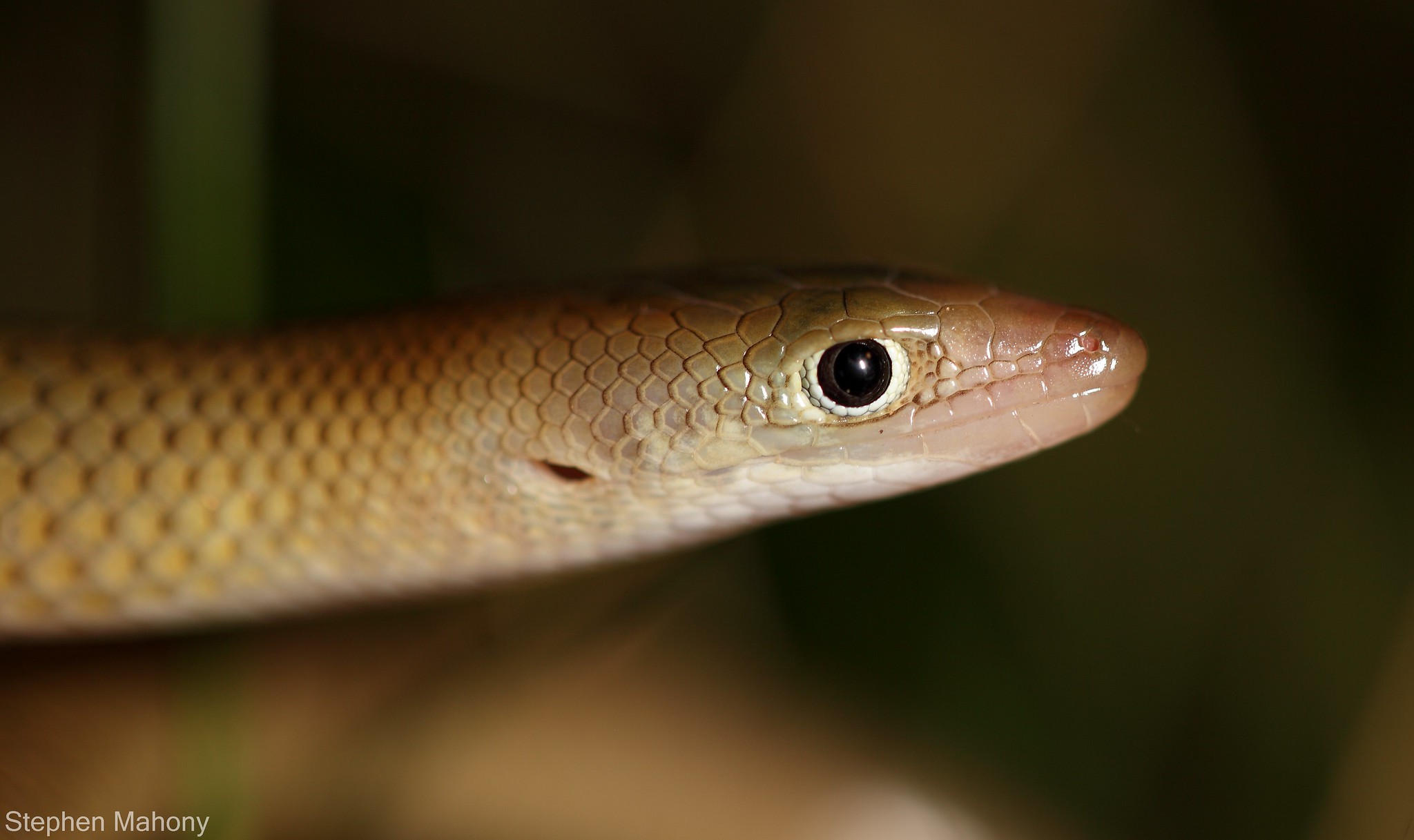 Delma nasuta by Stephen Mahony, on Flickr
Delma nasuta by Stephen Mahony, on Flickr
and Rusty-topped, were the most common.
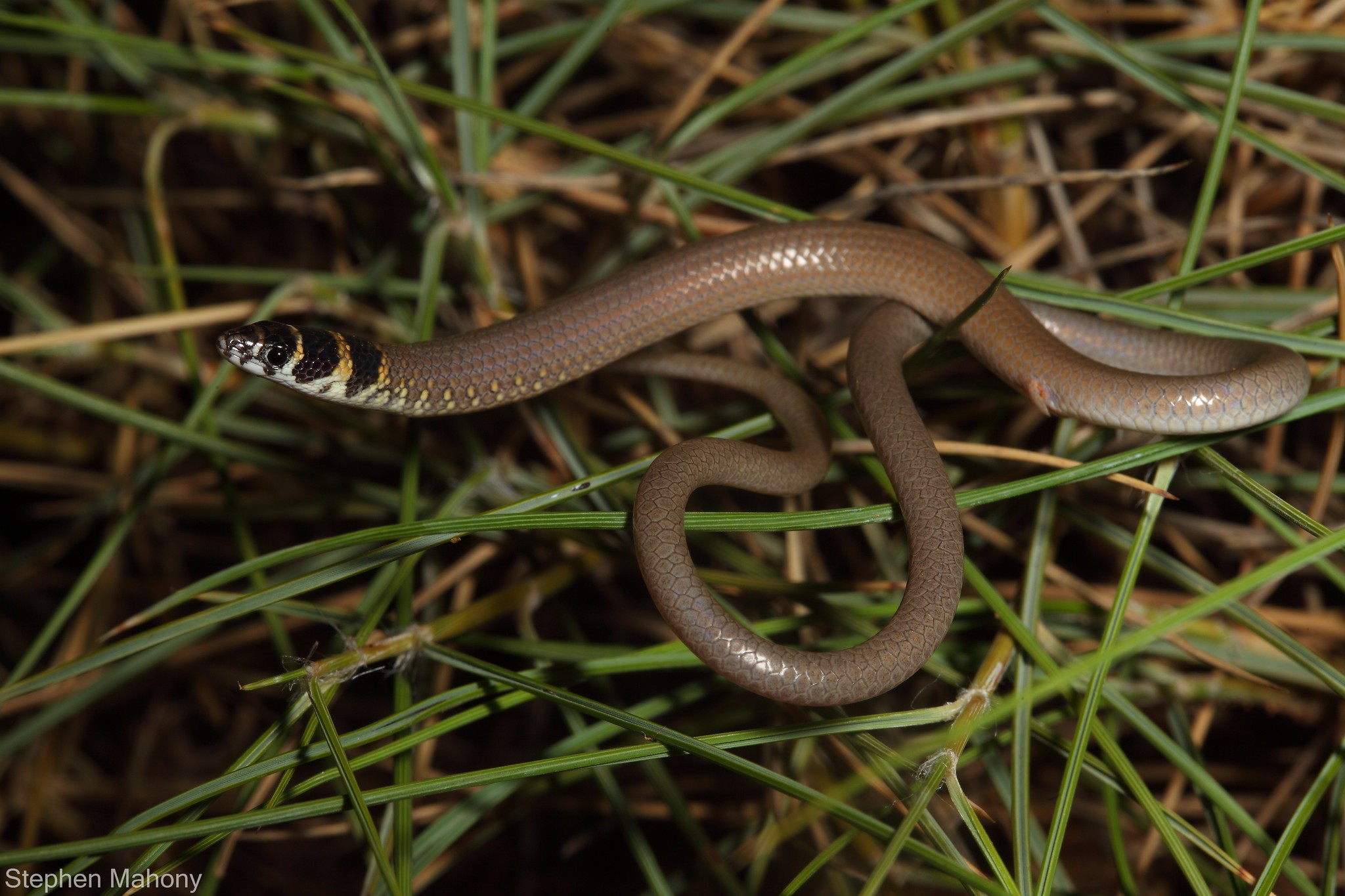 Delma borea by Stephen Mahony, on Flickr
Delma borea by Stephen Mahony, on Flickr
A small variety of skinks were present with many more seen and powering into the distance before being identified.
Sandy-loam Soil Ctenotus.
 Ctenotus serventyi by Stephen Mahony, on Flickr
Ctenotus serventyi by Stephen Mahony, on Flickr
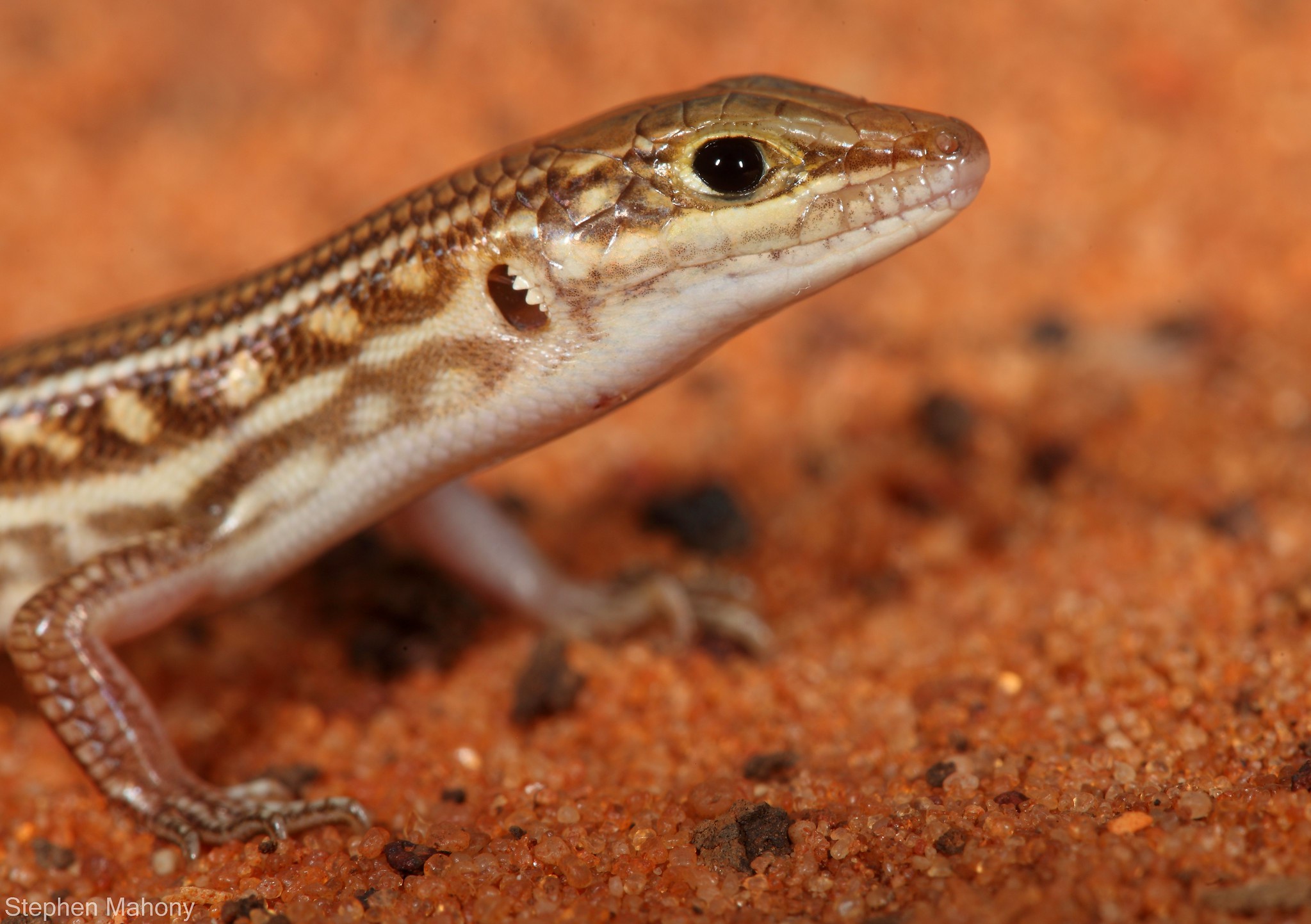 Ctenotus serventyi by Stephen Mahony, on Flickr
Ctenotus serventyi by Stephen Mahony, on Flickr
As well as the now described Ctenotus superciliaris
 Ctenotus superciliaris by Stephen Mahony, on Flickr
Ctenotus superciliaris by Stephen Mahony, on Flickr
 Ctenotus superciliaris by Stephen Mahony, on Flickr
Ctenotus superciliaris by Stephen Mahony, on Flickr
Within the garden Carlia were common but shy, usually under cultivated hedges with deep leaf-litter.
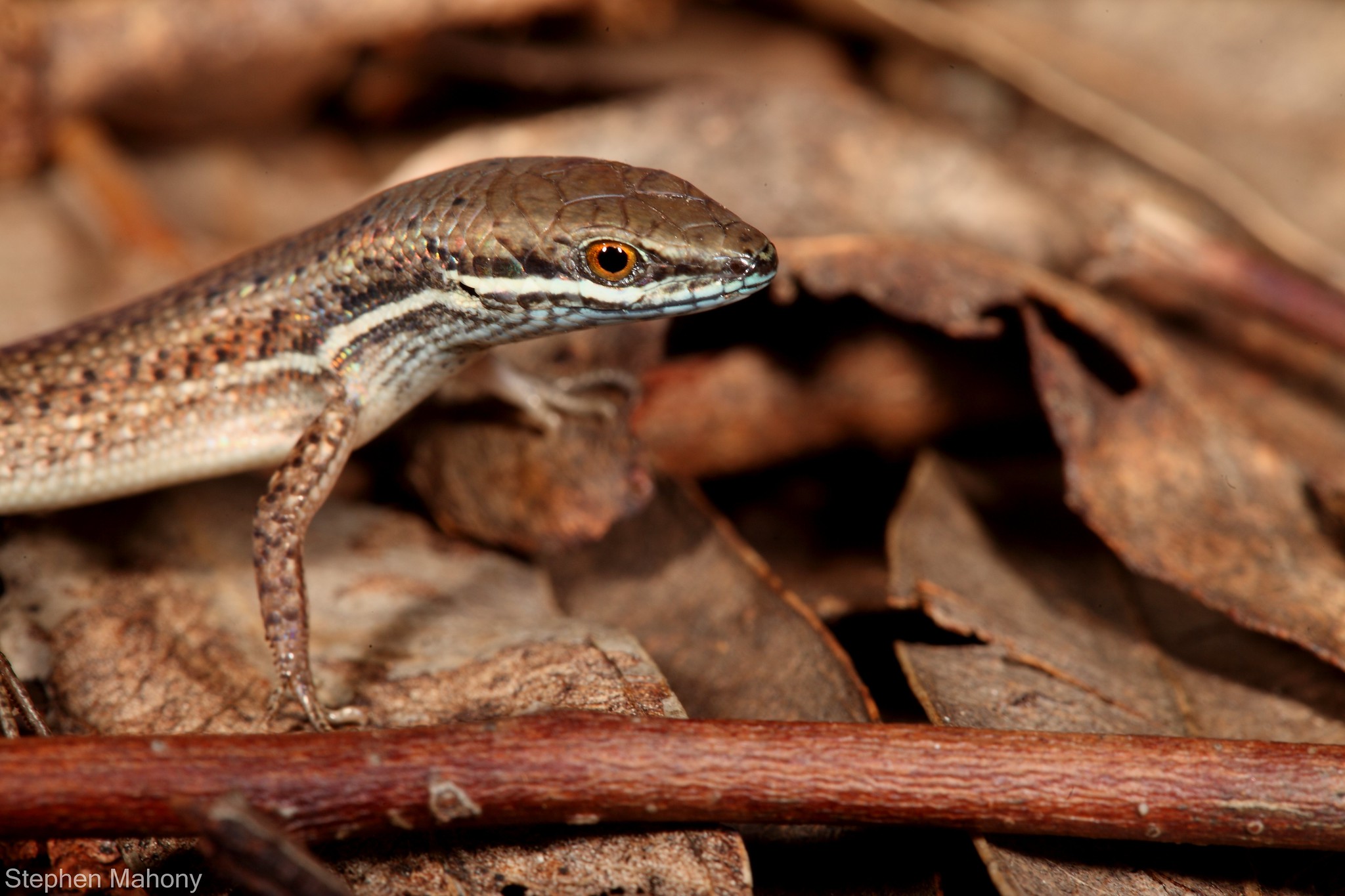 Carlia munda by Stephen Mahony, on Flickr
Carlia munda by Stephen Mahony, on Flickr
Northern Blue-tongues were also abundant, often making there way into house.
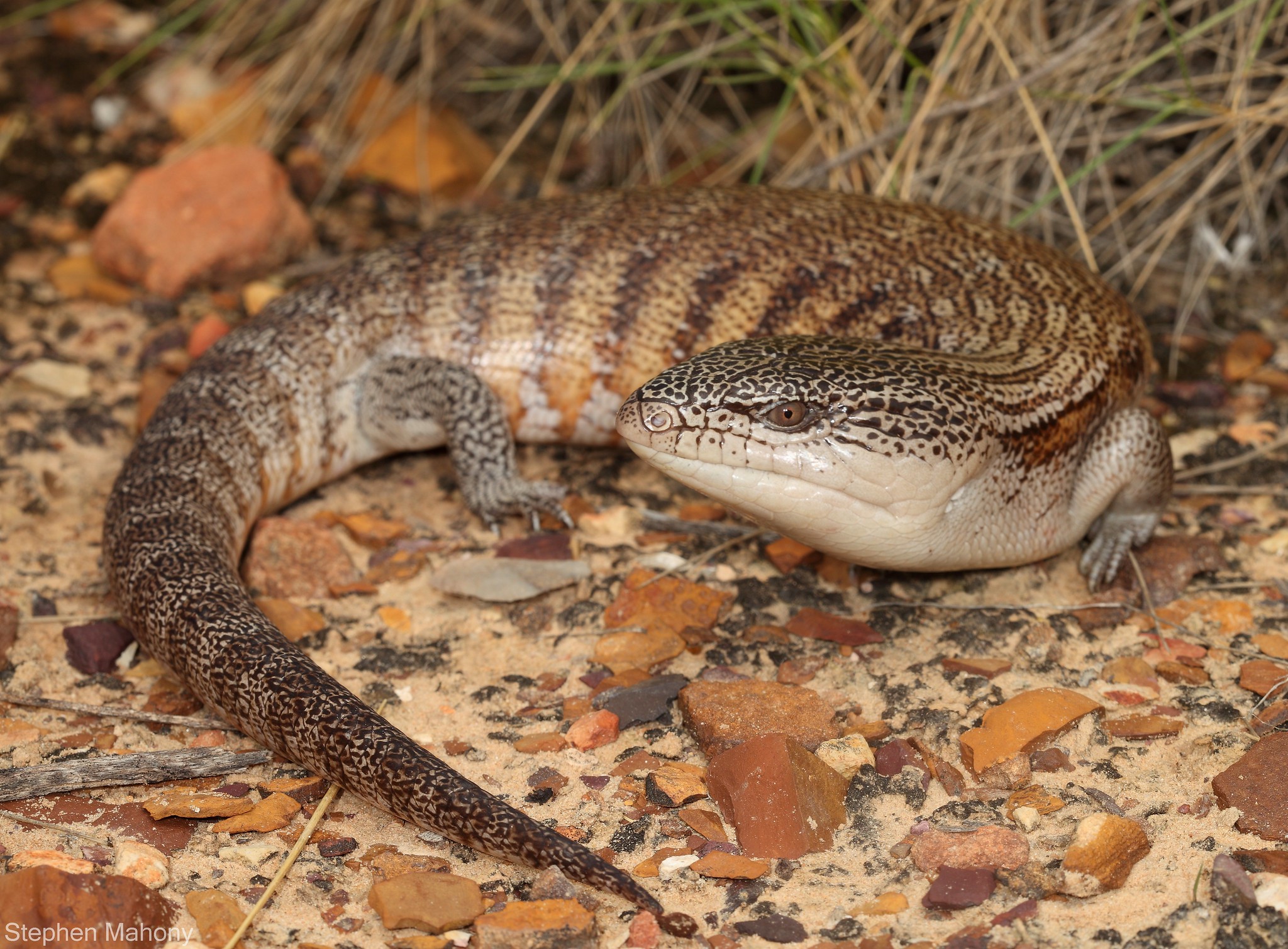 Tiliqua scincoides by Stephen Mahony, on Flickr
Tiliqua scincoides by Stephen Mahony, on Flickr
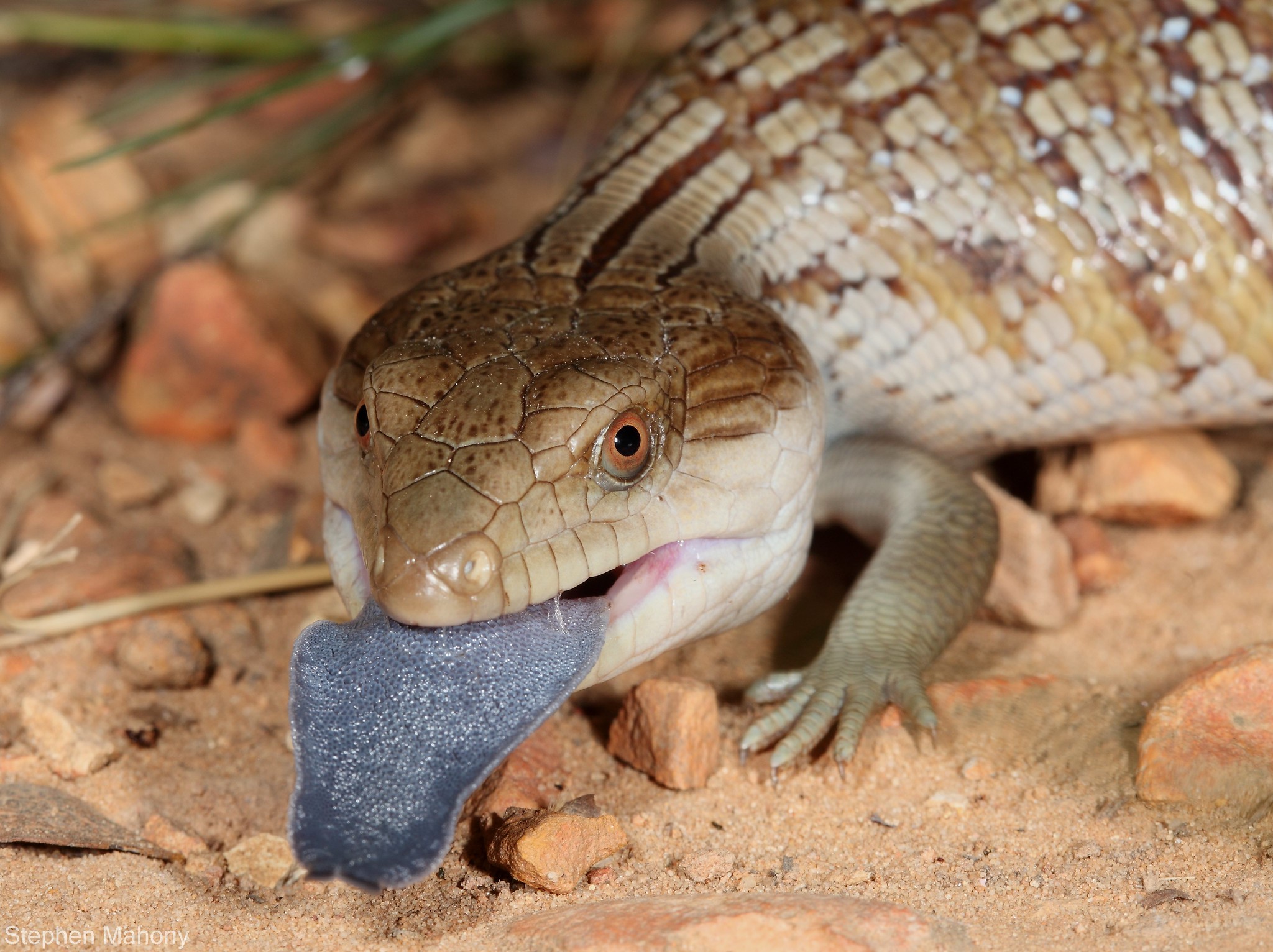 Tiliqua scincoides by Stephen Mahony, on Flickr
Tiliqua scincoides by Stephen Mahony, on Flickr
Away from the living area Central Blue-tongues were also sometimes found.
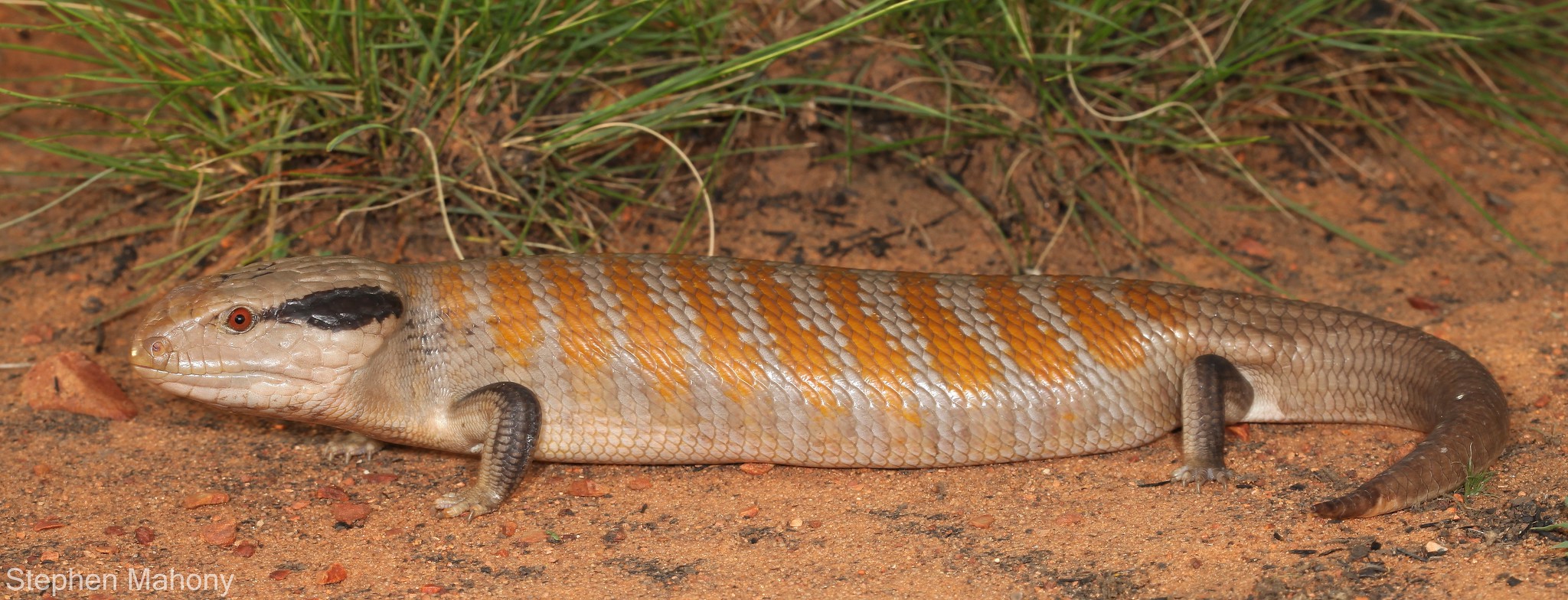 Tiliqua multifasciata by Stephen Mahony, on Flickr
Tiliqua multifasciata by Stephen Mahony, on Flickr
Of course I have saved the greatest for last. Small Brown Skinks.
Here one of the smallest, brownest and most common, Menetia greyii!
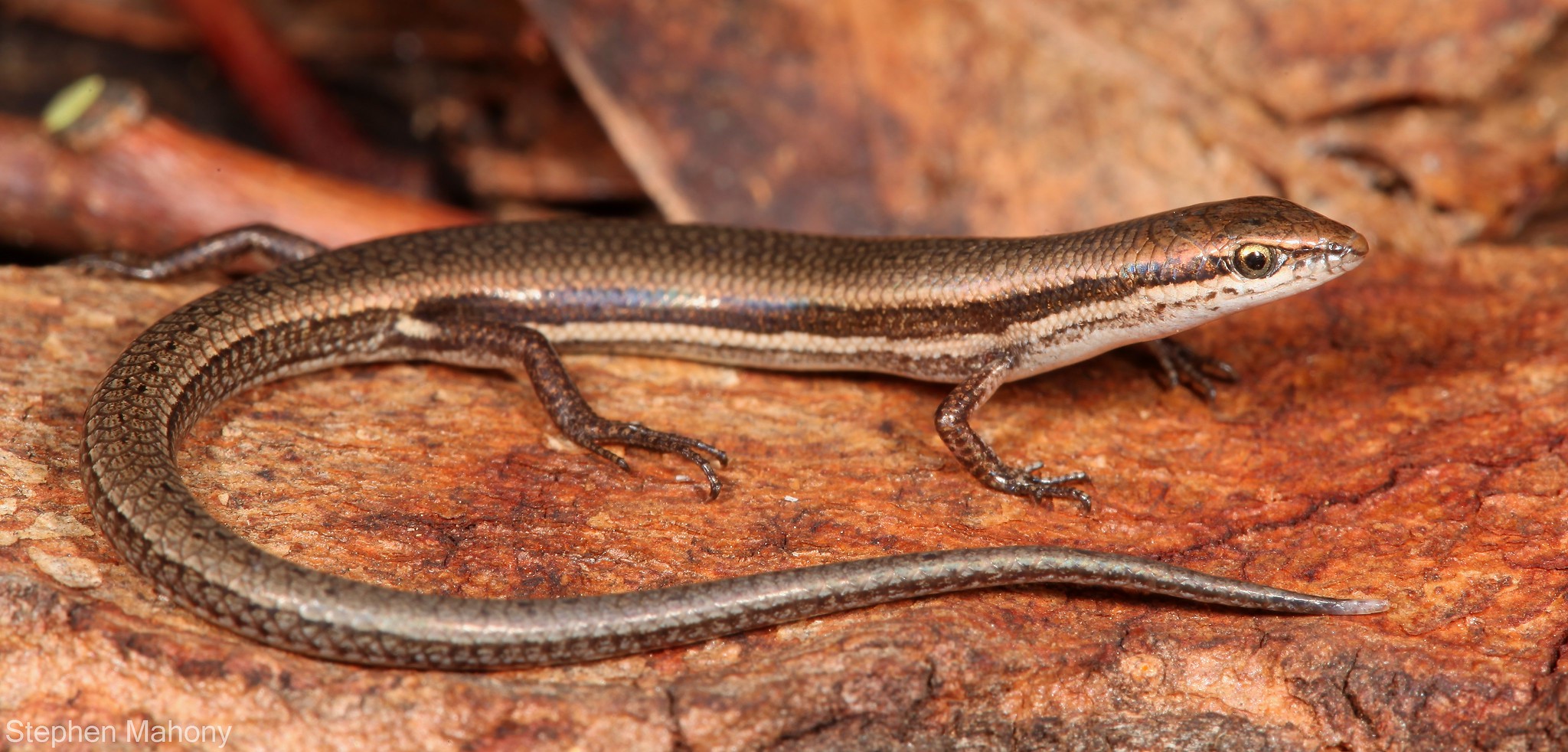 Menetia greyii by Stephen Mahony, on Flickr
Menetia greyii by Stephen Mahony, on Flickr
And even better Small, Brown, and with pretty colours. Proablepharus tenuis.
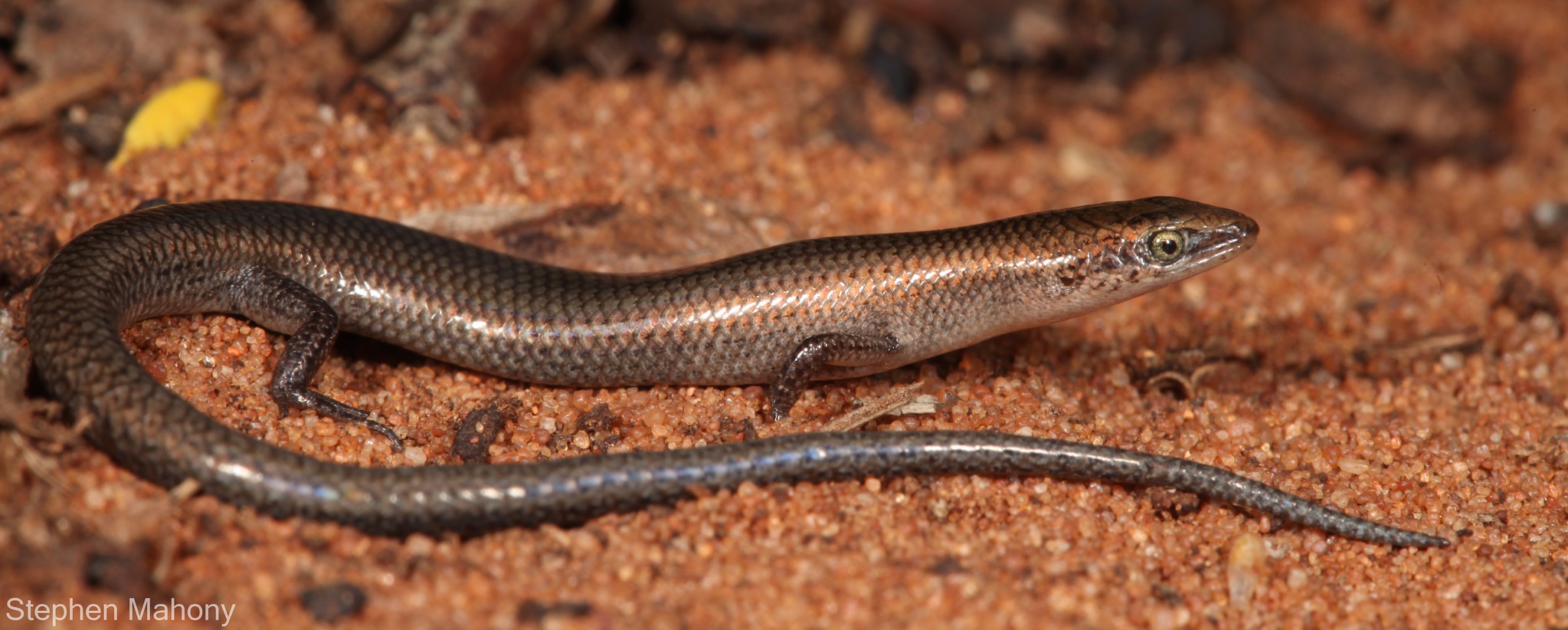 Proablepharus tenuis by Stephen Mahony, on Flickr
Proablepharus tenuis by Stephen Mahony, on Flickr
Red-throated male.
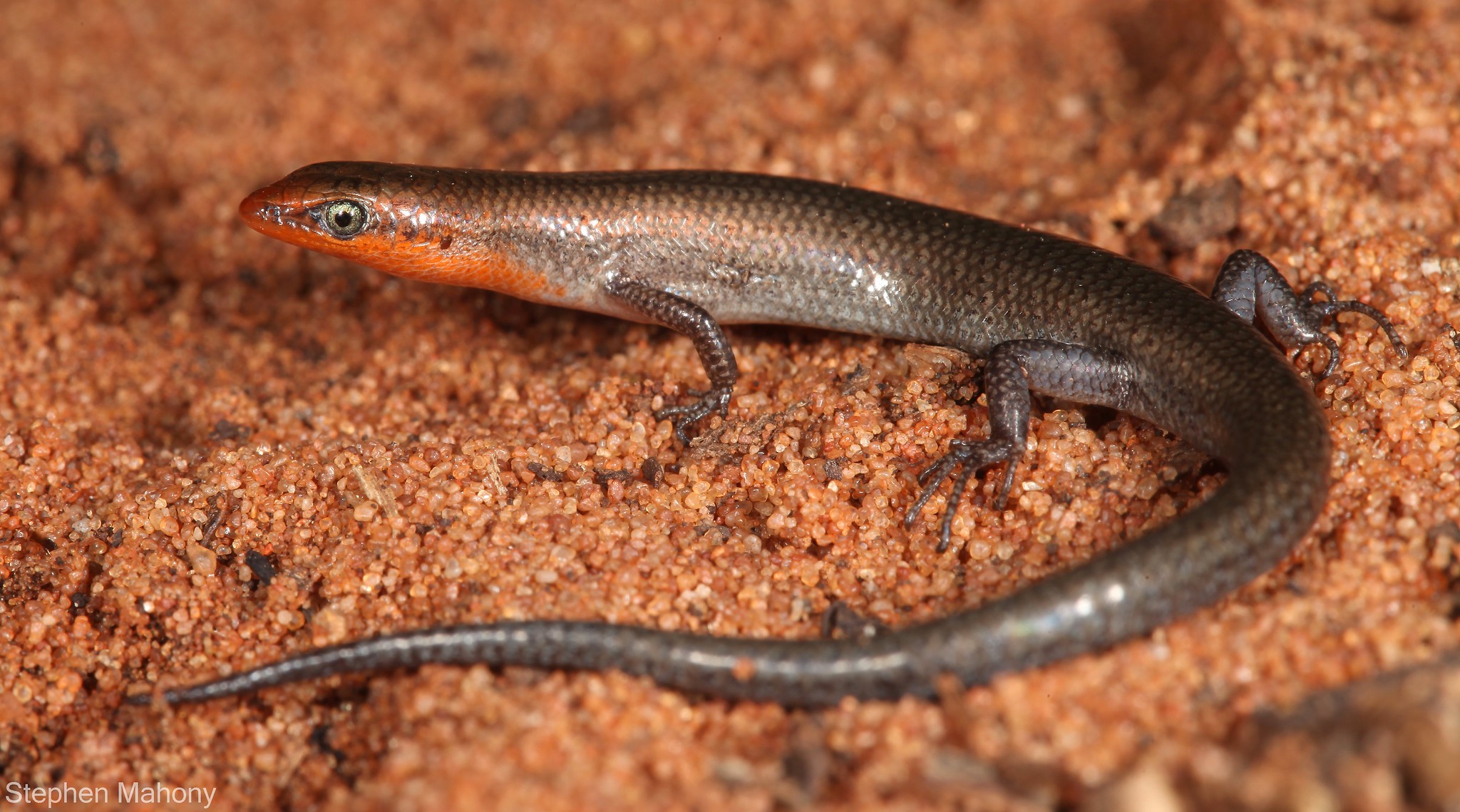 Proablepharus tenuis by Stephen Mahony, on Flickr
Proablepharus tenuis by Stephen Mahony, on Flickr
And that was the Kimberley. I'll have to go back to get more pictures of the far to numerous animals I missed but for now it was a rather enjoyable experience and I hope you enjoy the pictures.
I was here to assist an honours student working on V. panoptes and while this took up most of each day I also managed to get around a little of the local station I was staying on to see a variety of other cool things.
While the main project was on only Yellow-spotted Monitors a variety of other species were present and of interest.
Spotted Tree Monitors were commonly seen basking on tree trunks, but were usually quick to move into a hollow when disturbed. Occasionally they were found low hollow dead trees.
These animals apparently display pattern similar to typotypic animals from near Broome and likely represent 'true' V. scalaris.
 Varanus scalaris by Stephen Mahony, on Flickr
Varanus scalaris by Stephen Mahony, on Flickr Varanus scalaris by Stephen Mahony, on Flickr
Varanus scalaris by Stephen Mahony, on Flickr Varanus scalaris by Stephen Mahony, on Flickr
Varanus scalaris by Stephen Mahony, on FlickrAnother common varanid were Mitchell's Water Monitor. These were often observed clambering through mangrove-esque flooded riparian vegetation and jumping into the water as we trudged through such areas to find Yellow-spotted Monitors. While a dead Merten's Water Monitor was found on a local road none were observed in this habitat despite a large portion of time spent in it.
 Varanus mitchelli by Stephen Mahony, on Flickr
Varanus mitchelli by Stephen Mahony, on FlickrGould's Sand Monitors weren't found in our study area but were abundant around the area we were living in.
 Varanus gouldii by Stephen Mahony, on Flickr
Varanus gouldii by Stephen Mahony, on Flickr Varanus gouldii by Stephen Mahony, on Flickr
Varanus gouldii by Stephen Mahony, on FlickrThese have really nice pattern.
 Varanus gouldii by Stephen Mahony, on Flickr
Varanus gouldii by Stephen Mahony, on FlickrAnother monitor with nice pattern were the Ridge-tailed Monitors, sometimes found in the buildings where we were or the rocky outcrops around.
 Varanus acanthurus by Stephen Mahony, on Flickr
Varanus acanthurus by Stephen Mahony, on FlickrFew individual Elapids were seen of any species bar Mulgas (which I didn't photograph despite seeing 20+), despite this an ok diversity was present.
I saw two Northern Shovel-nosed Snakes both of which appeared very different in colour and pattern.
 Brachyurophis roperi by Stephen Mahony, on Flickr
Brachyurophis roperi by Stephen Mahony, on Flickr Brachyurophis roperi by Stephen Mahony, on Flickr
Brachyurophis roperi by Stephen Mahony, on FlickrLittle-spotted Snakes were found active on some nights.
 Suta punctata by Stephen Mahony, on Flickr
Suta punctata by Stephen Mahony, on Flickr Suta punctata by Stephen Mahony, on Flickr
Suta punctata by Stephen Mahony, on FlickrThis young Western Brown was on the Verandah before being moved further into the bush.
 Pseudonaja mengdeni by Stephen Mahony, on Flickr
Pseudonaja mengdeni by Stephen Mahony, on Flickr Pseudonaja mengdeni by Stephen Mahony, on Flickr
Pseudonaja mengdeni by Stephen Mahony, on FlickrMany dead Whip-snaked were seen on the road with one live one turning up also on the verandah.
 Demansia angusticeps by Stephen Mahony, on Flickr
Demansia angusticeps by Stephen Mahony, on Flickr Demansia angusticeps by Stephen Mahony, on Flickr
Demansia angusticeps by Stephen Mahony, on Flickr Demansia angusticeps by Stephen Mahony, on Flickr
Demansia angusticeps by Stephen Mahony, on FlickrBoth Black-headed and Stimpsons Pythons were also found in good numbers at night.
 Aspidites melanocephalus by Stephen Mahony, on Flickr
Aspidites melanocephalus by Stephen Mahony, on Flickr Aspidites melanocephalus by Stephen Mahony, on Flickr
Aspidites melanocephalus by Stephen Mahony, on Flickr Aspidites melanocephalus by Stephen Mahony, on Flickr
Aspidites melanocephalus by Stephen Mahony, on Flickr Aspidites melanocephalus by Stephen Mahony, on Flickr
Aspidites melanocephalus by Stephen Mahony, on Flickr Antaresia stimsoni by Stephen Mahony, on Flickr
Antaresia stimsoni by Stephen Mahony, on Flickr Antaresia stimsoni by Stephen Mahony, on Flickr
Antaresia stimsoni by Stephen Mahony, on FlickrOn arrival at the site we were immediately flooded in for 3 days. This was the largest rainfall the entire time I was there and was an awesome opportunity to see some frogs.
Burrowing frogs of several species were common, the Long-footed Burrowing Frogs were probably the most abundant.
 Cyclorana longipes by Stephen Mahony, on Flickr
Cyclorana longipes by Stephen Mahony, on FlickrMuch less common were the Hidden-ear Frogs found in slightly drier areas.
 Cyclorana cryptotis by Stephen Mahony, on Flickr
Cyclorana cryptotis by Stephen Mahony, on Flickr Cyclorana cryptotis by Stephen Mahony, on Flickr
Cyclorana cryptotis by Stephen Mahony, on FlickrThe area was arid enough to yield these Desert Spade-foots which were nicely coloured and hard to do justice in a picture.
 Notaden nicholsii by Stephen Mahony, on Flickr
Notaden nicholsii by Stephen Mahony, on FlickrSeveral tree frogs such as Green Tree Frogs, Roth's Tree Frog and Desert Tree Frogs were common, however the only one I photographed was the Pallid Frog.
 Litoria pallida by Stephen Mahony, on Flickr
Litoria pallida by Stephen Mahony, on Flickr Litoria pallida by Stephen Mahony, on Flickr
Litoria pallida by Stephen Mahony, on FlickrVery few Uperoleia were actually found.
This U. lithomoda was found randomly walking around in a rather dry area with no other frogs.
 Uperoleia lithomoda by Stephen Mahony, on Flickr
Uperoleia lithomoda by Stephen Mahony, on FlickrAt the time U. stridera was only very recently described and we managed to track one down after the heaviest rain in a flooded area.
 Uperoleia stridera by Stephen Mahony, on Flickr
Uperoleia stridera by Stephen Mahony, on Flickr Carpenter Frogs were also found in a couple places, this individual is actually from the East Kimberley before we drove South.
 Limnodynastes lignarius by Stephen Mahony, on Flickr
Limnodynastes lignarius by Stephen Mahony, on FlickrSeveral dragons were present around both our living area and study site. The most spectacular probably being the iconic Frill-necked Lizard.
 Chlamydosaurus kingii by Stephen Mahony, on Flickr
Chlamydosaurus kingii by Stephen Mahony, on Flickr Chlamydosaurus kingii by Stephen Mahony, on Flickr
Chlamydosaurus kingii by Stephen Mahony, on FlickrFinding a Dwarf Bearded Dragon got my hopes up initially but it was not-really-surprisingly a P. minor not the far less common Small-scaled Bearded Dragon.
 Pogona minor by Stephen Mahony, on Flickr
Pogona minor by Stephen Mahony, on Flickr Pogona minor by Stephen Mahony, on Flickr
Pogona minor by Stephen Mahony, on Flickr Pogona minor by Stephen Mahony, on Flickr
Pogona minor by Stephen Mahony, on Flickr Pogona minor by Stephen Mahony, on Flickr
Pogona minor by Stephen Mahony, on FlickrThese Yellow-sided Two-lined Dragons were abundant in savannah woodland with long grass.
 Diporiphora magna by Stephen Mahony, on Flickr
Diporiphora magna by Stephen Mahony, on Flickr Diporiphora magna by Stephen Mahony, on Flickr
Diporiphora magna by Stephen Mahony, on FlickrWhile these Grey-striped Western Desert Dragons were found in the dry sandy spinifex areas.
 Dipoirphora paraconvergens by Stephen Mahony, on Flickr
Dipoirphora paraconvergens by Stephen Mahony, on Flickr Dipoirphora paraconvergens by Stephen Mahony, on Flickr
Dipoirphora paraconvergens by Stephen Mahony, on Flickr Dipoirphora paraconvergens by Stephen Mahony, on Flickr
Dipoirphora paraconvergens by Stephen Mahony, on FlickrA variety of Geckos were found at night time.
Bynoe's Geckos are of course a staple of just about everywhere in Australia. Here being no exception.
 Heteronotia binoei by Stephen Mahony, on Flickr
Heteronotia binoei by Stephen Mahony, on FlickrNorthern Spiny-tailed Geckos were however the most common species observed on many of the trees and the roads at night.
 Strophurus ciliaris by Stephen Mahony, on Flickr
Strophurus ciliaris by Stephen Mahony, on Flickr Strophurus ciliaris by Stephen Mahony, on Flickr
Strophurus ciliaris by Stephen Mahony, on FlickrBoth Northern and Western Hooded Scaly-foots were seen but only the Northern photographed.
 Pygopus steelescotti by Stephen Mahony, on Flickr
Pygopus steelescotti by Stephen Mahony, on FlickrThree species of Delma were found all within a rather small area.
Sharp-snouted.
 Delma nasuta by Stephen Mahony, on Flickr
Delma nasuta by Stephen Mahony, on Flickr Delma nasuta by Stephen Mahony, on Flickr
Delma nasuta by Stephen Mahony, on Flickrand Rusty-topped, were the most common.
 Delma borea by Stephen Mahony, on Flickr
Delma borea by Stephen Mahony, on FlickrA small variety of skinks were present with many more seen and powering into the distance before being identified.
Sandy-loam Soil Ctenotus.
 Ctenotus serventyi by Stephen Mahony, on Flickr
Ctenotus serventyi by Stephen Mahony, on Flickr Ctenotus serventyi by Stephen Mahony, on Flickr
Ctenotus serventyi by Stephen Mahony, on FlickrAs well as the now described Ctenotus superciliaris
 Ctenotus superciliaris by Stephen Mahony, on Flickr
Ctenotus superciliaris by Stephen Mahony, on Flickr Ctenotus superciliaris by Stephen Mahony, on Flickr
Ctenotus superciliaris by Stephen Mahony, on FlickrWithin the garden Carlia were common but shy, usually under cultivated hedges with deep leaf-litter.
 Carlia munda by Stephen Mahony, on Flickr
Carlia munda by Stephen Mahony, on FlickrNorthern Blue-tongues were also abundant, often making there way into house.
 Tiliqua scincoides by Stephen Mahony, on Flickr
Tiliqua scincoides by Stephen Mahony, on Flickr Tiliqua scincoides by Stephen Mahony, on Flickr
Tiliqua scincoides by Stephen Mahony, on FlickrAway from the living area Central Blue-tongues were also sometimes found.
 Tiliqua multifasciata by Stephen Mahony, on Flickr
Tiliqua multifasciata by Stephen Mahony, on FlickrOf course I have saved the greatest for last. Small Brown Skinks.
Here one of the smallest, brownest and most common, Menetia greyii!
 Menetia greyii by Stephen Mahony, on Flickr
Menetia greyii by Stephen Mahony, on FlickrAnd even better Small, Brown, and with pretty colours. Proablepharus tenuis.
 Proablepharus tenuis by Stephen Mahony, on Flickr
Proablepharus tenuis by Stephen Mahony, on FlickrRed-throated male.
 Proablepharus tenuis by Stephen Mahony, on Flickr
Proablepharus tenuis by Stephen Mahony, on FlickrAnd that was the Kimberley. I'll have to go back to get more pictures of the far to numerous animals I missed but for now it was a rather enjoyable experience and I hope you enjoy the pictures.



